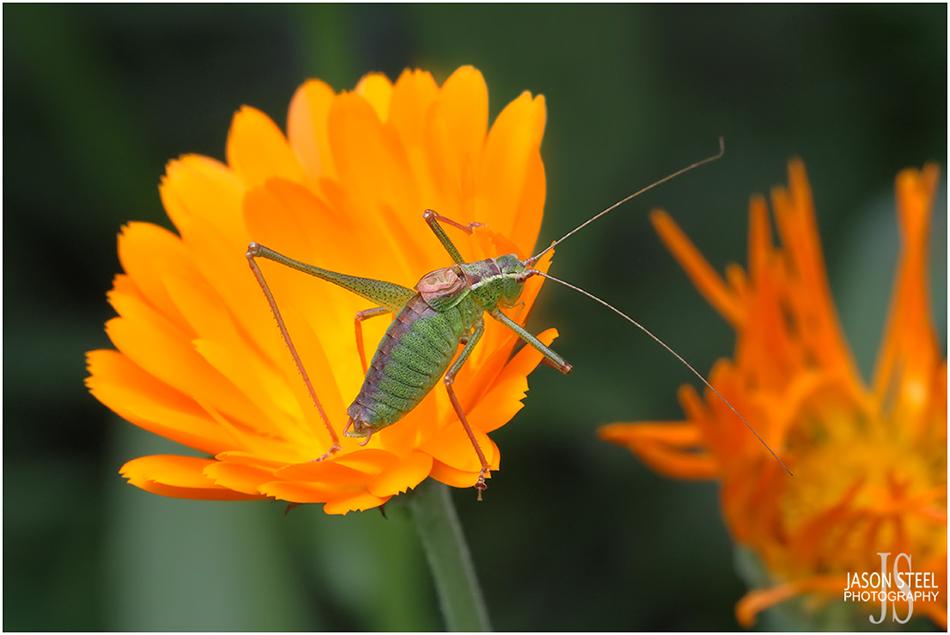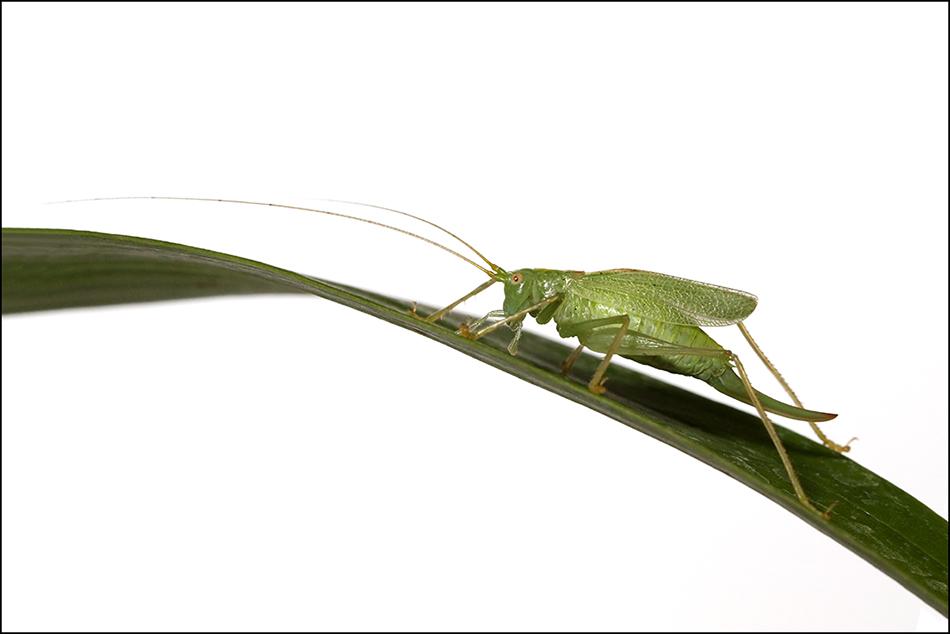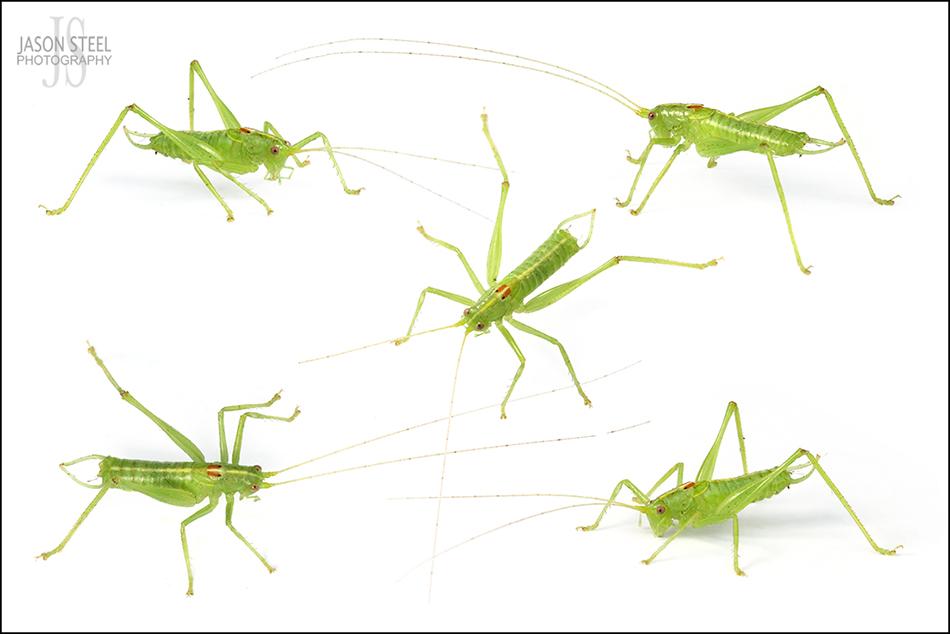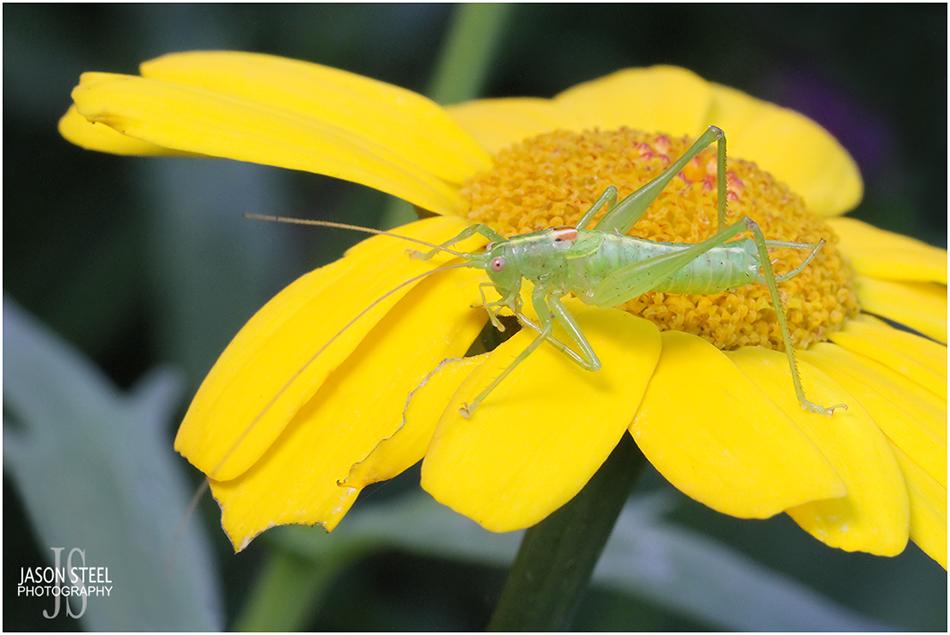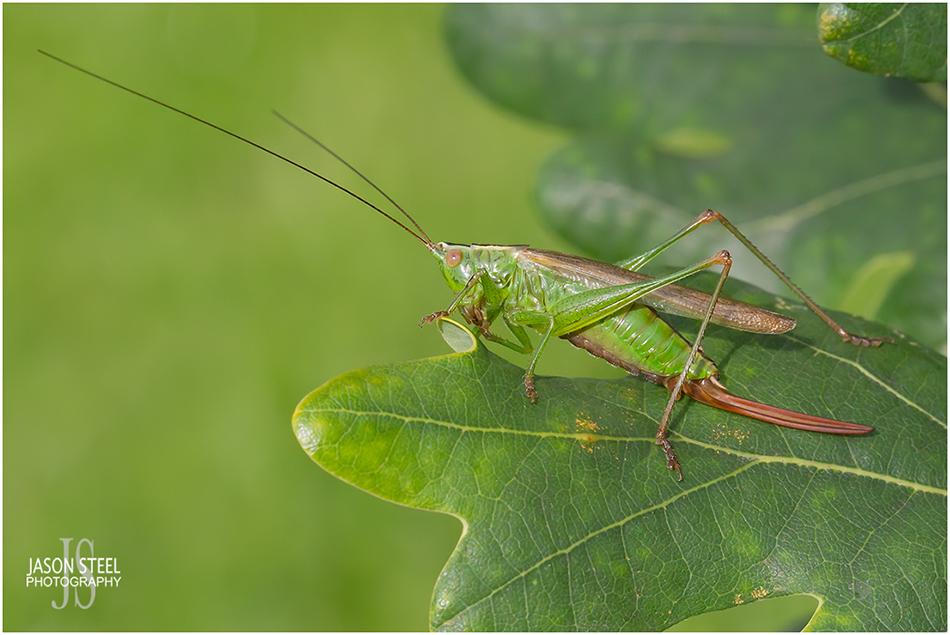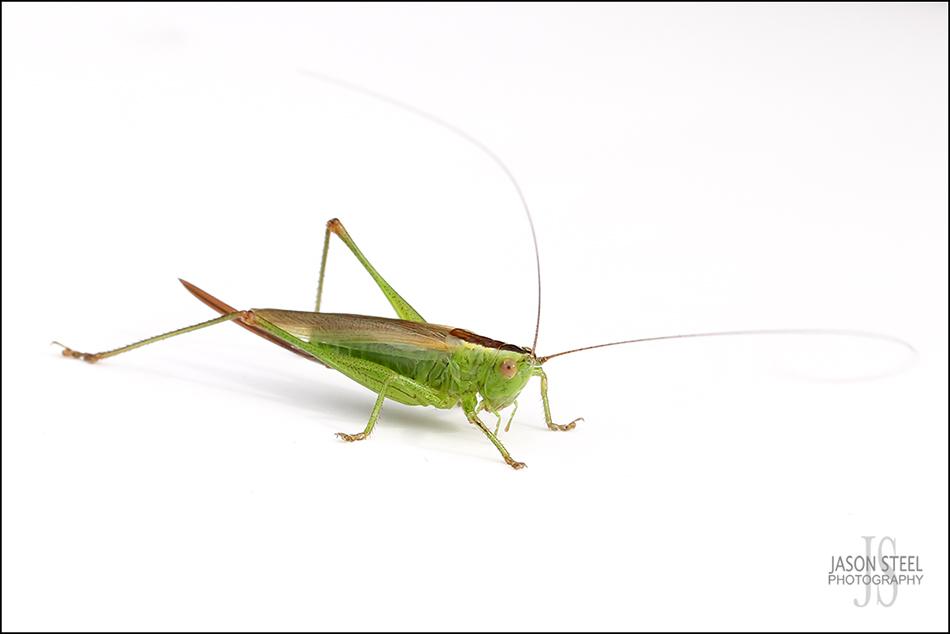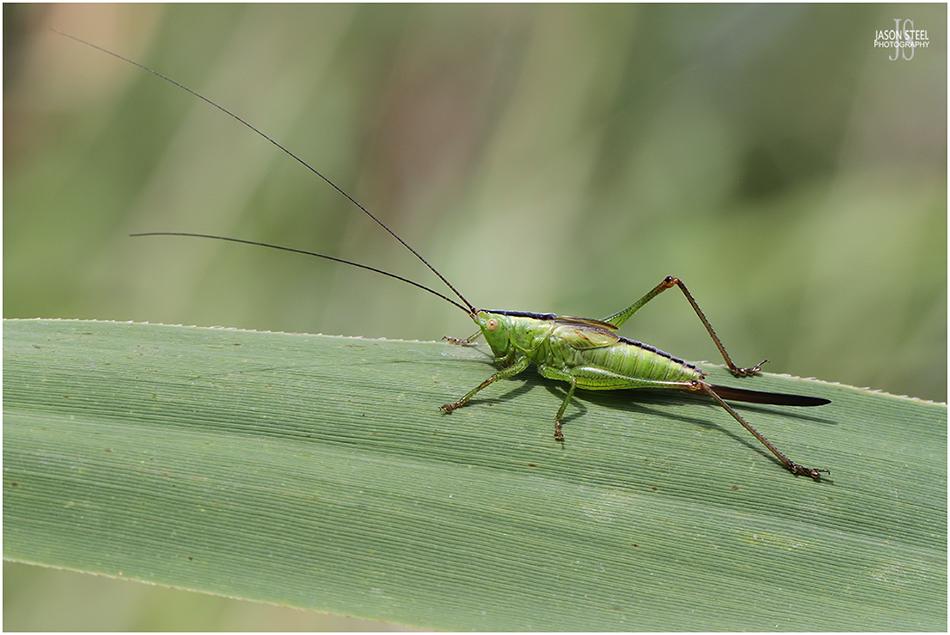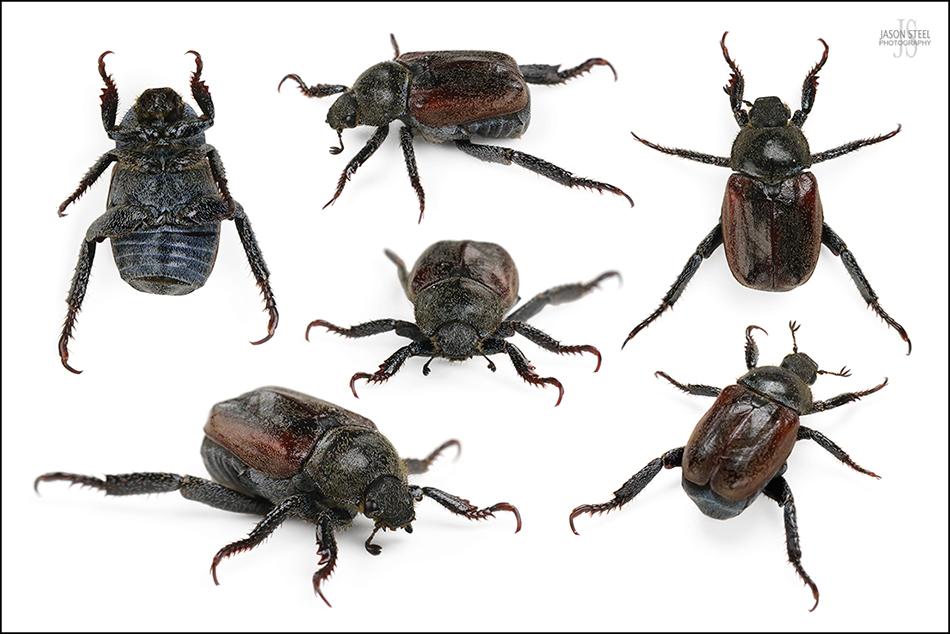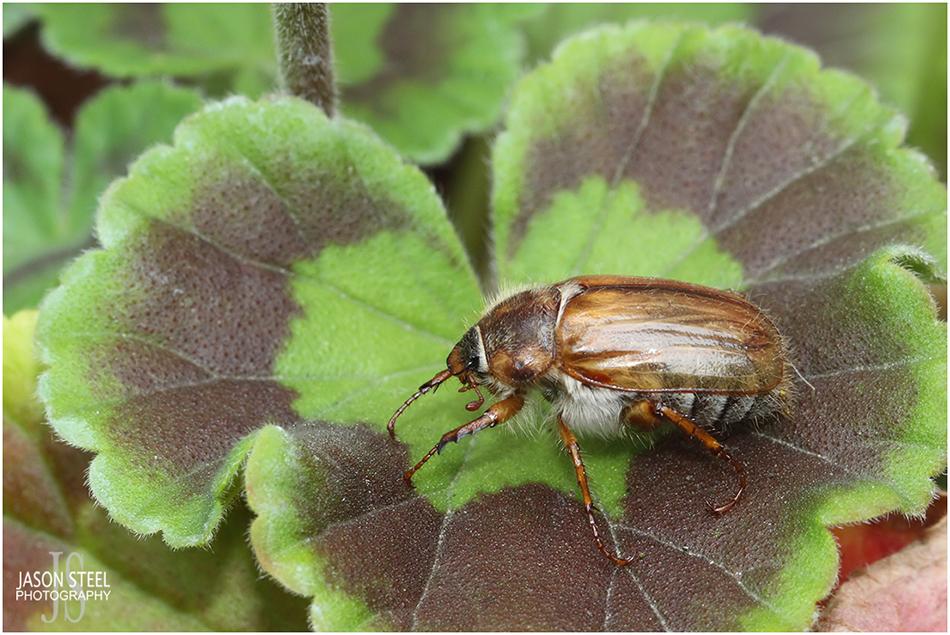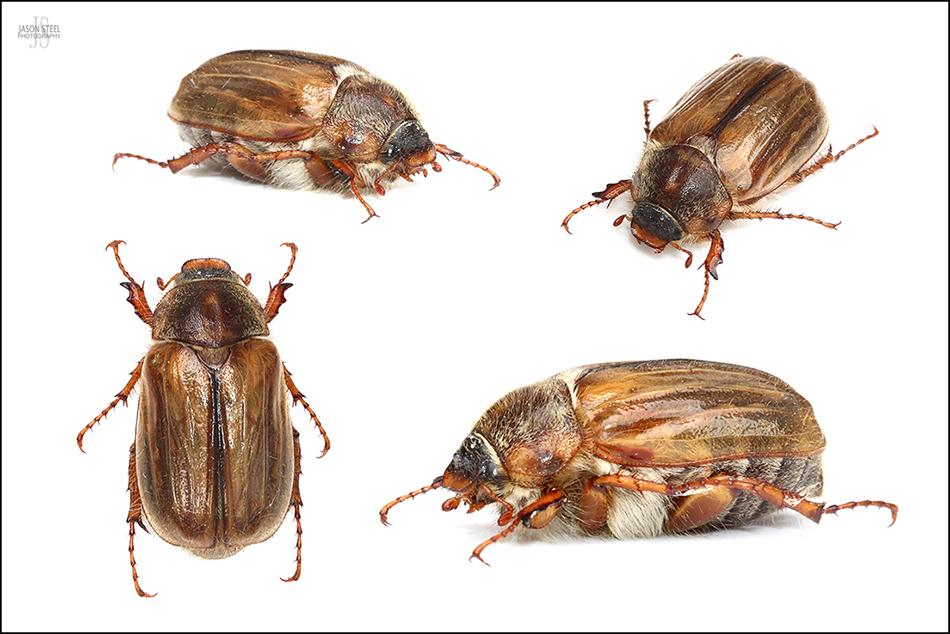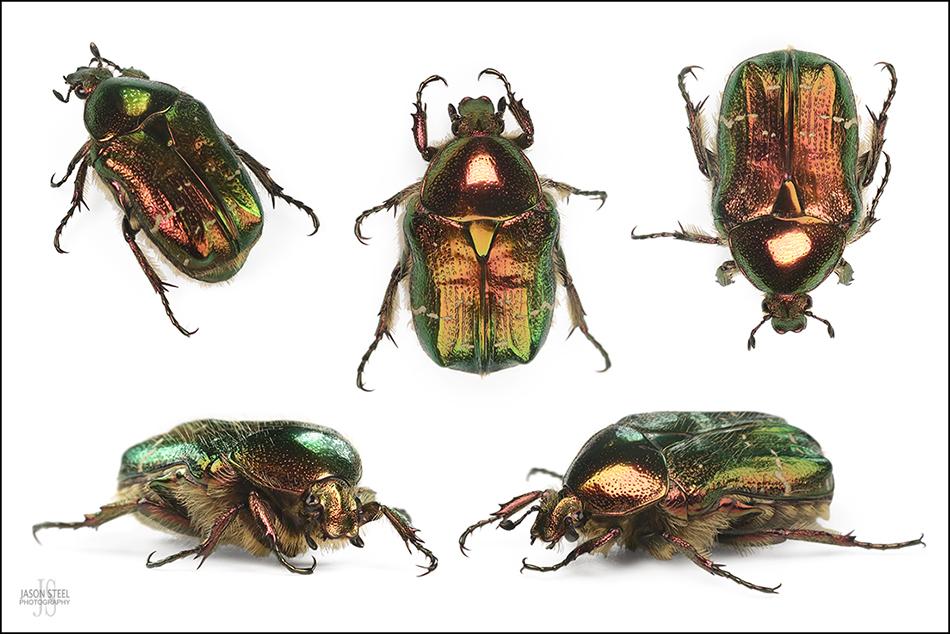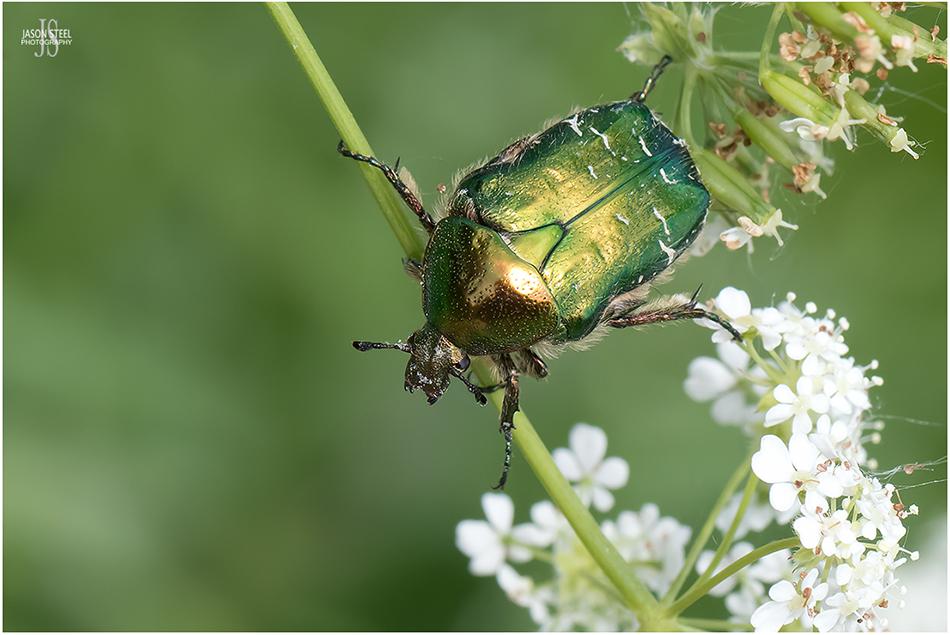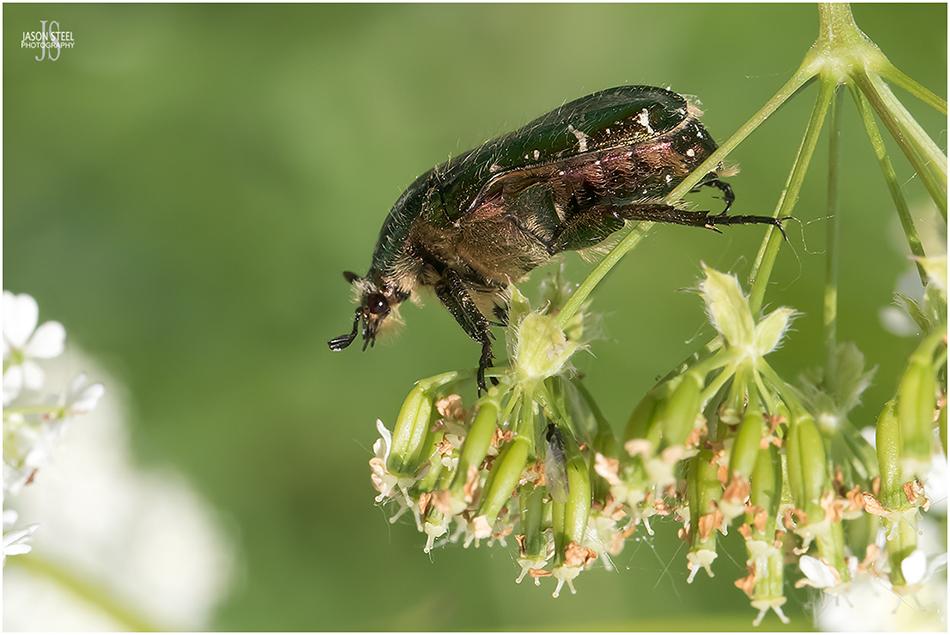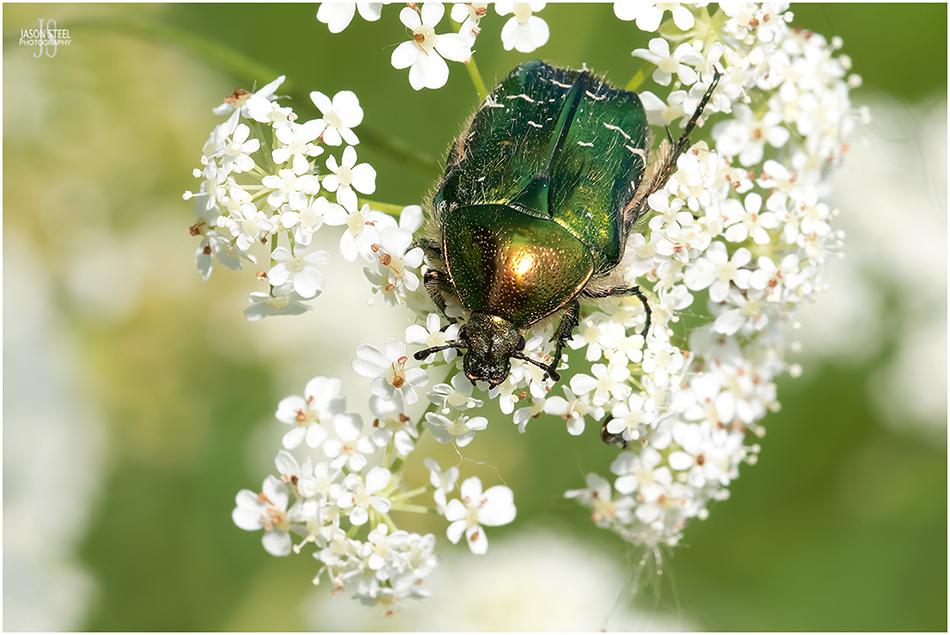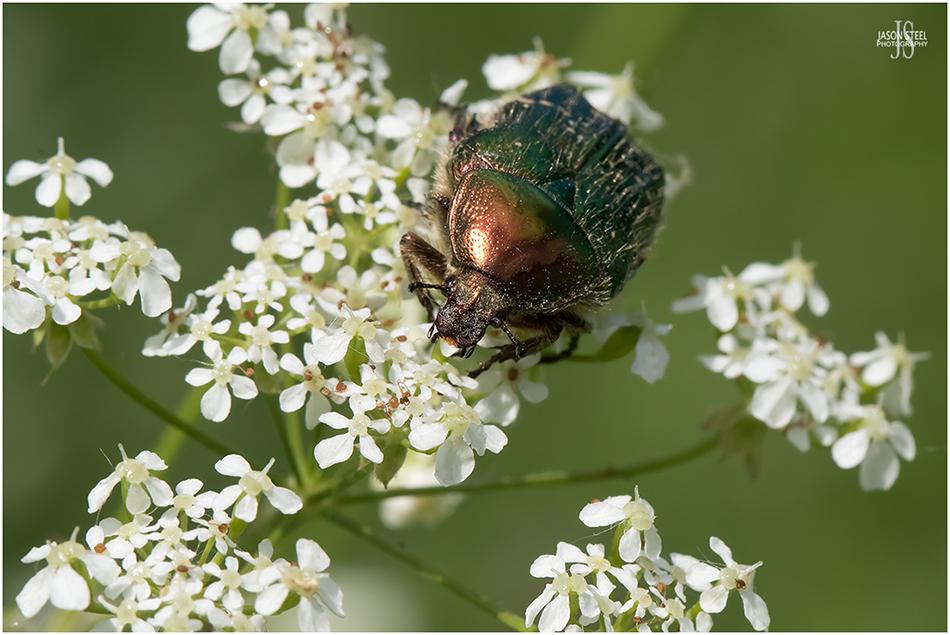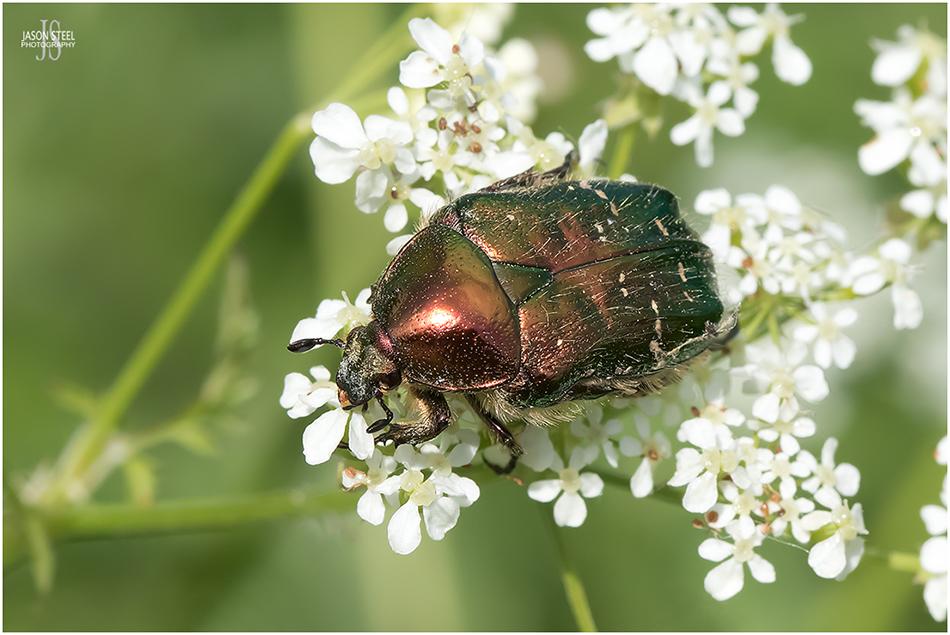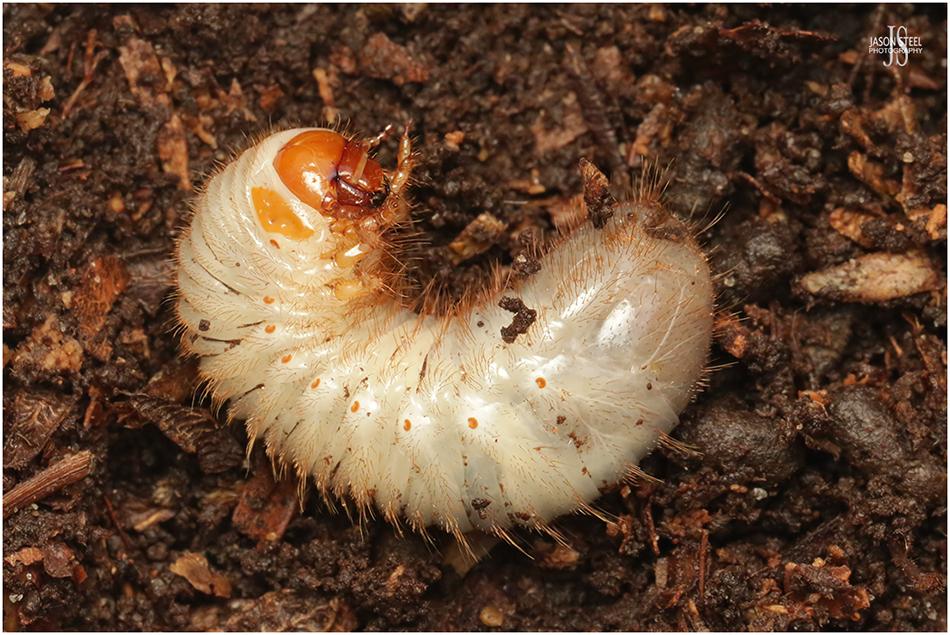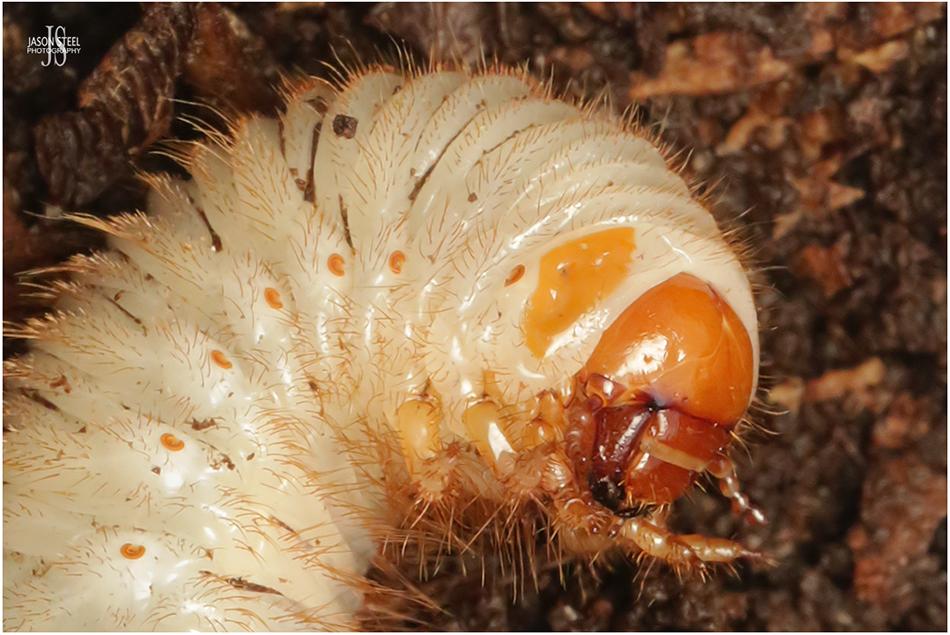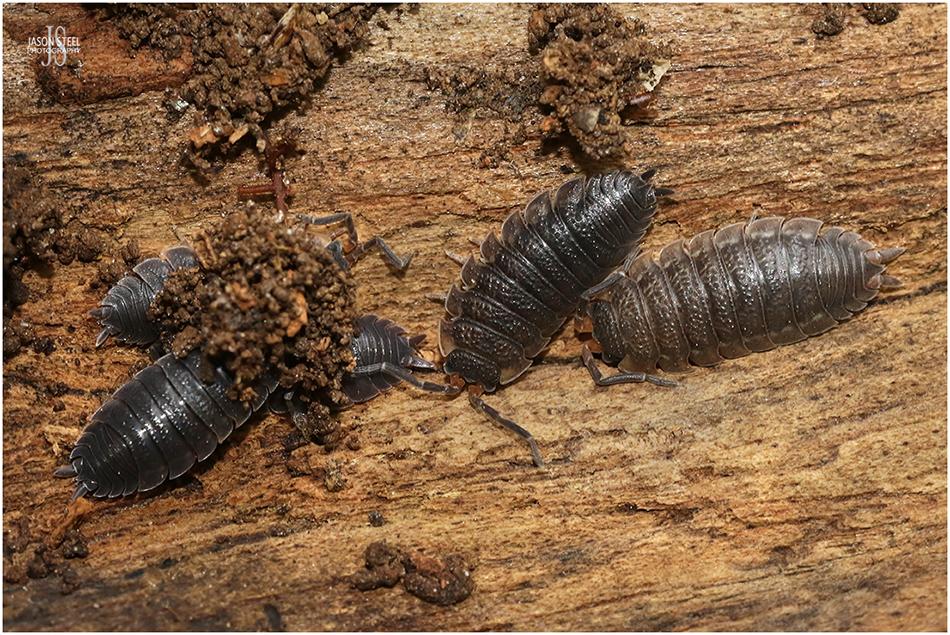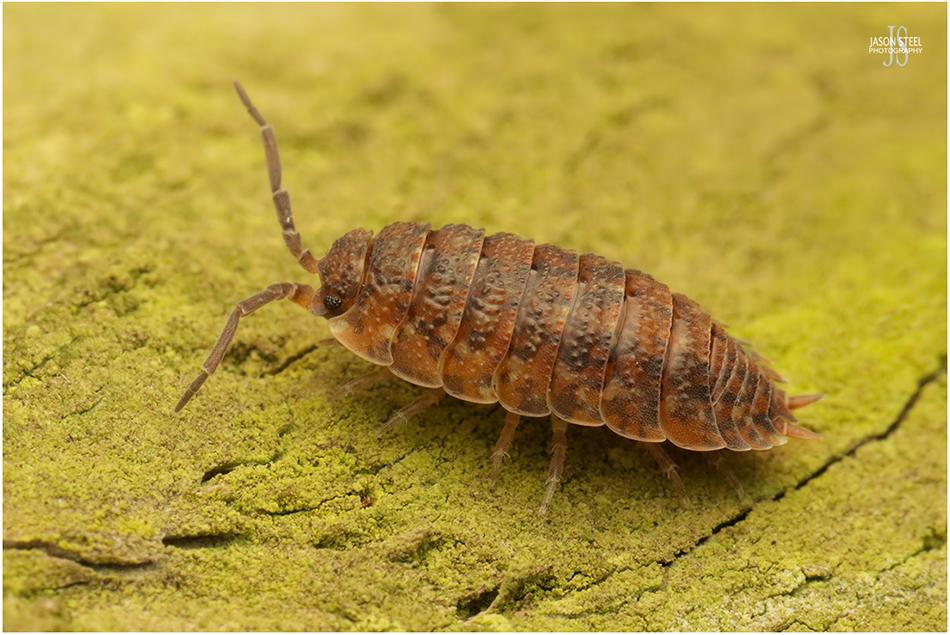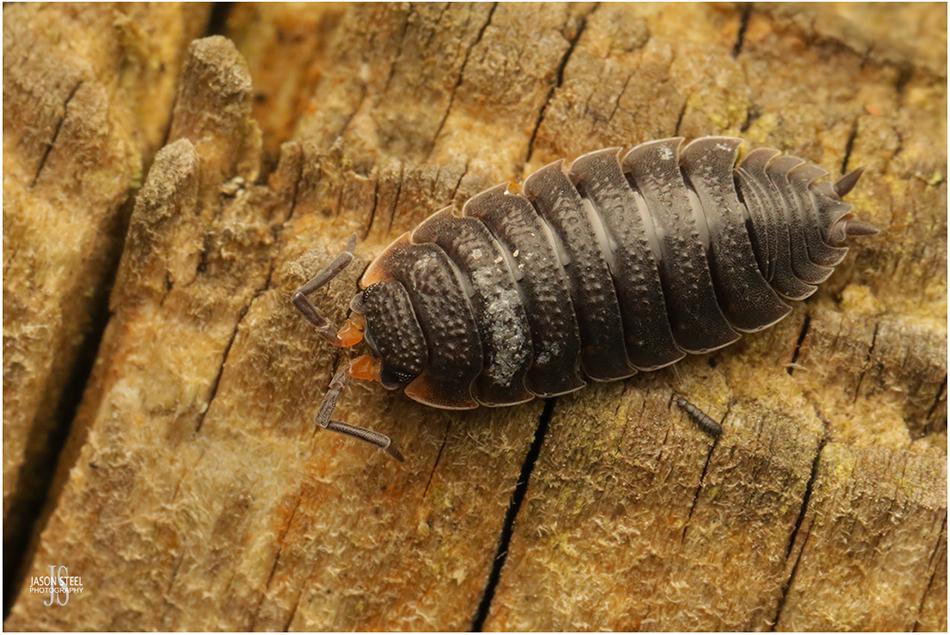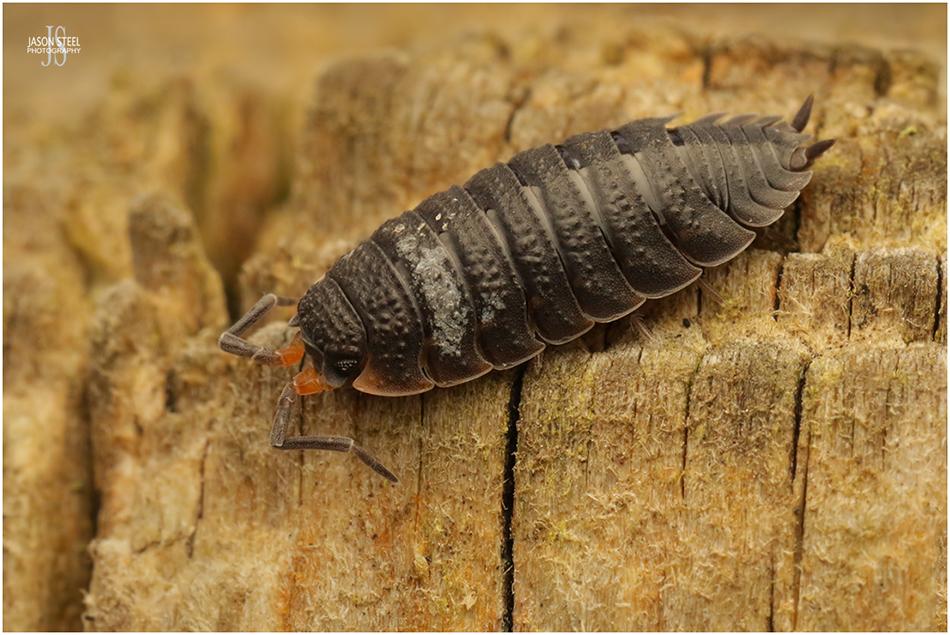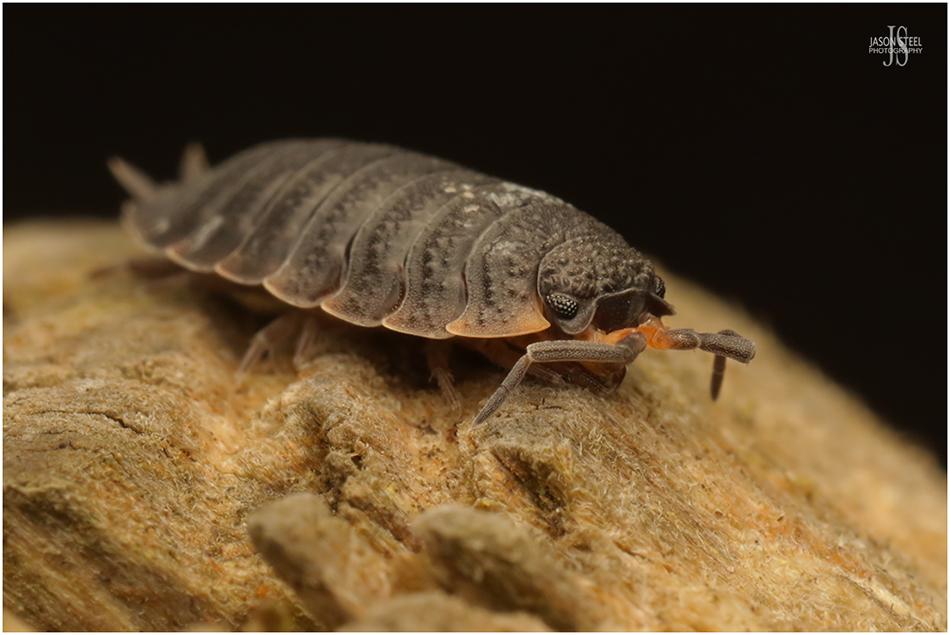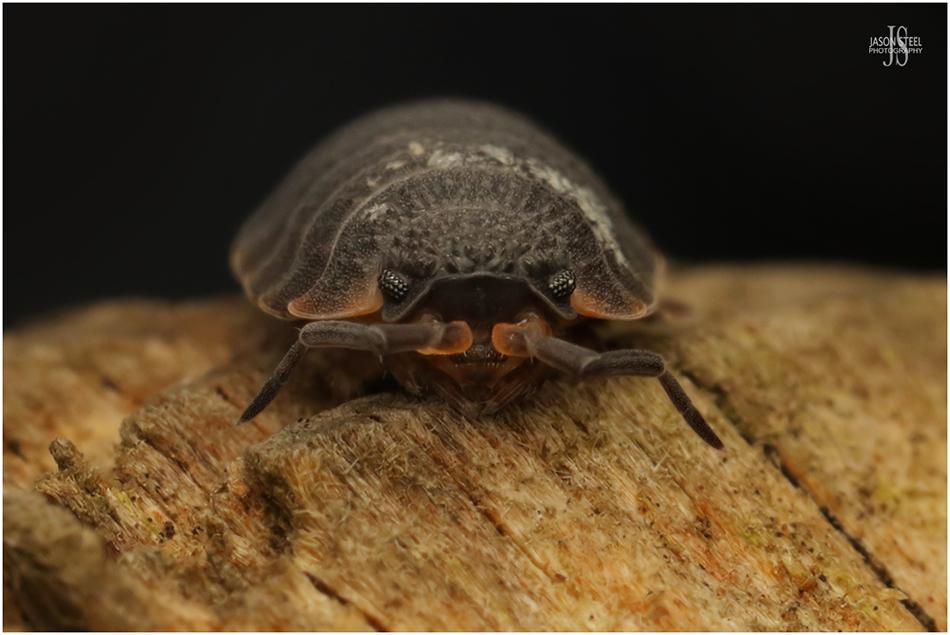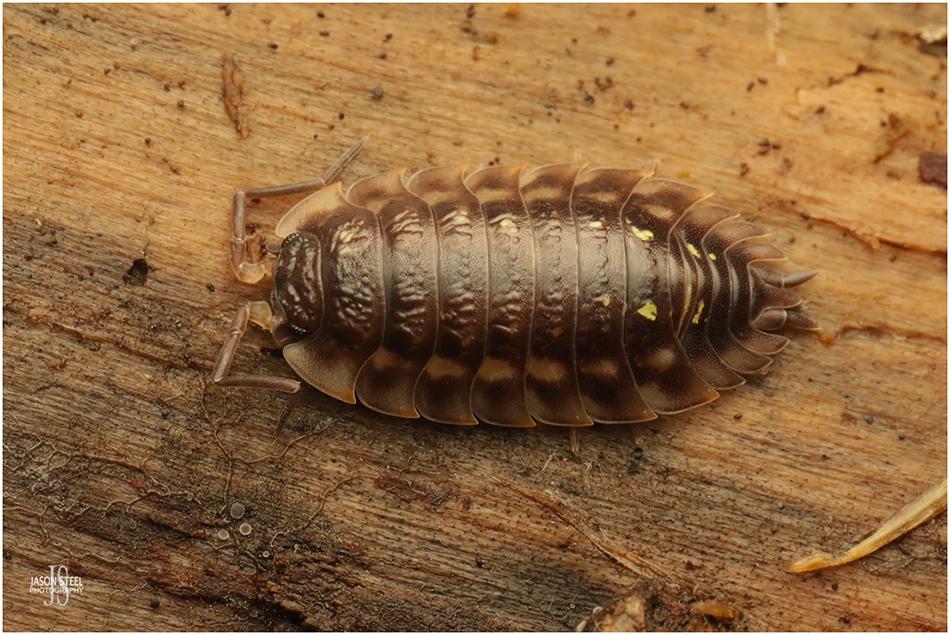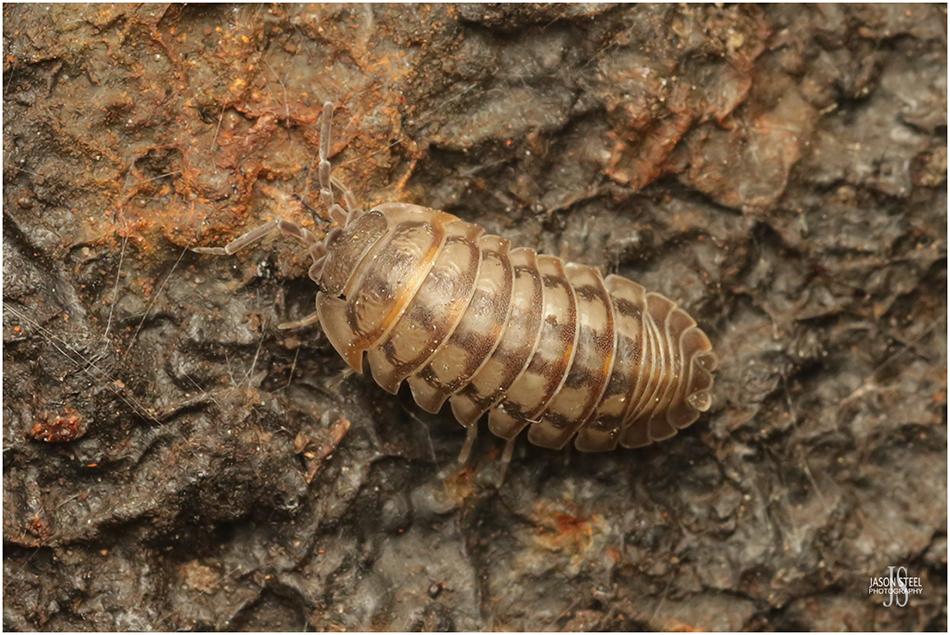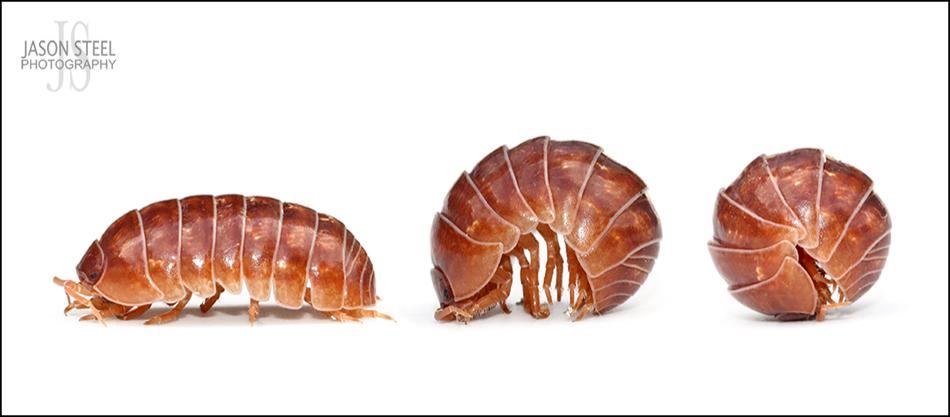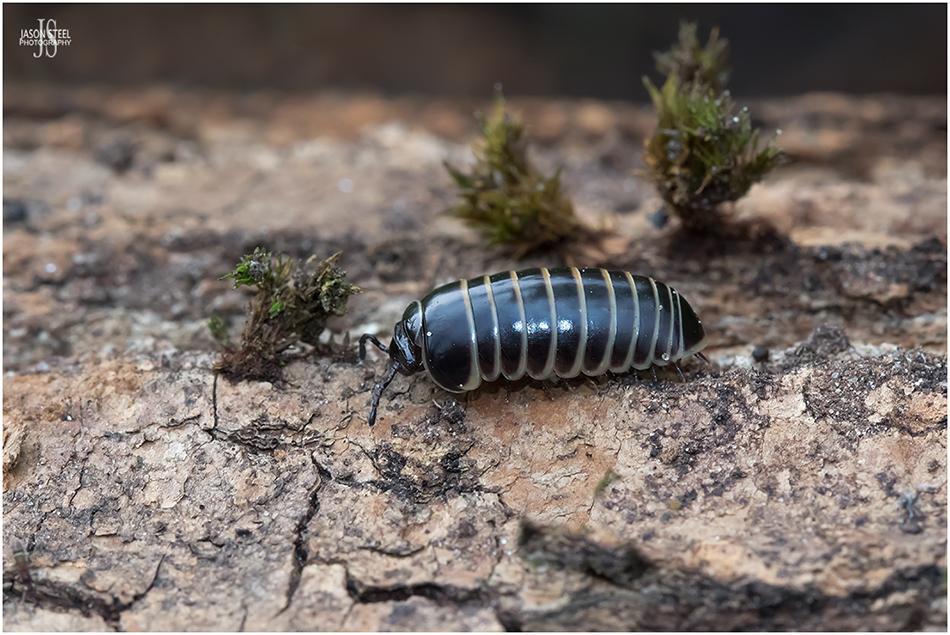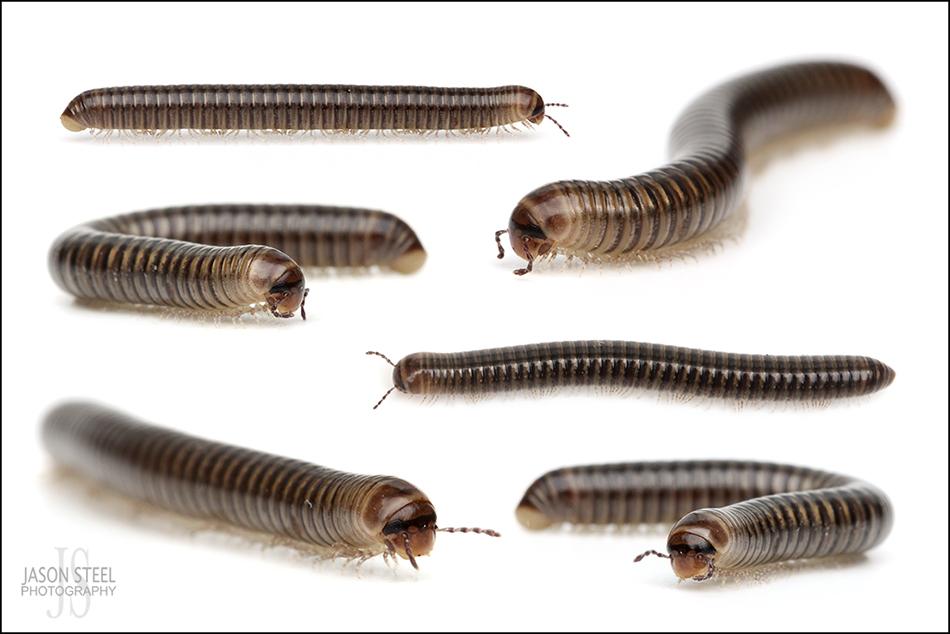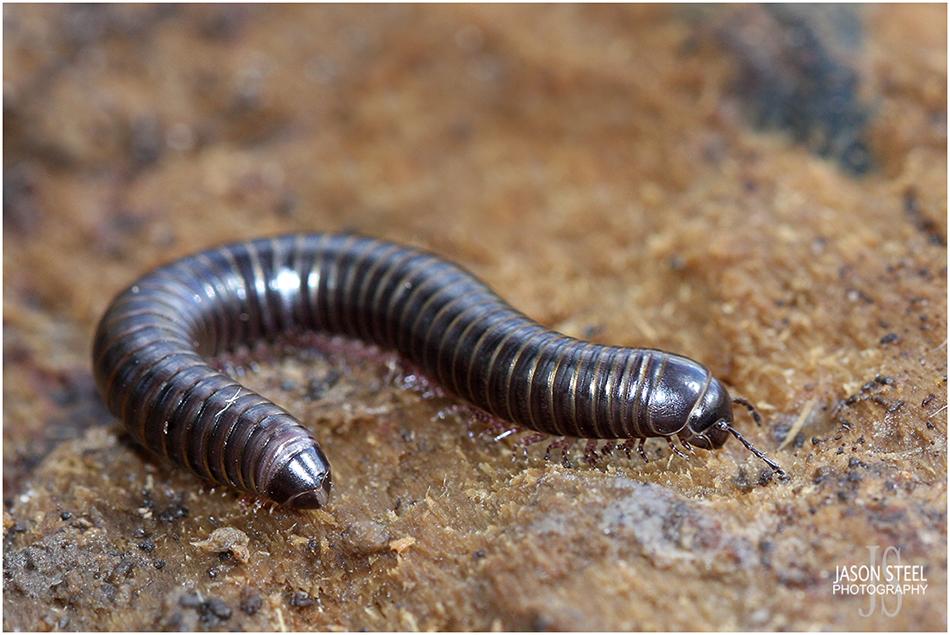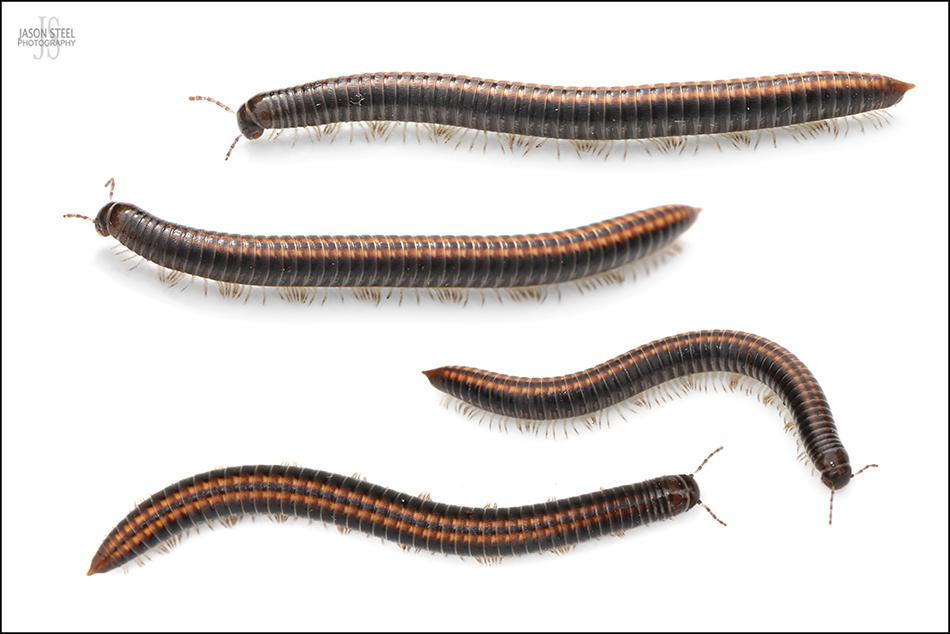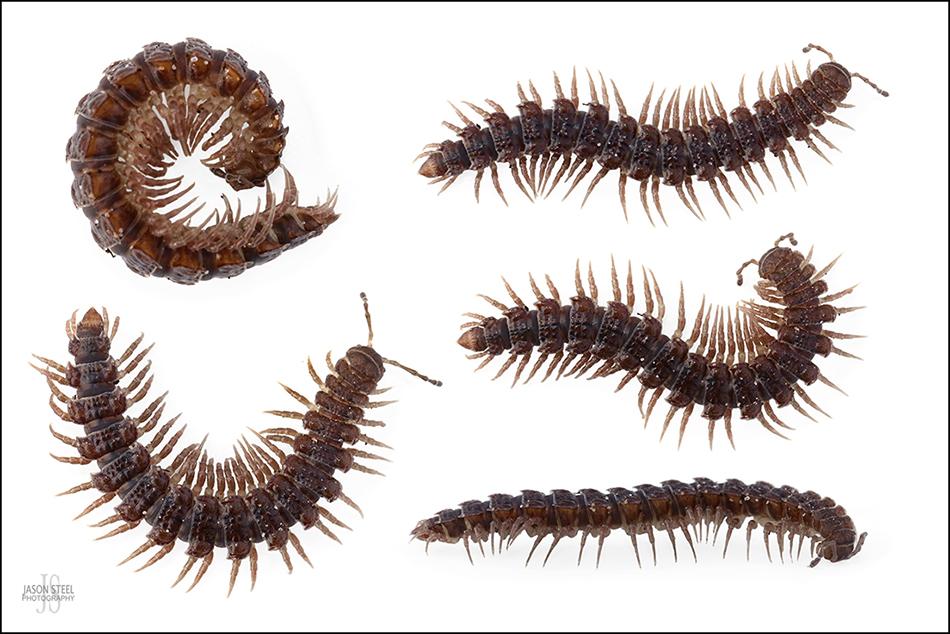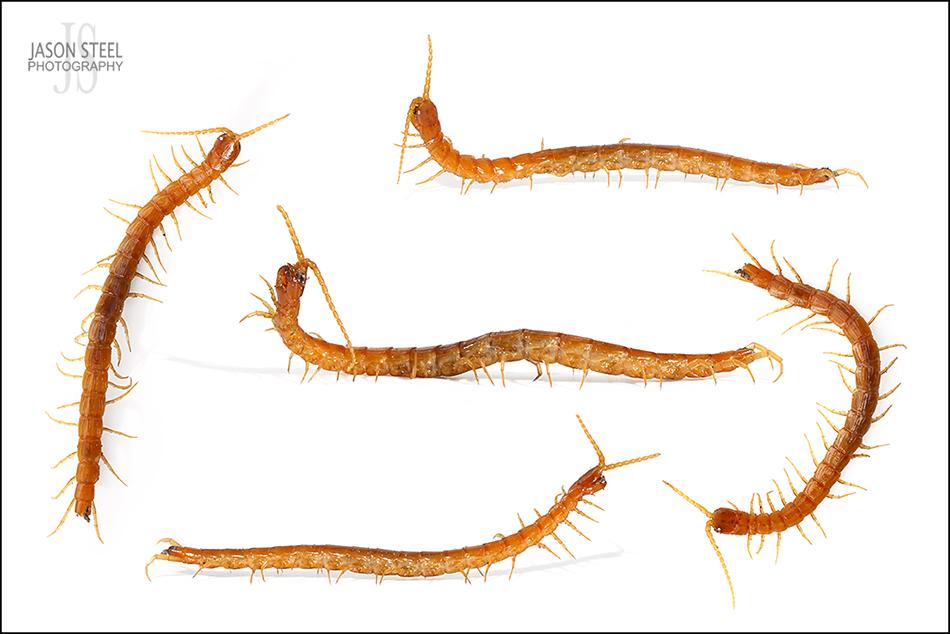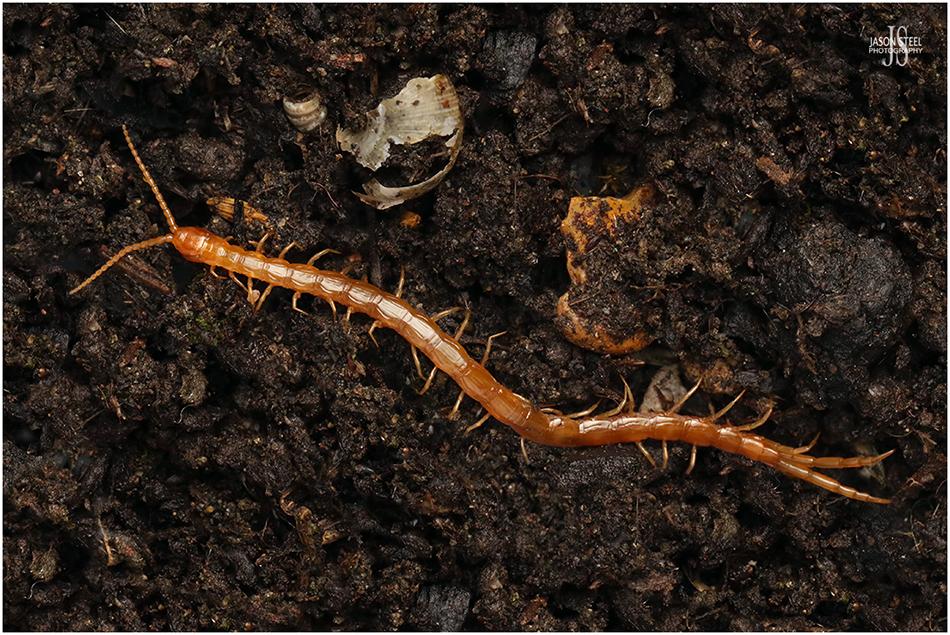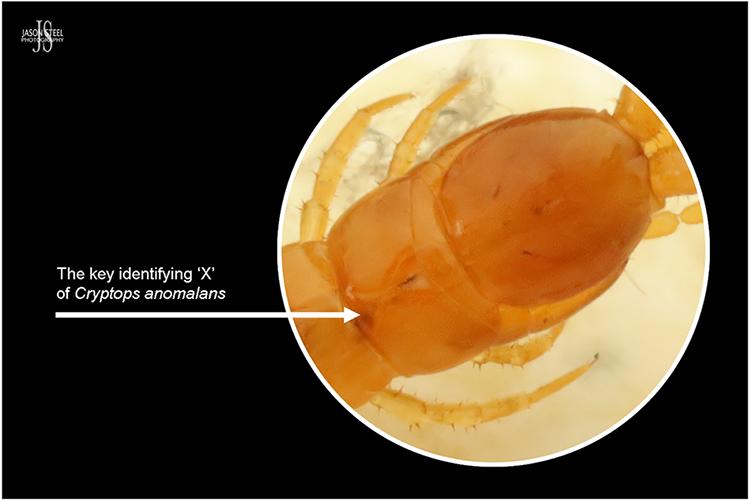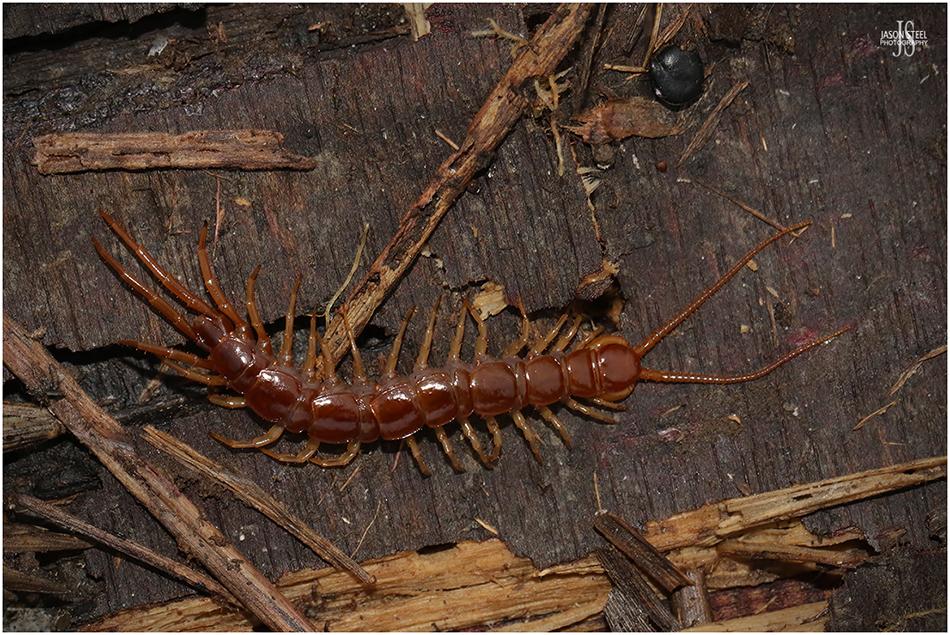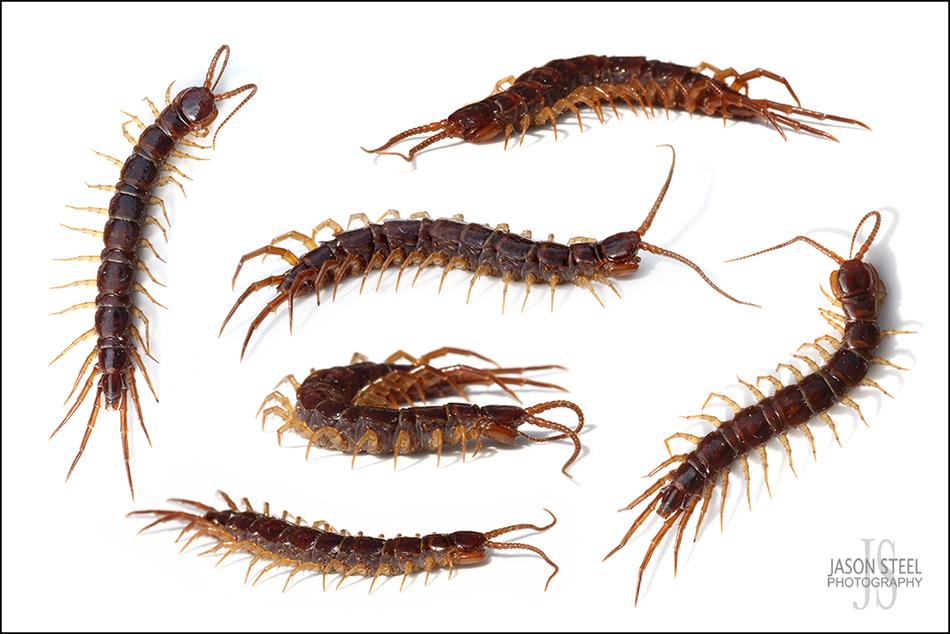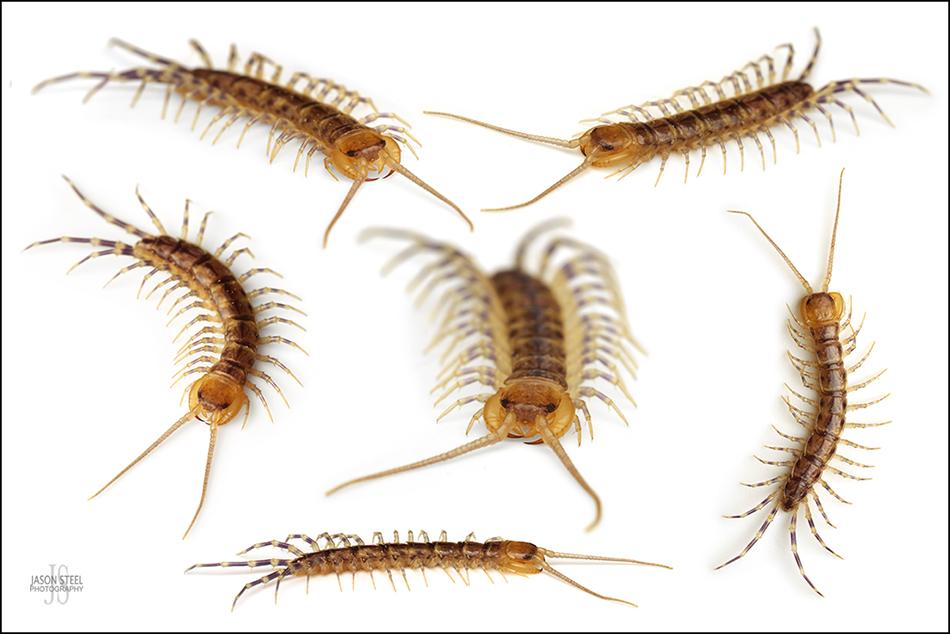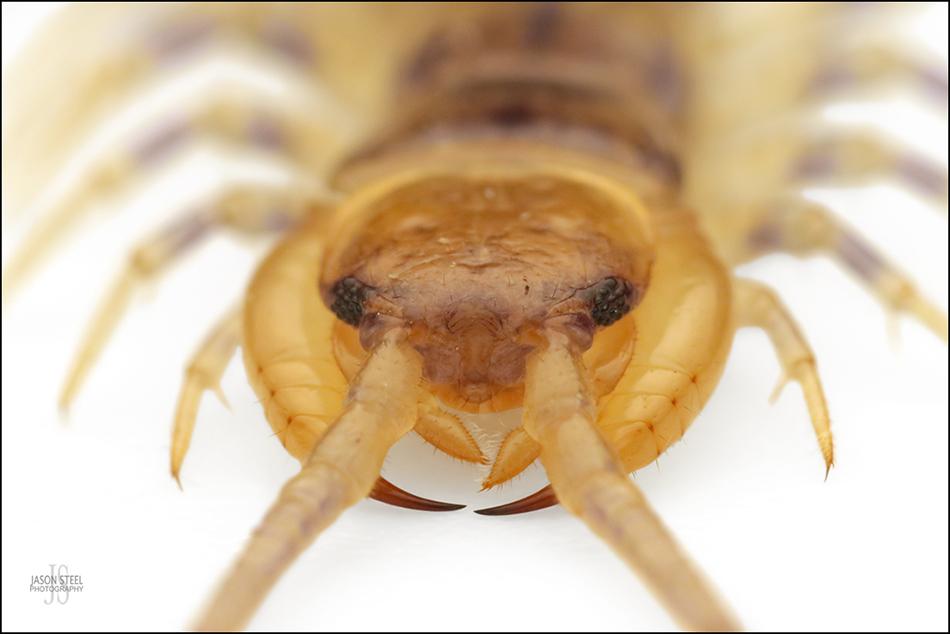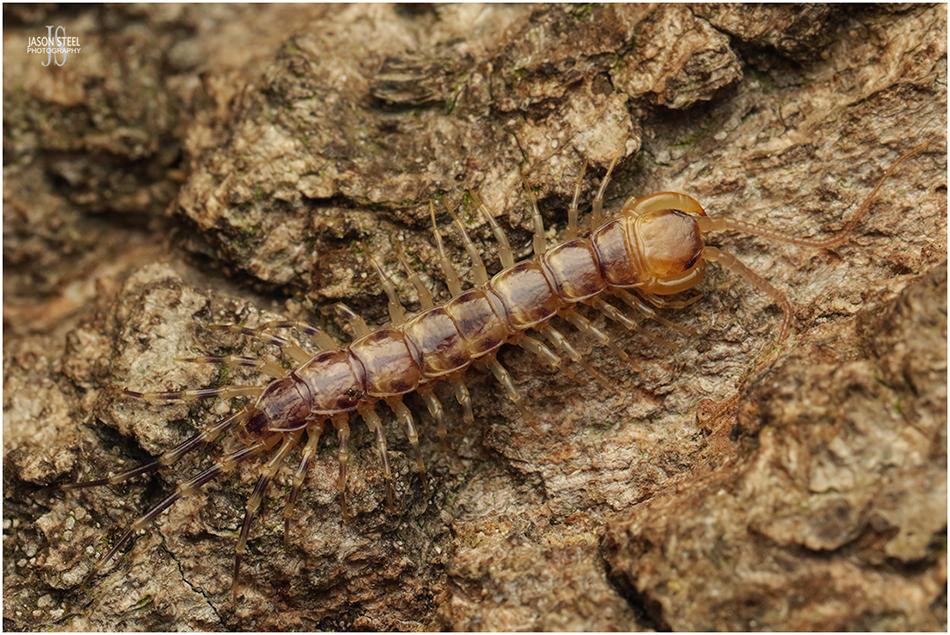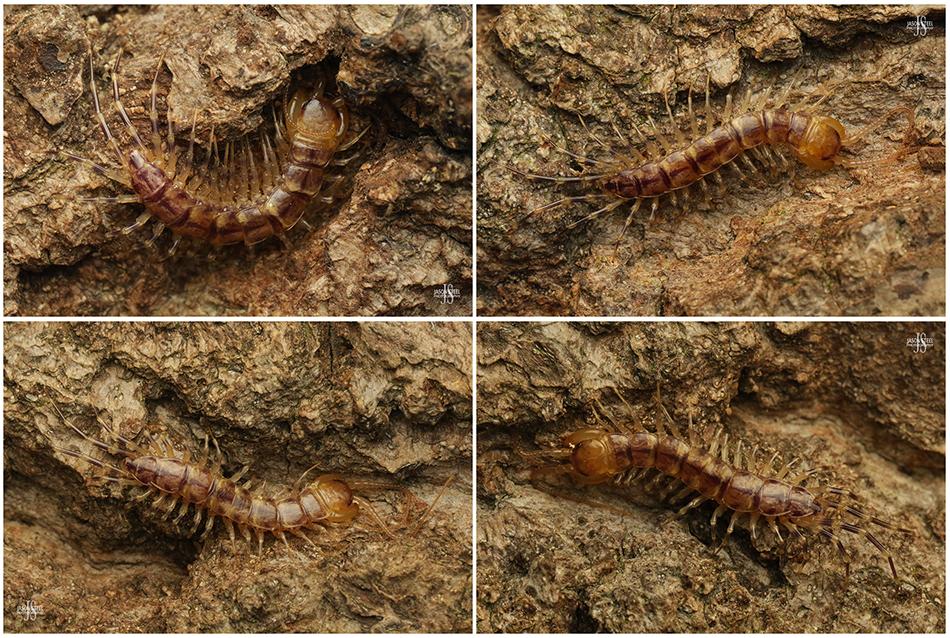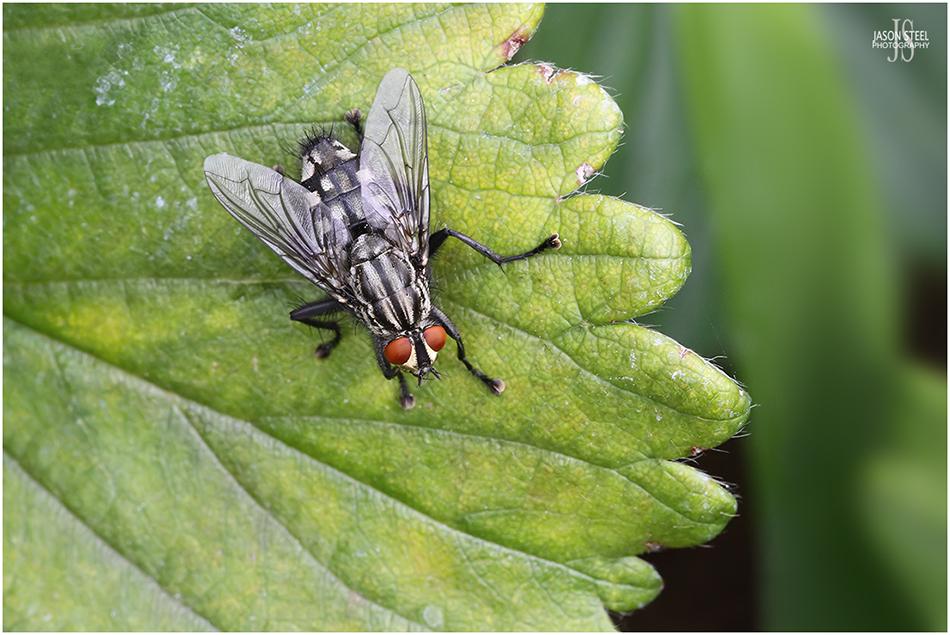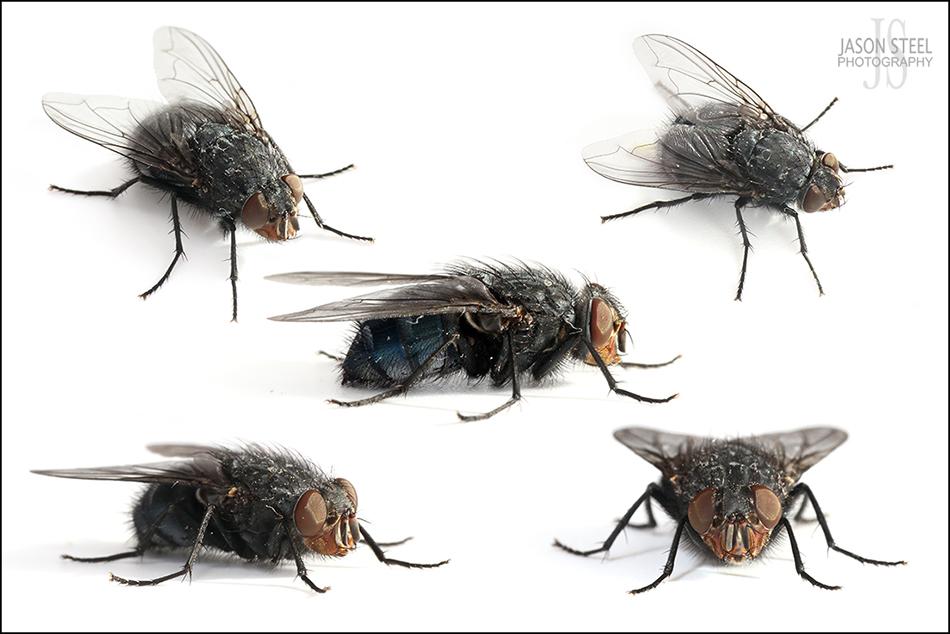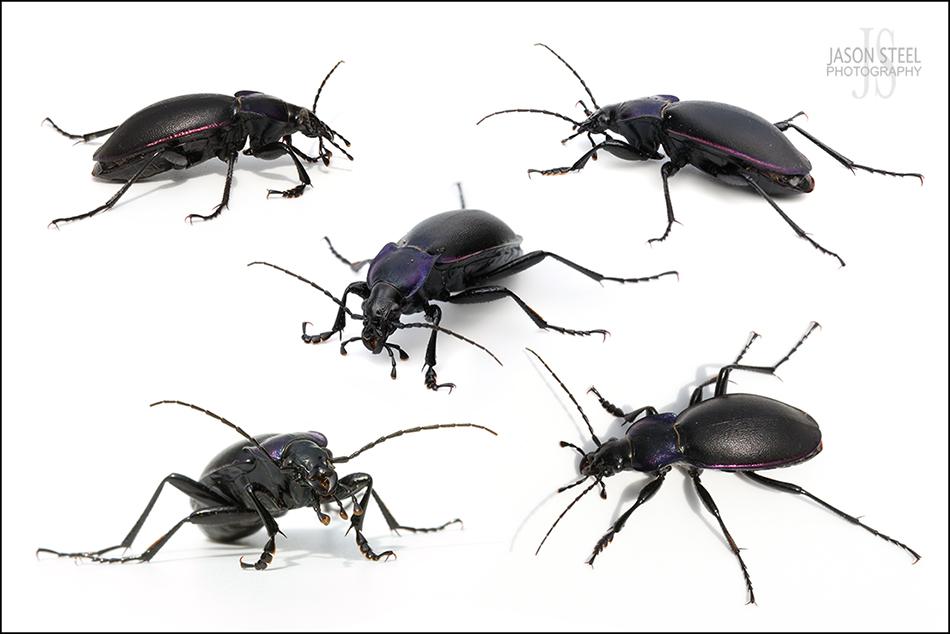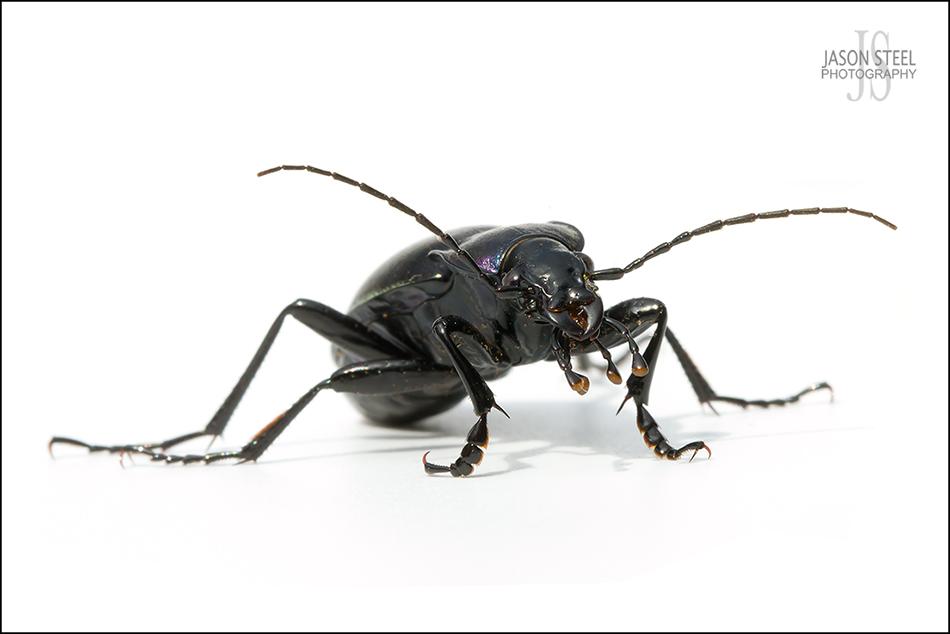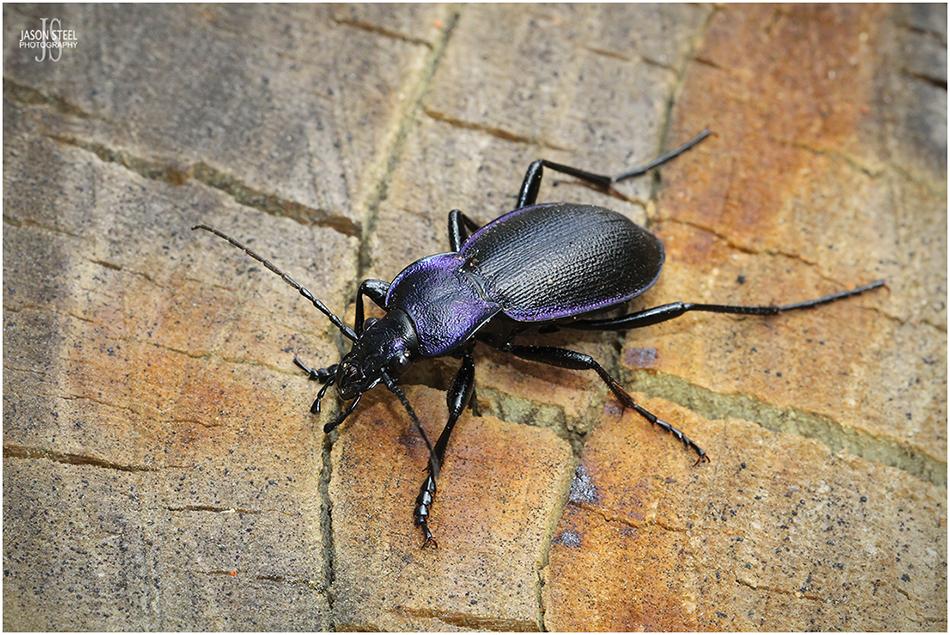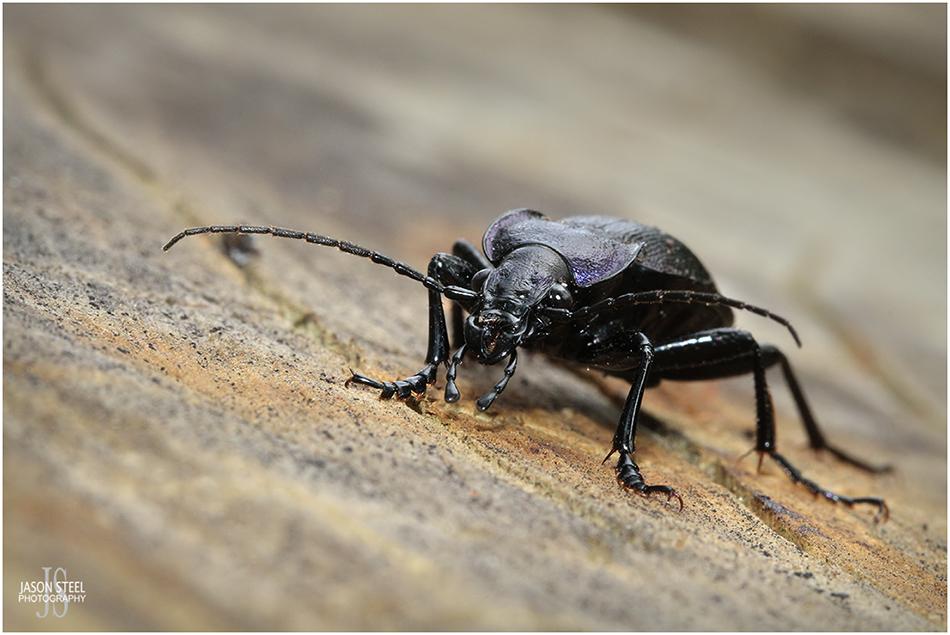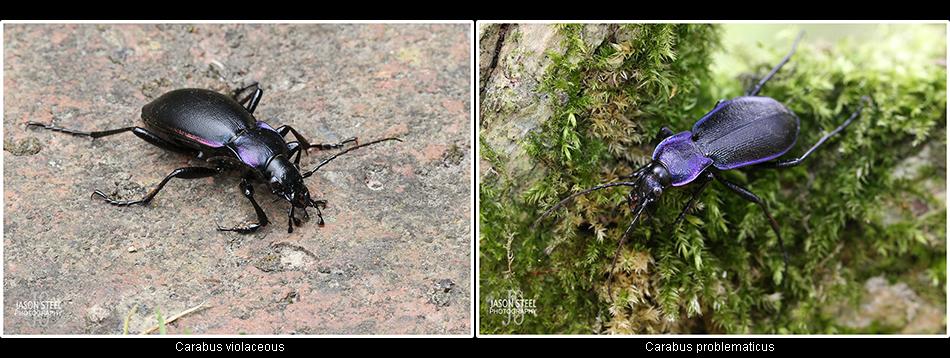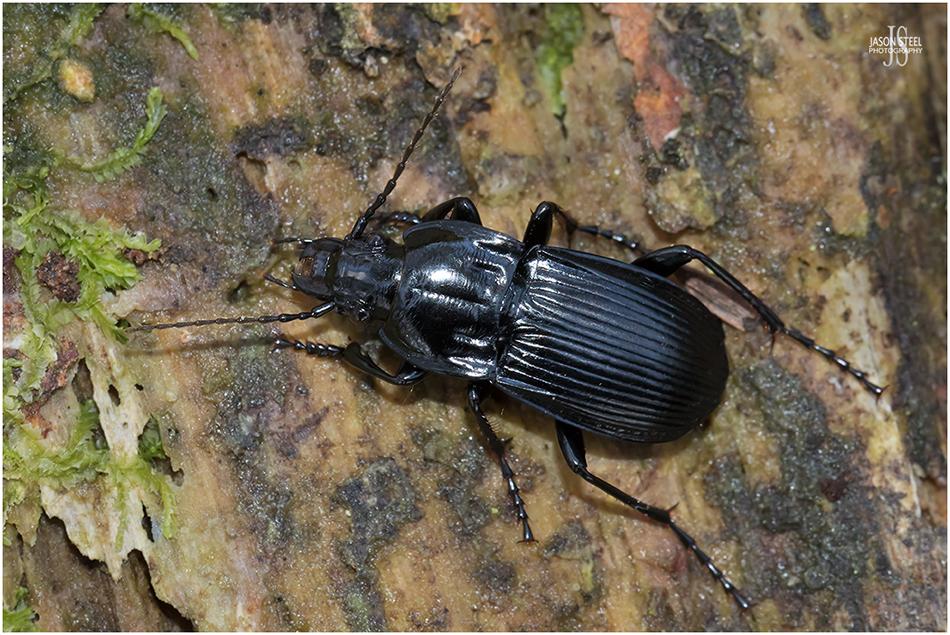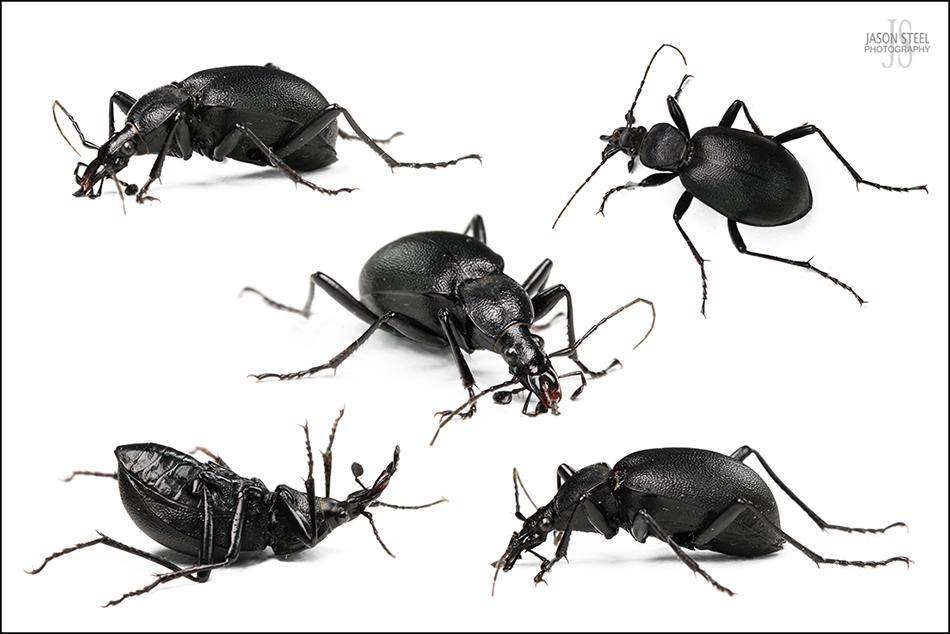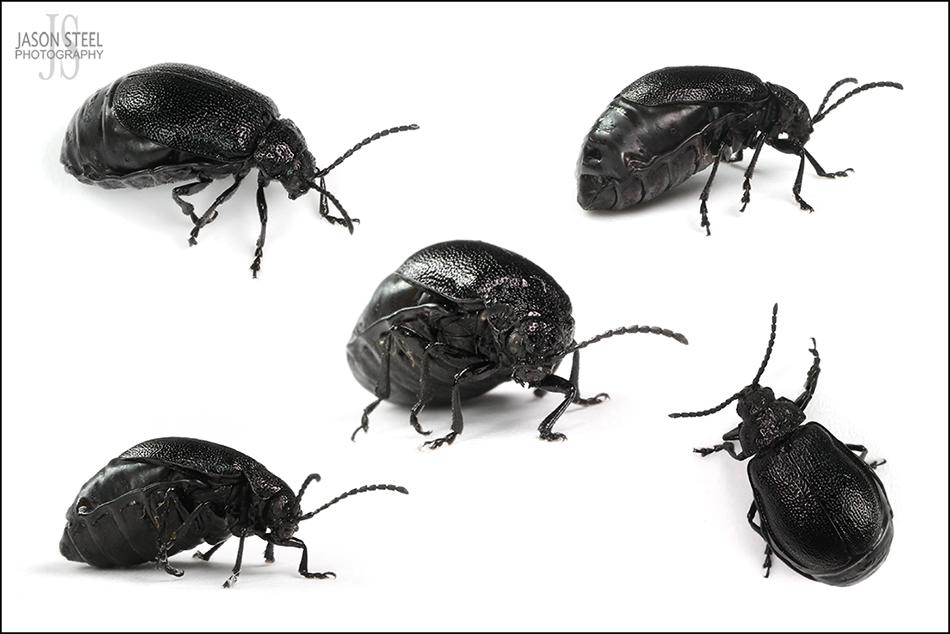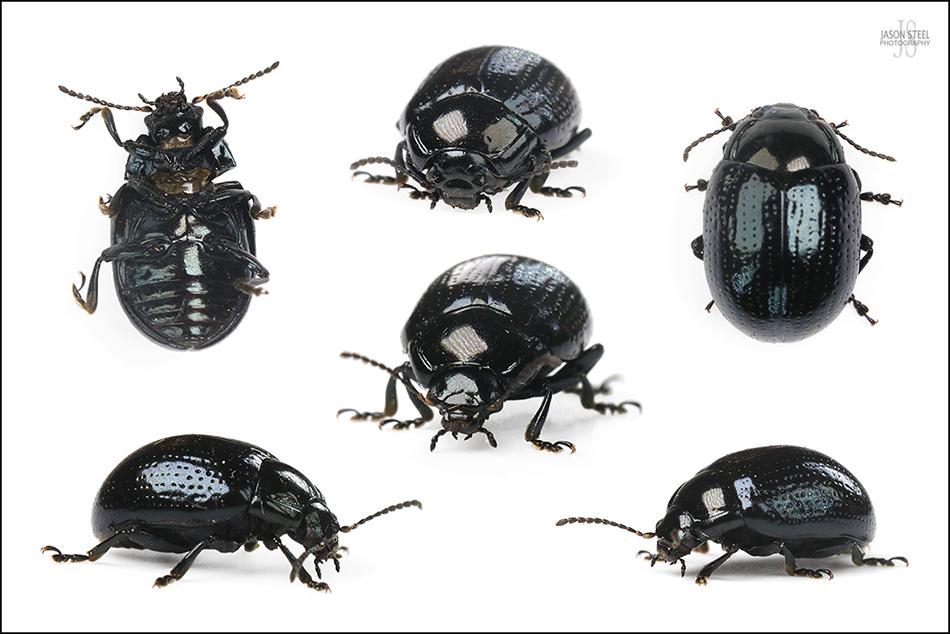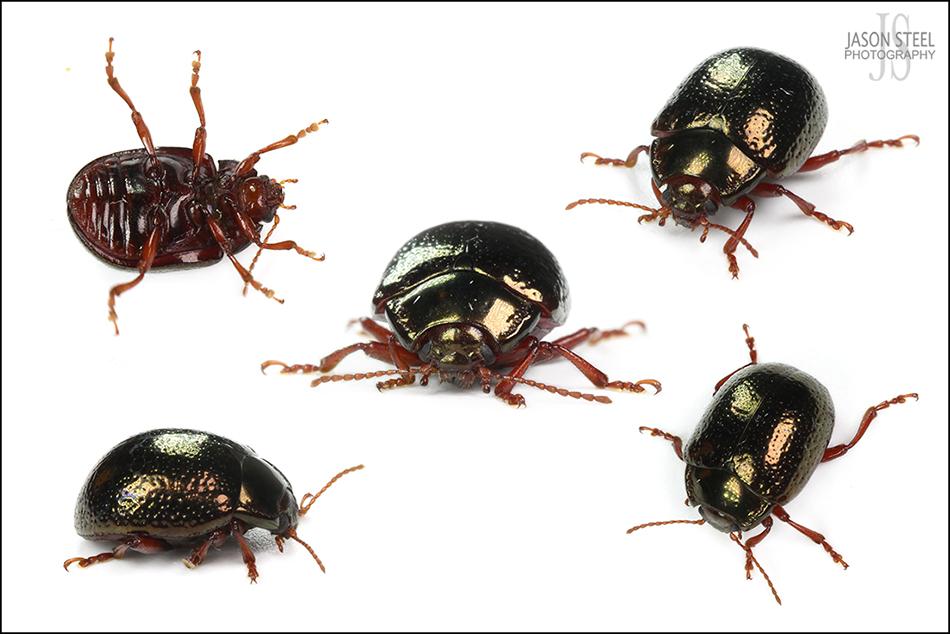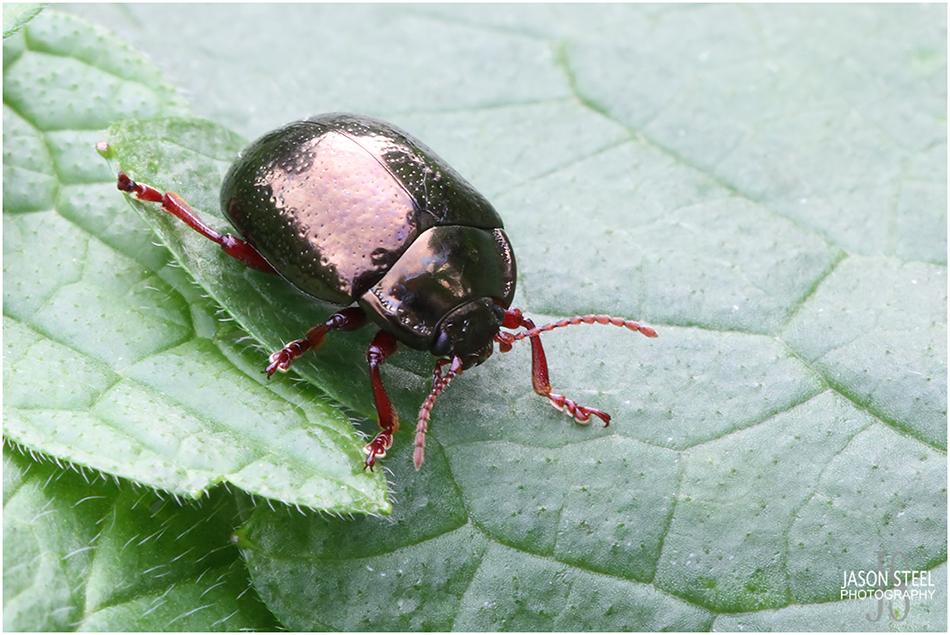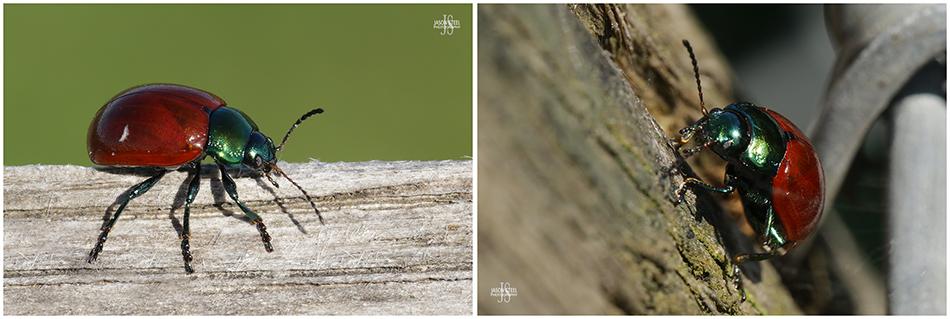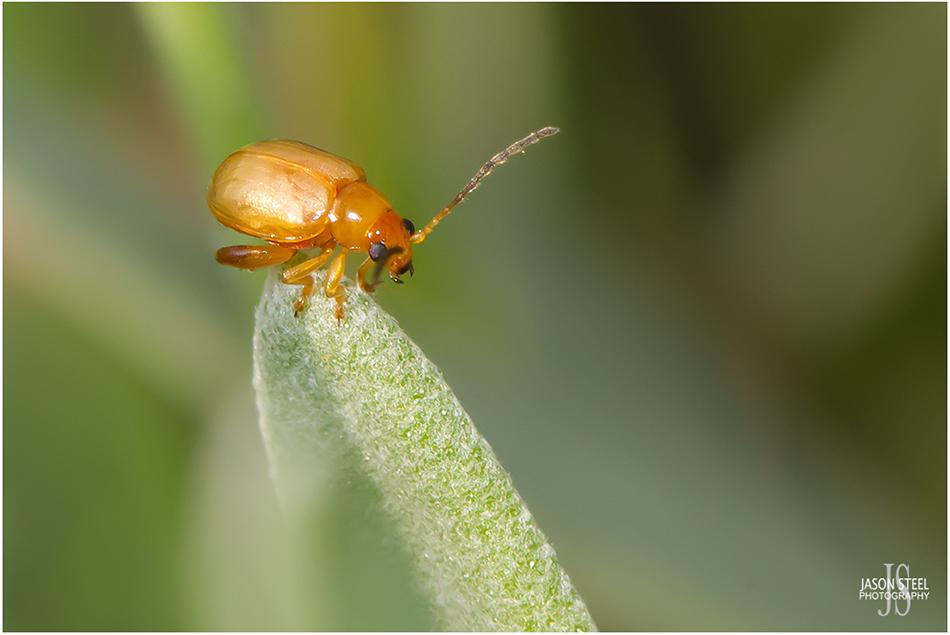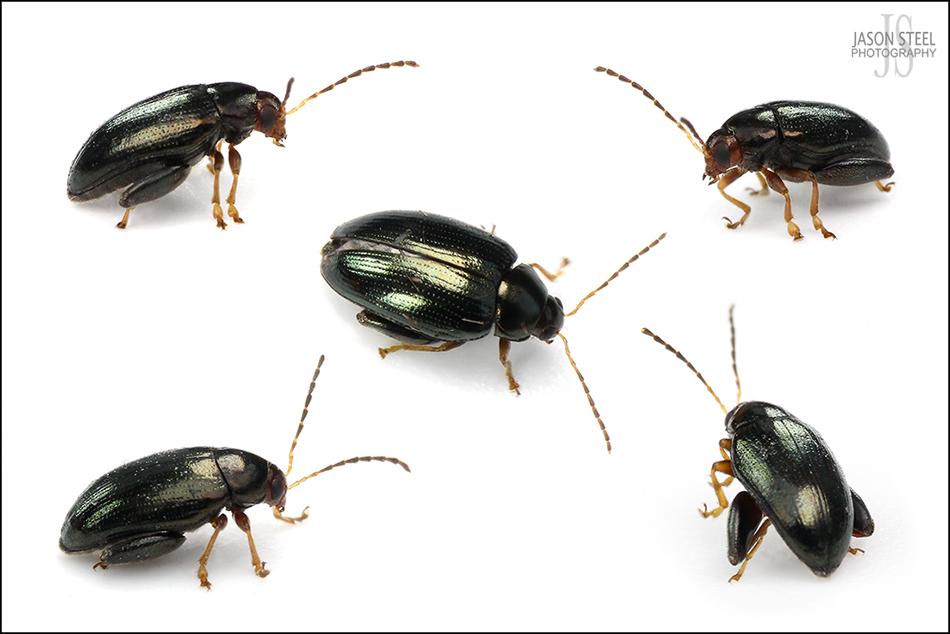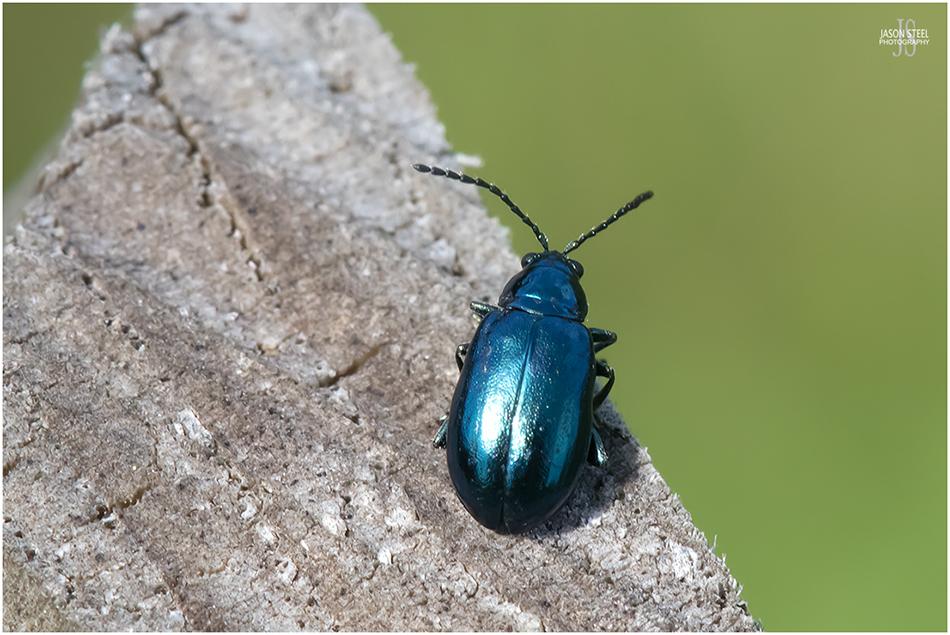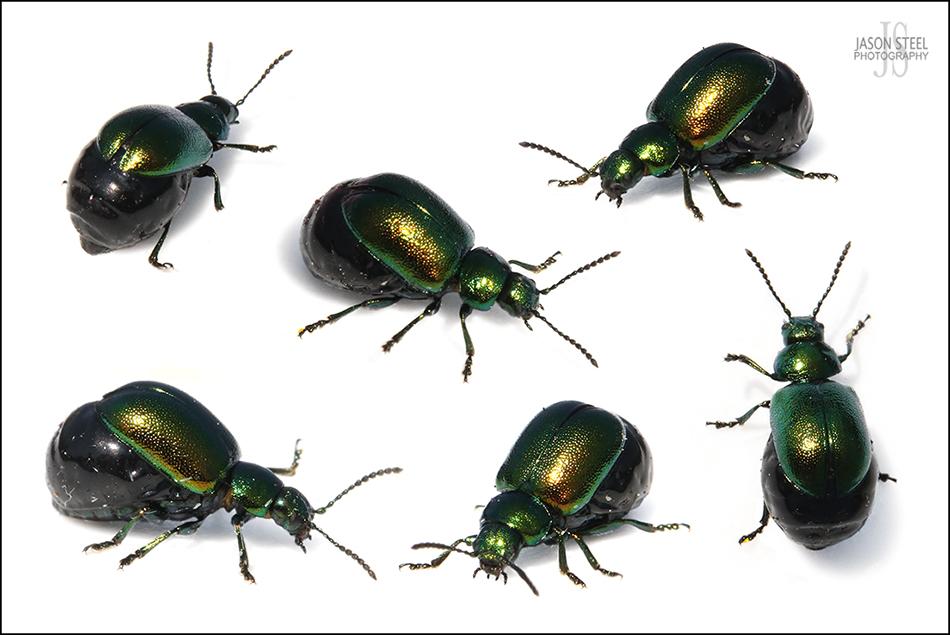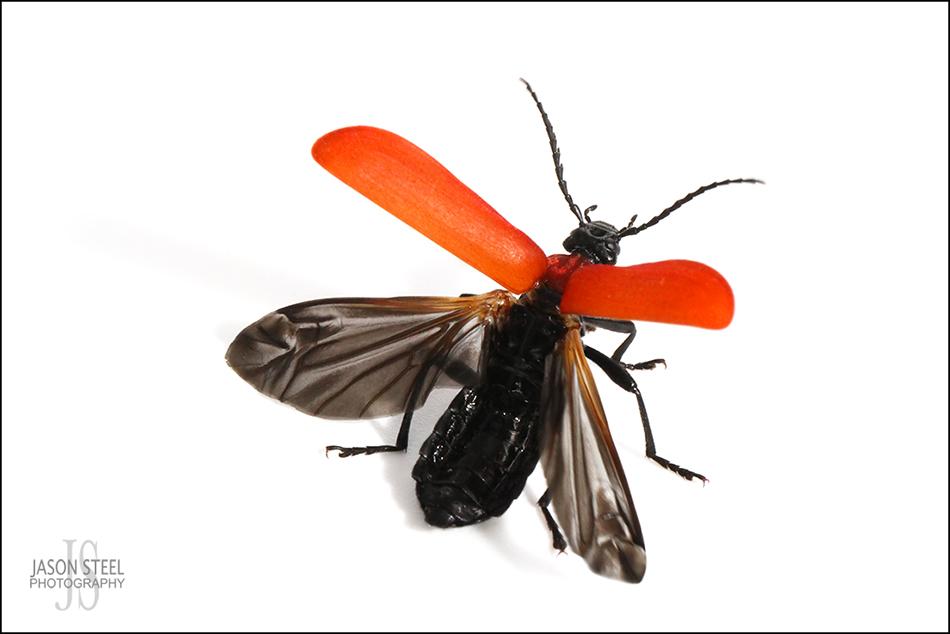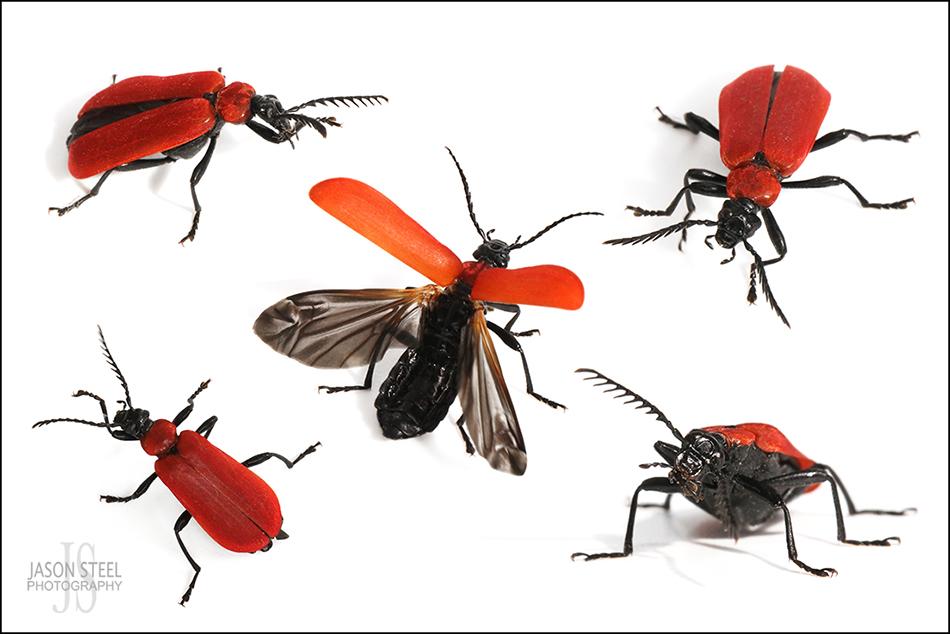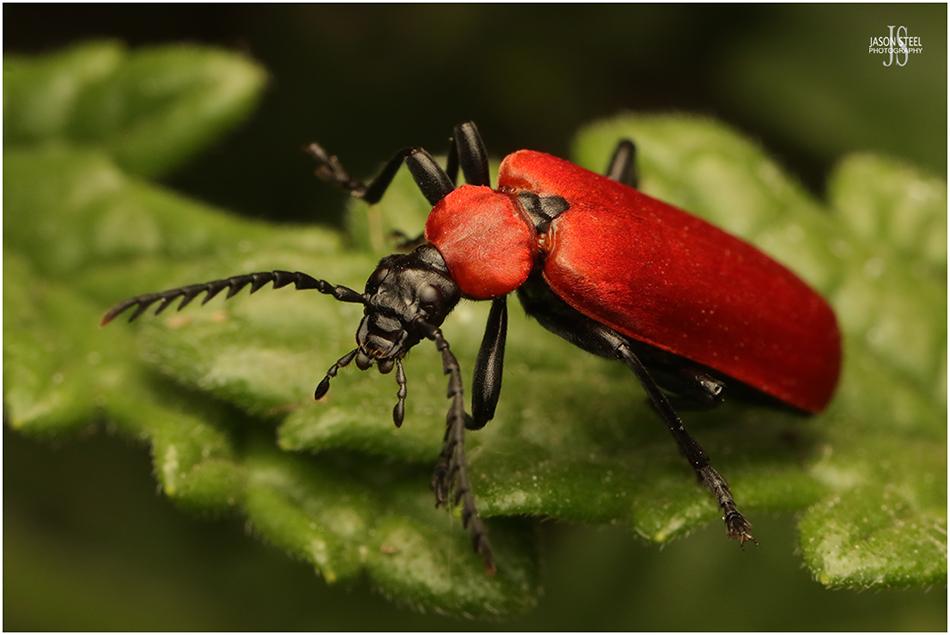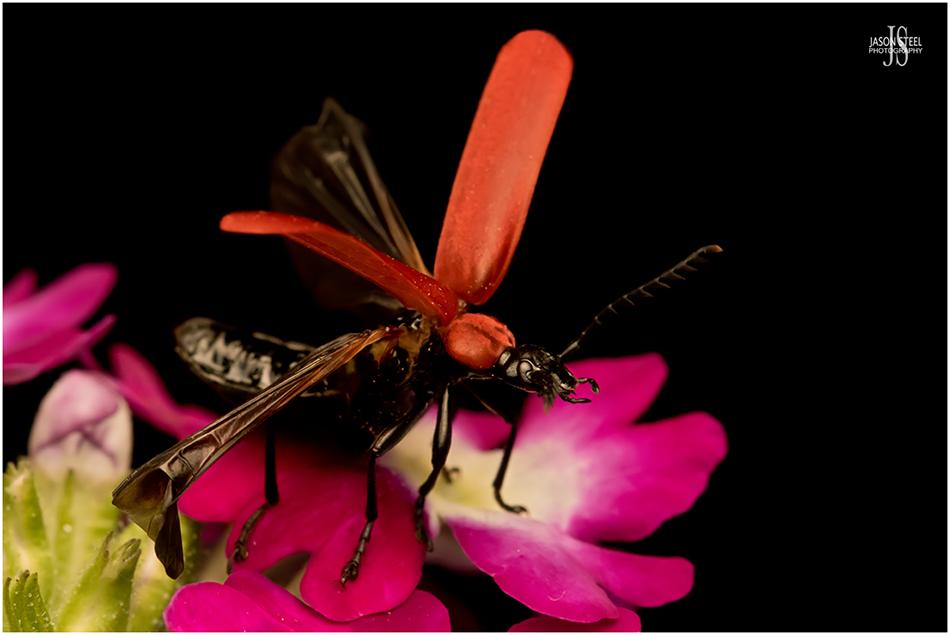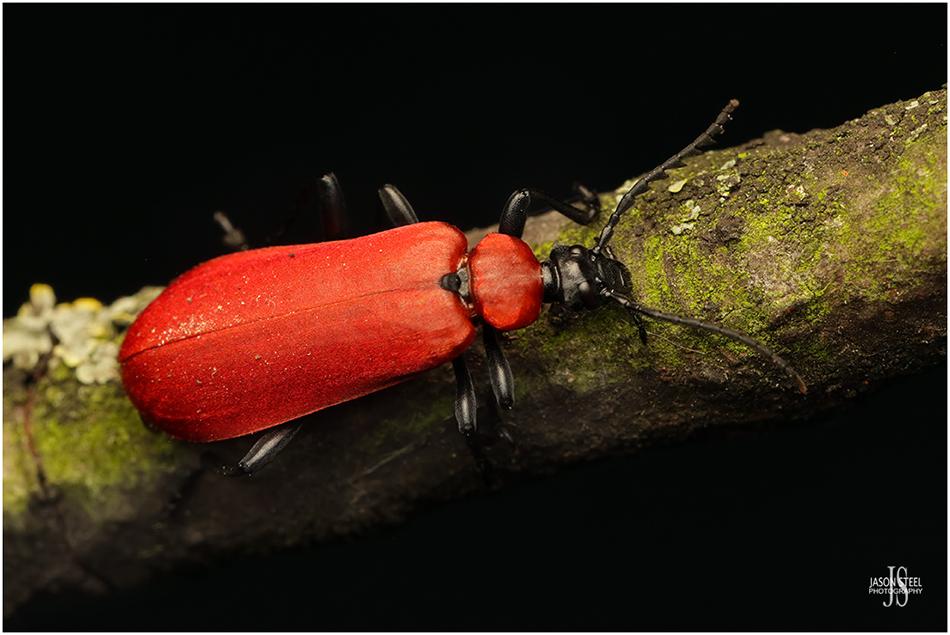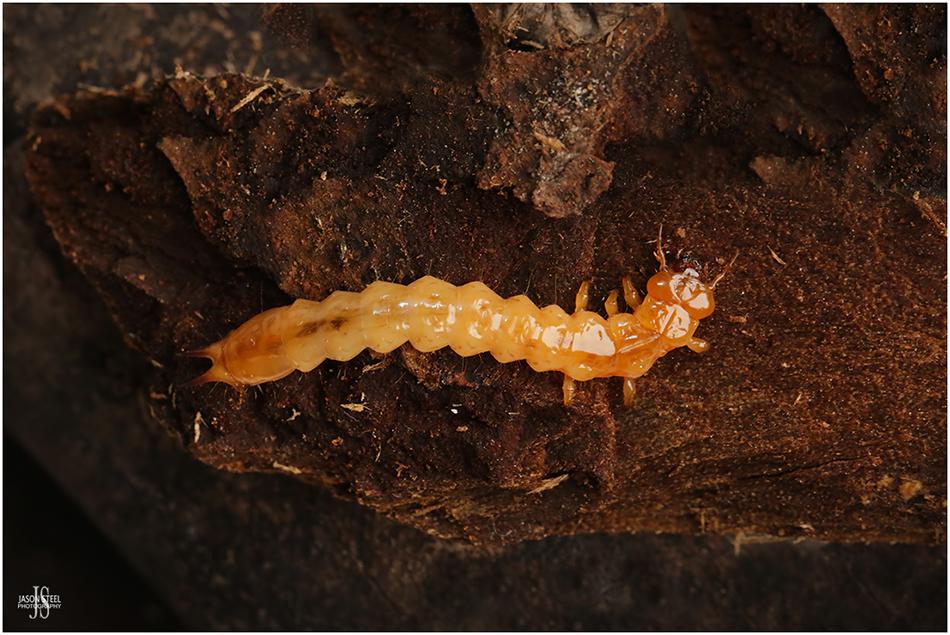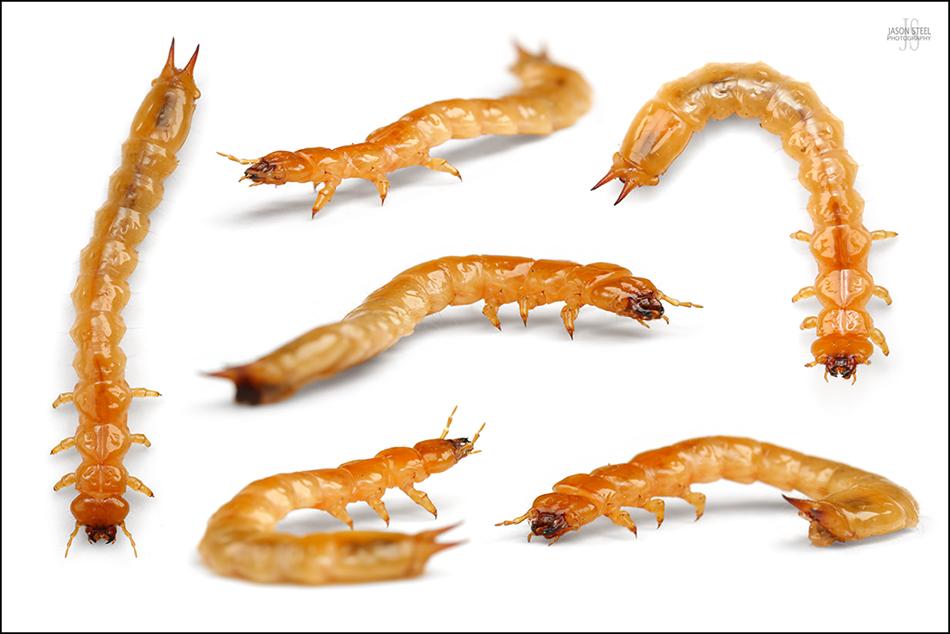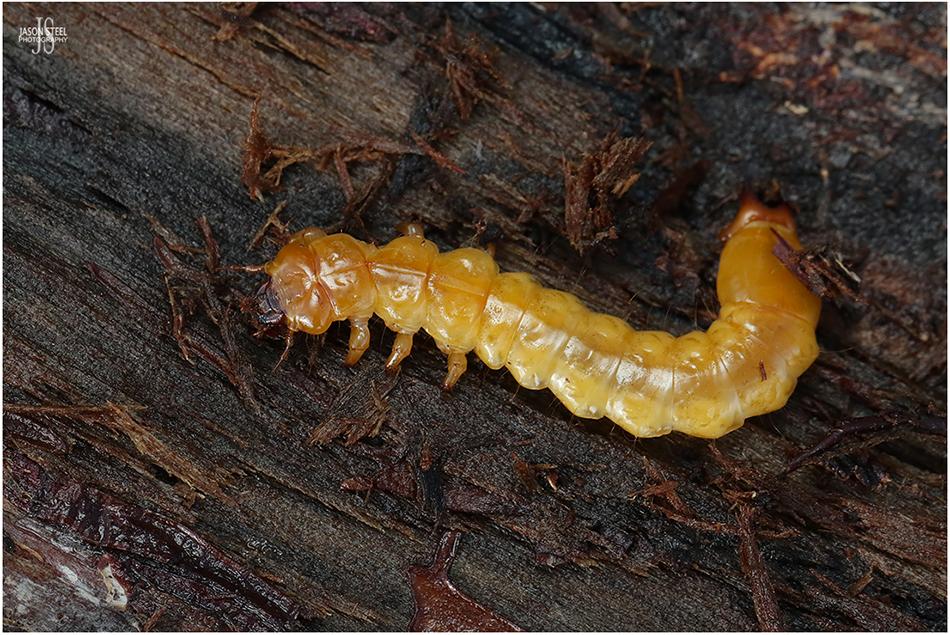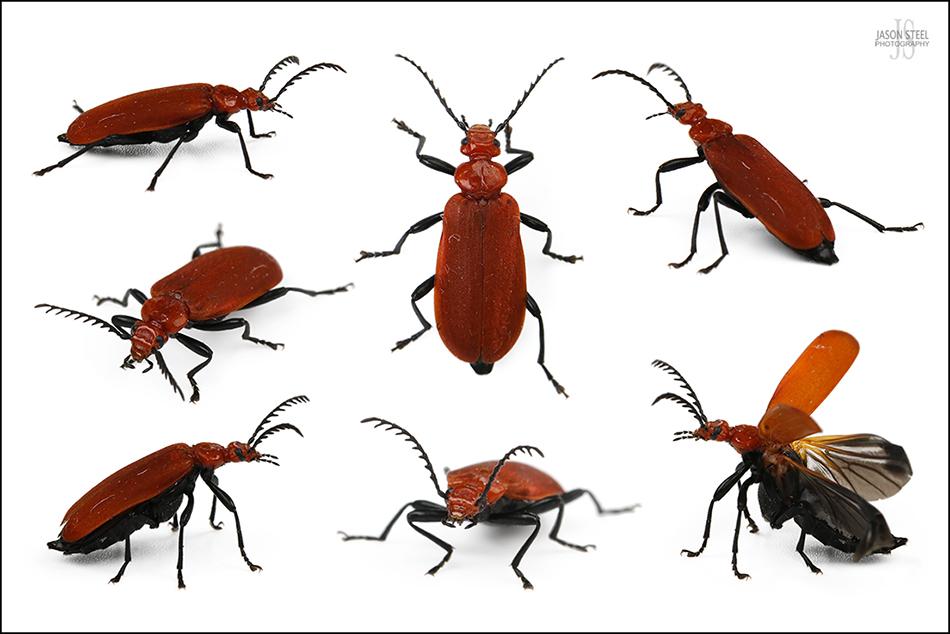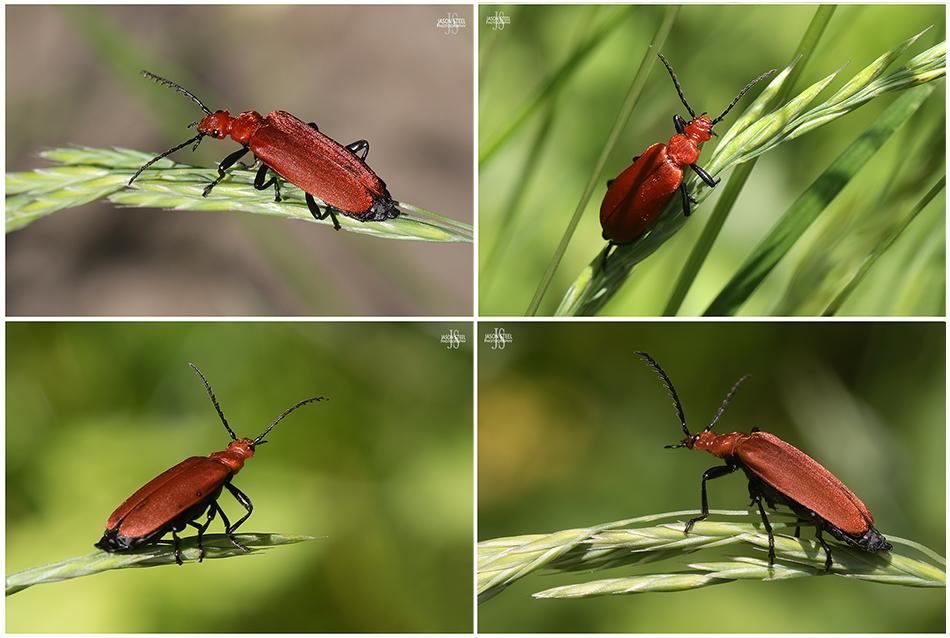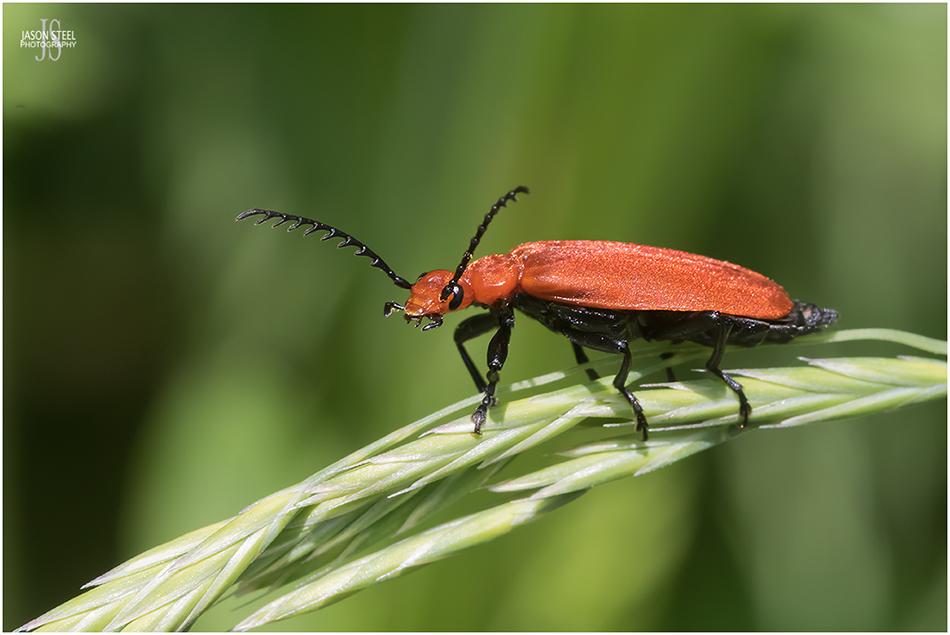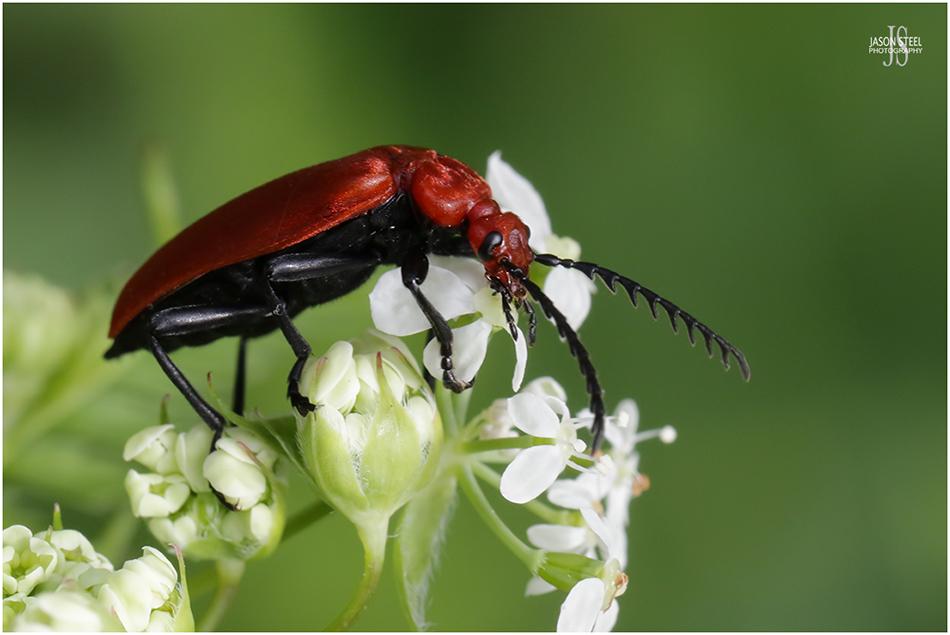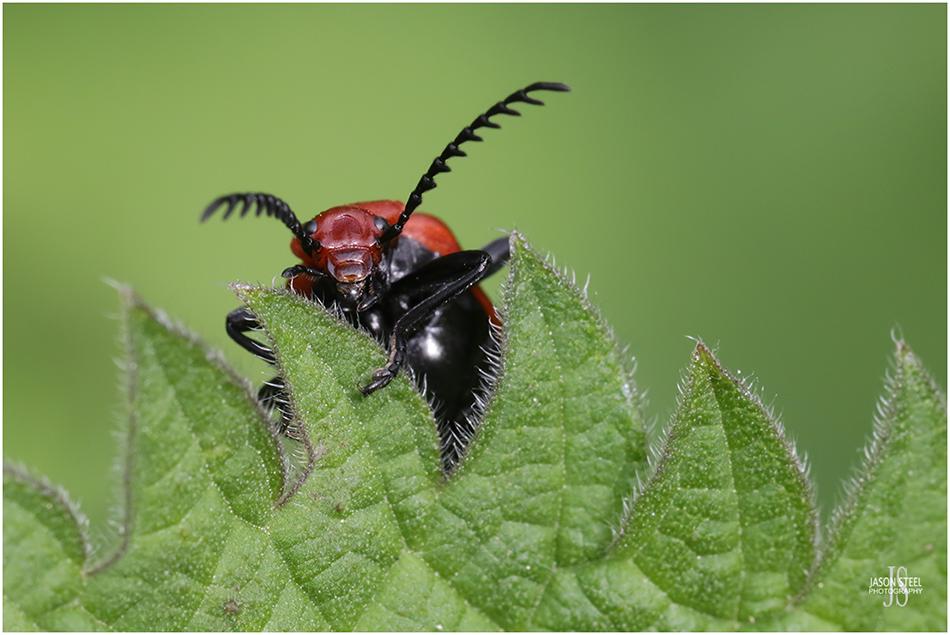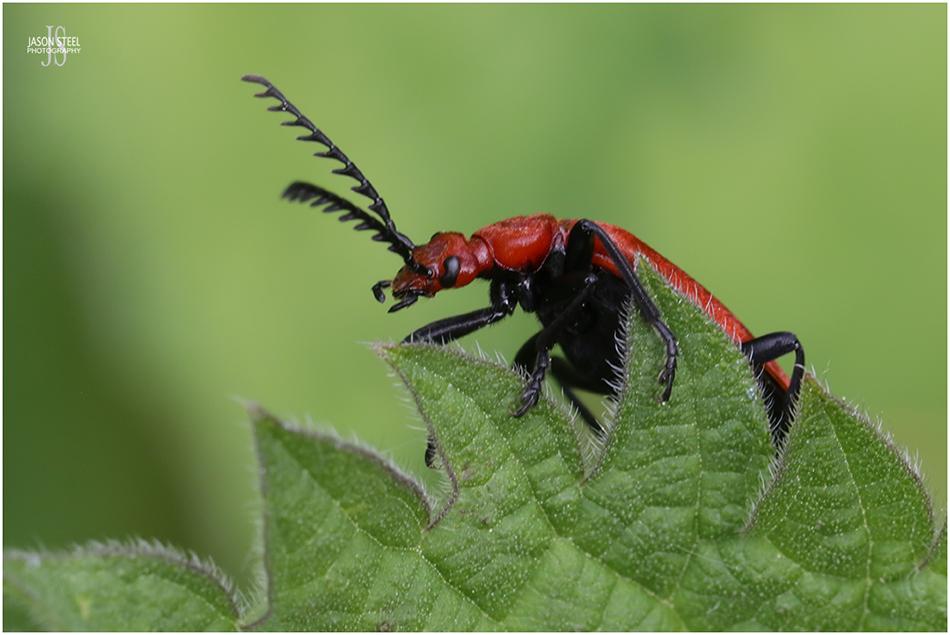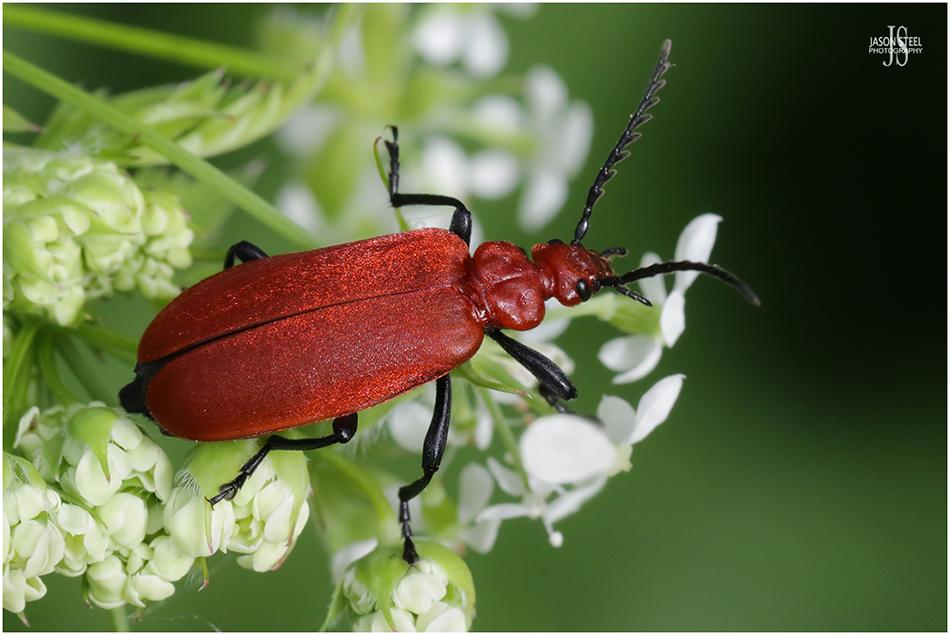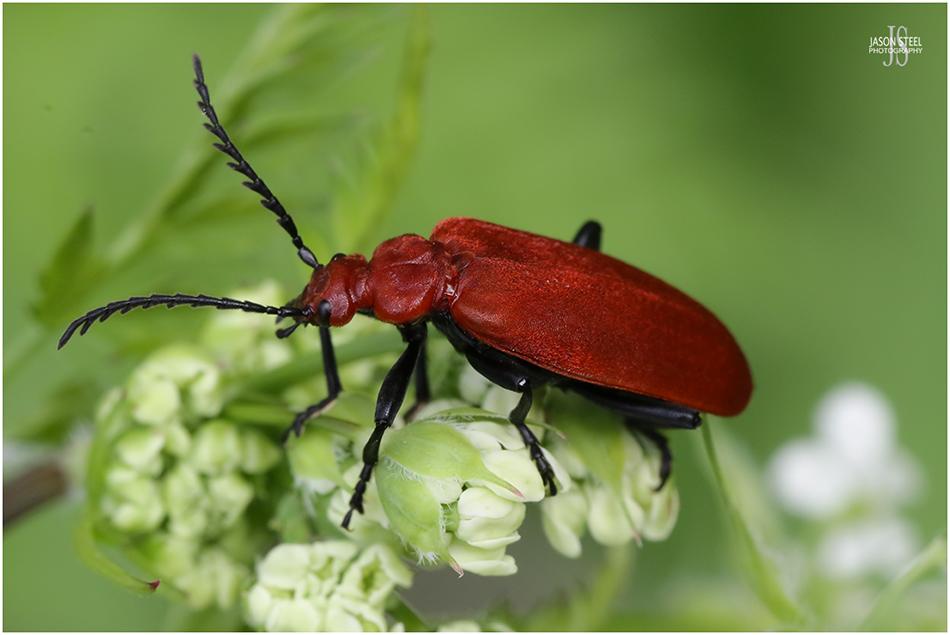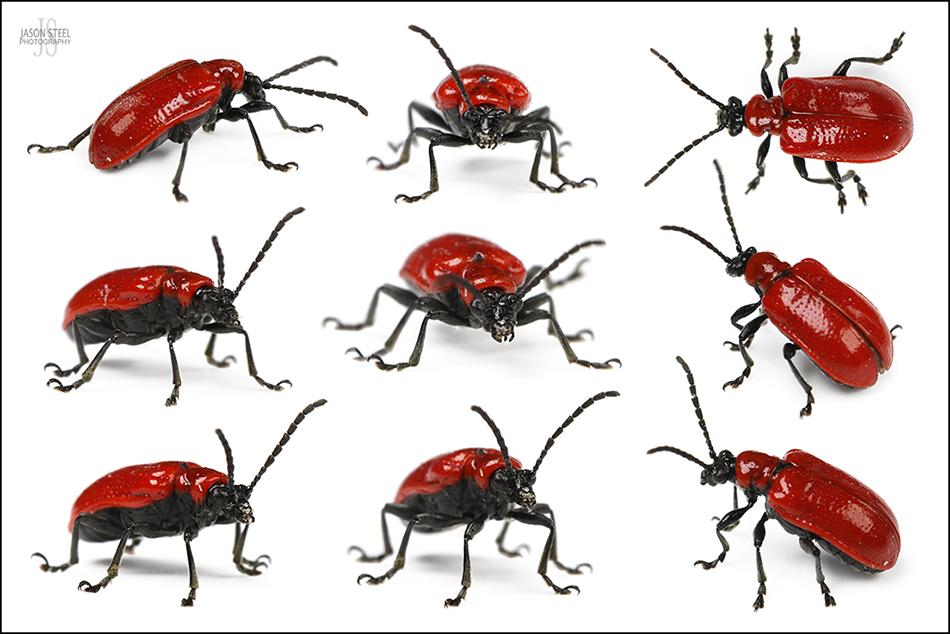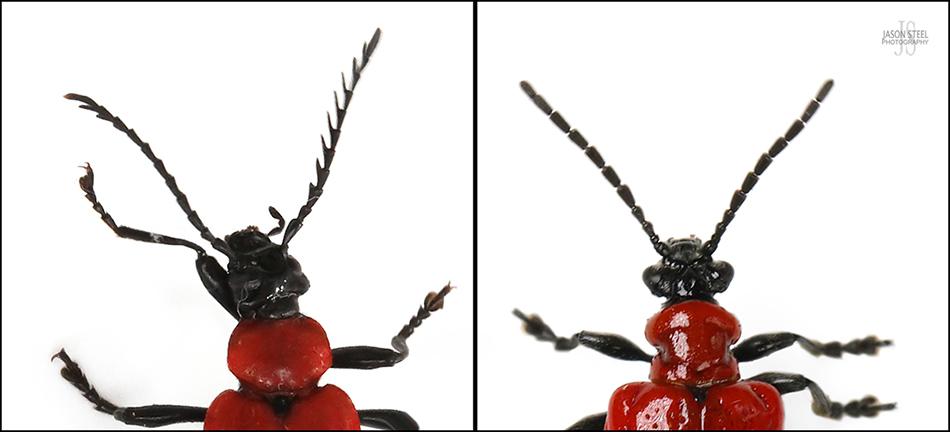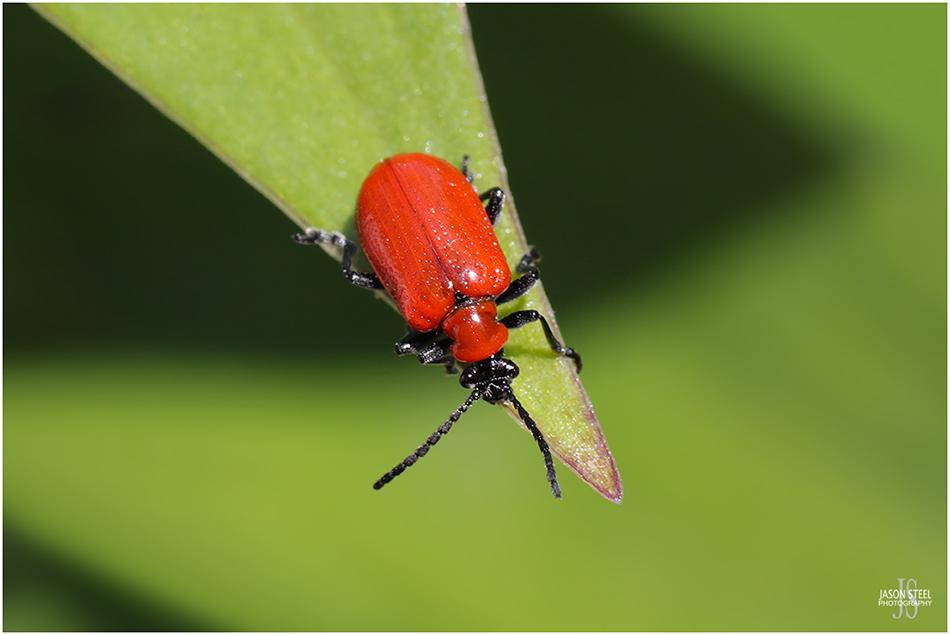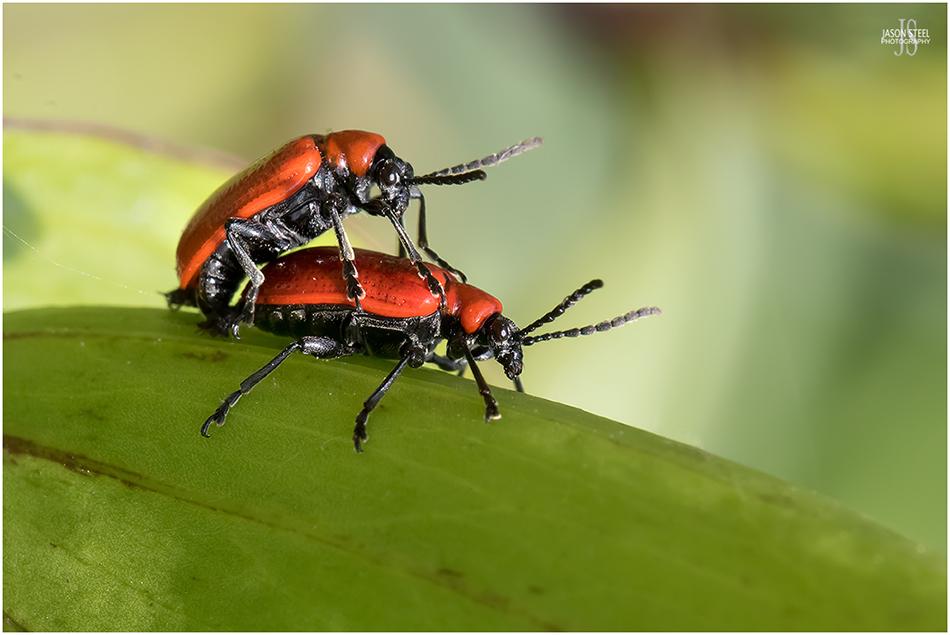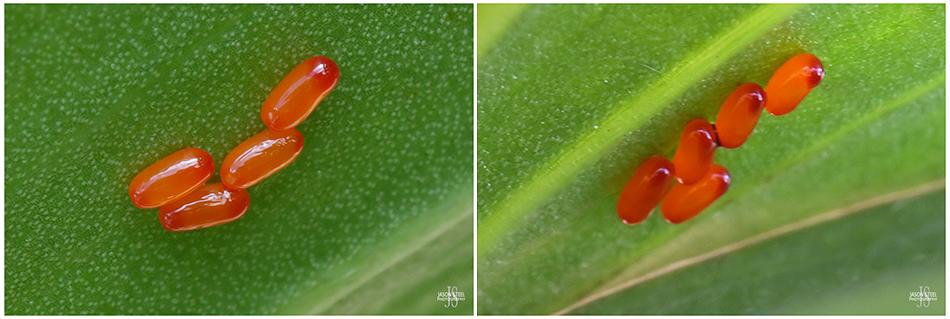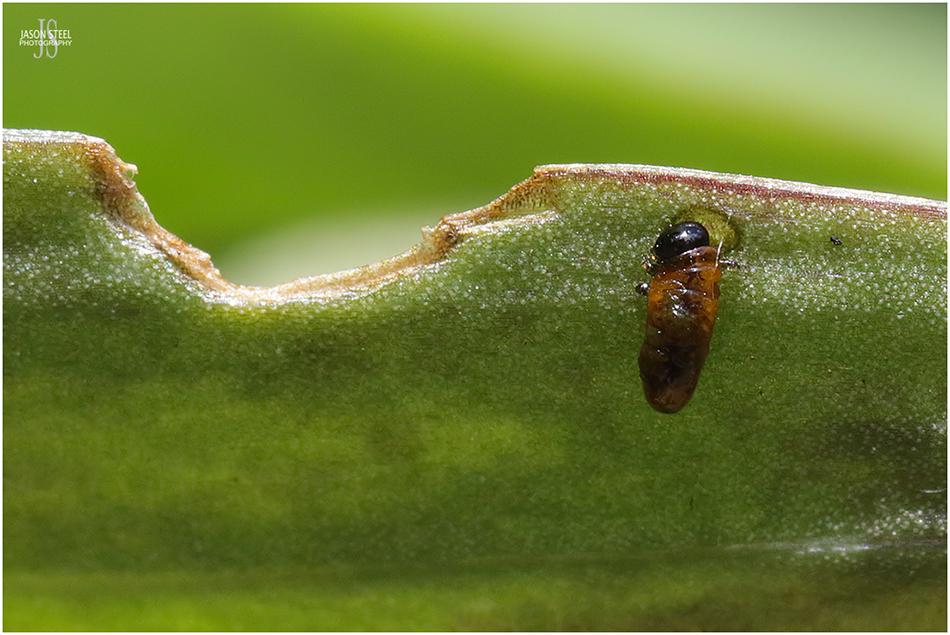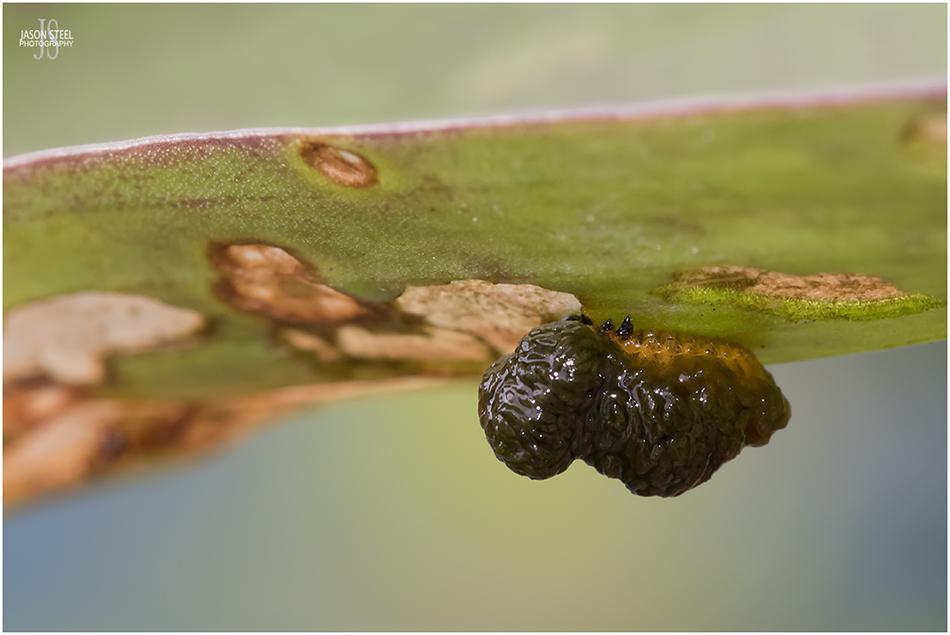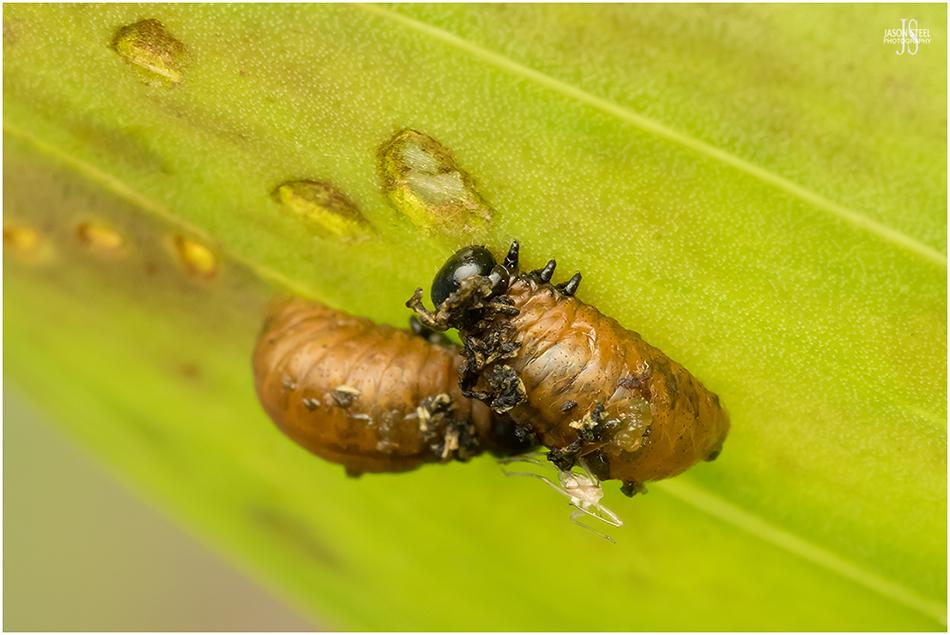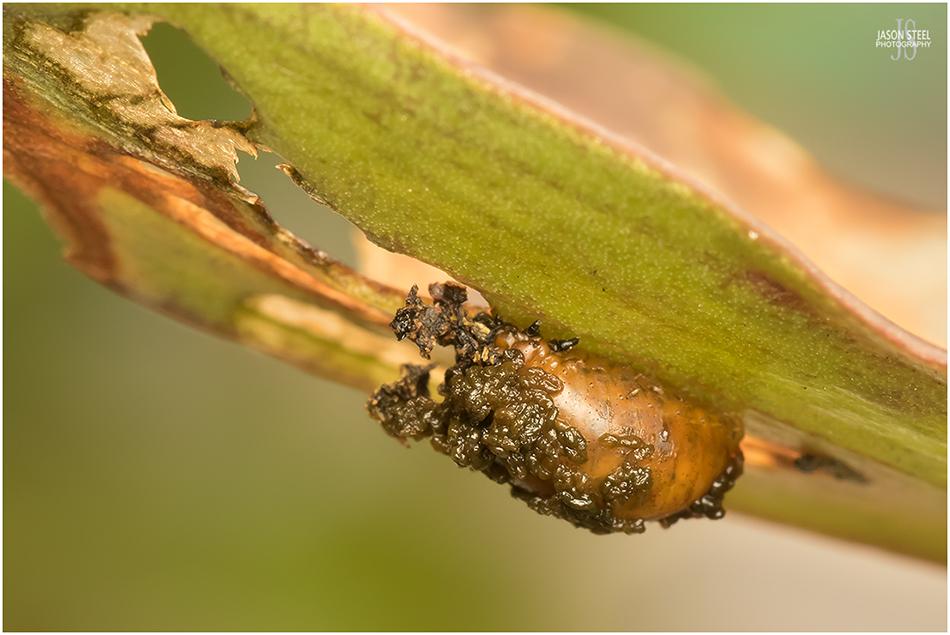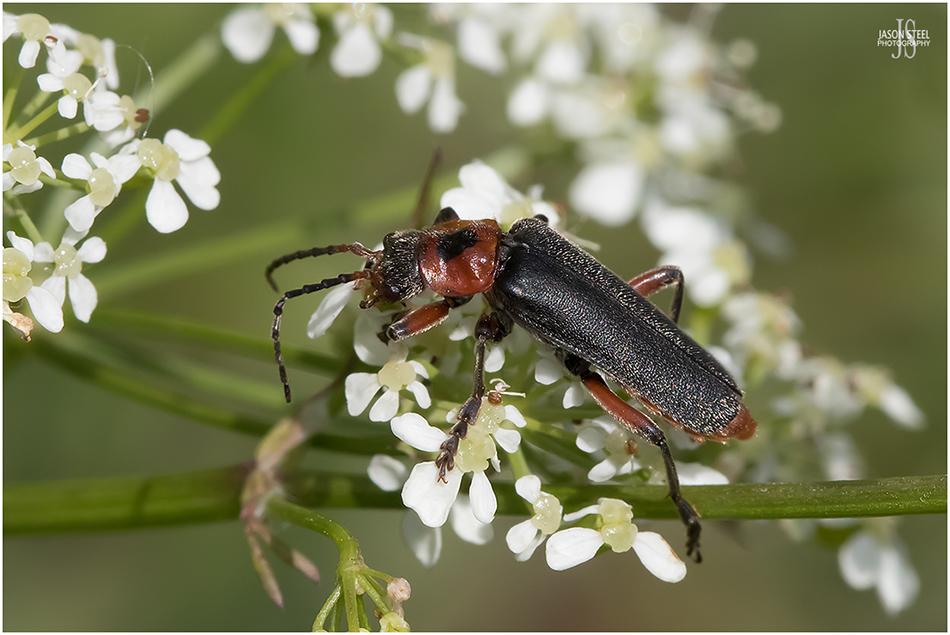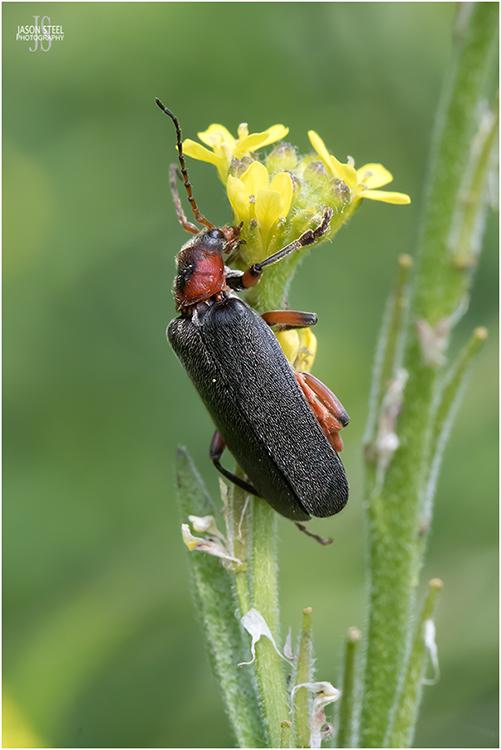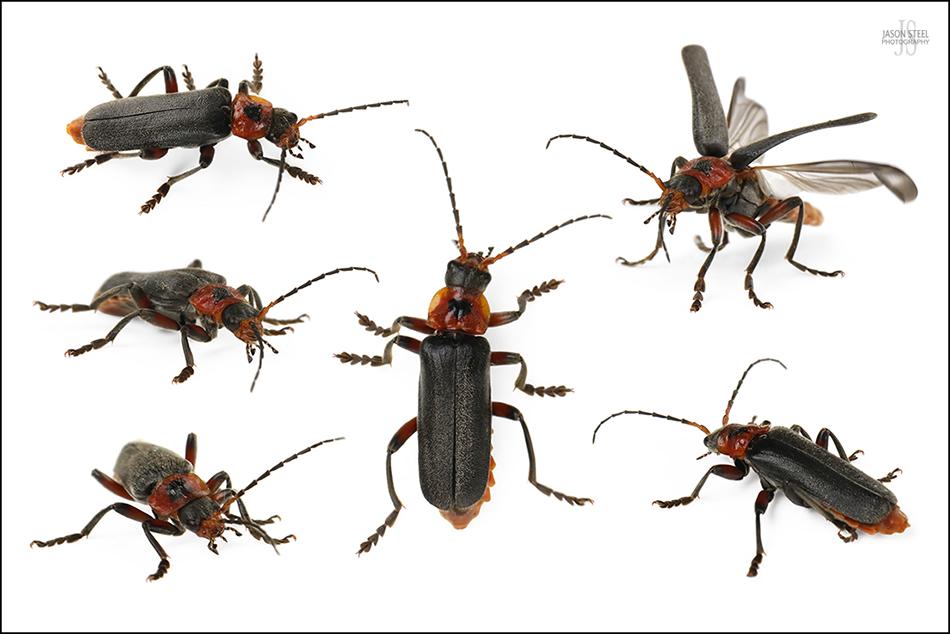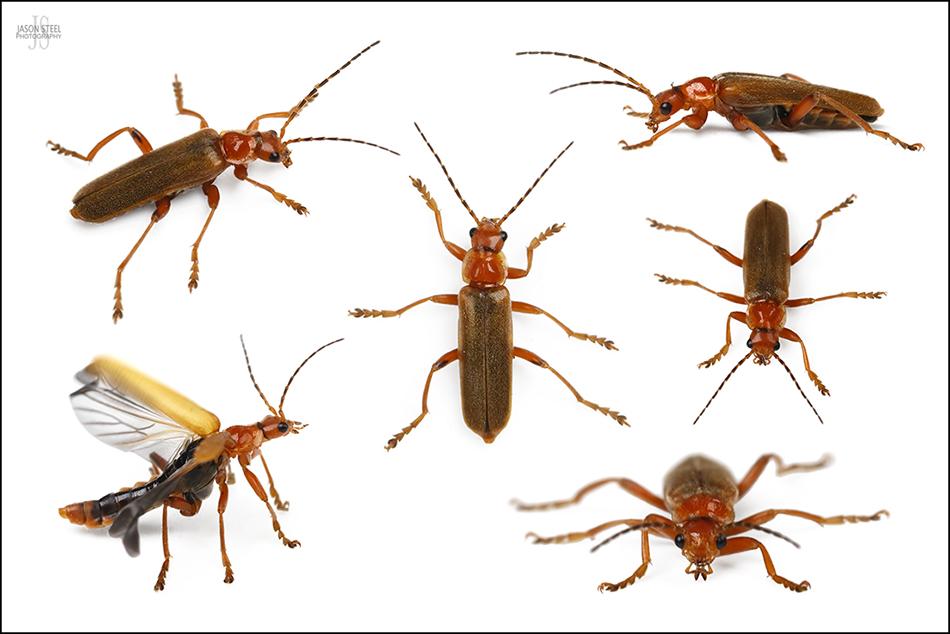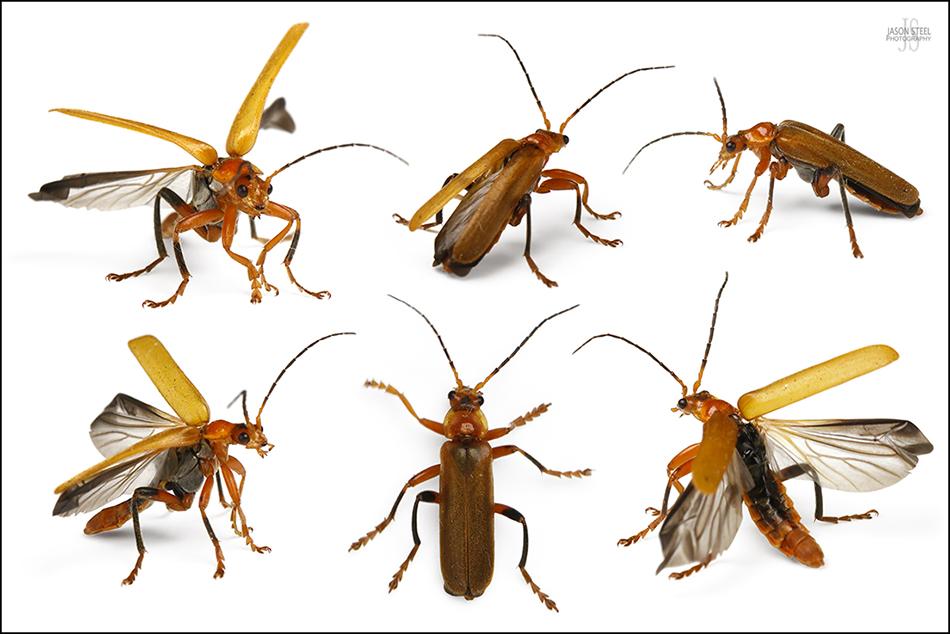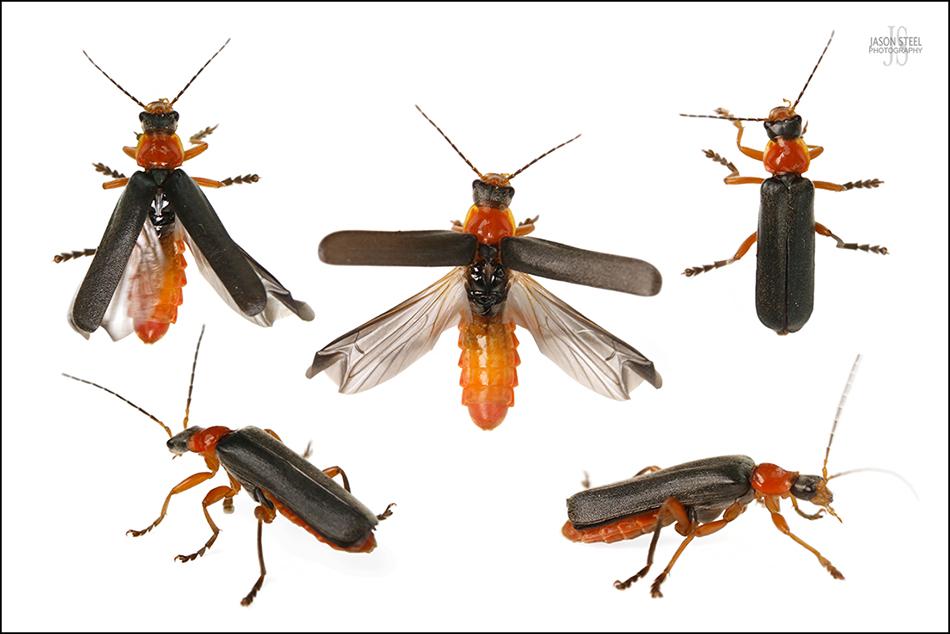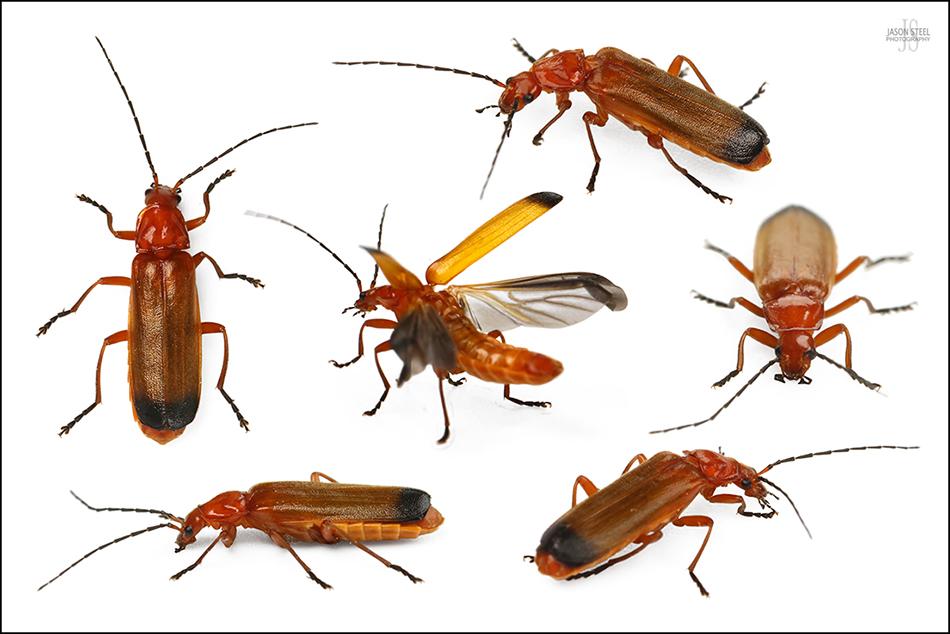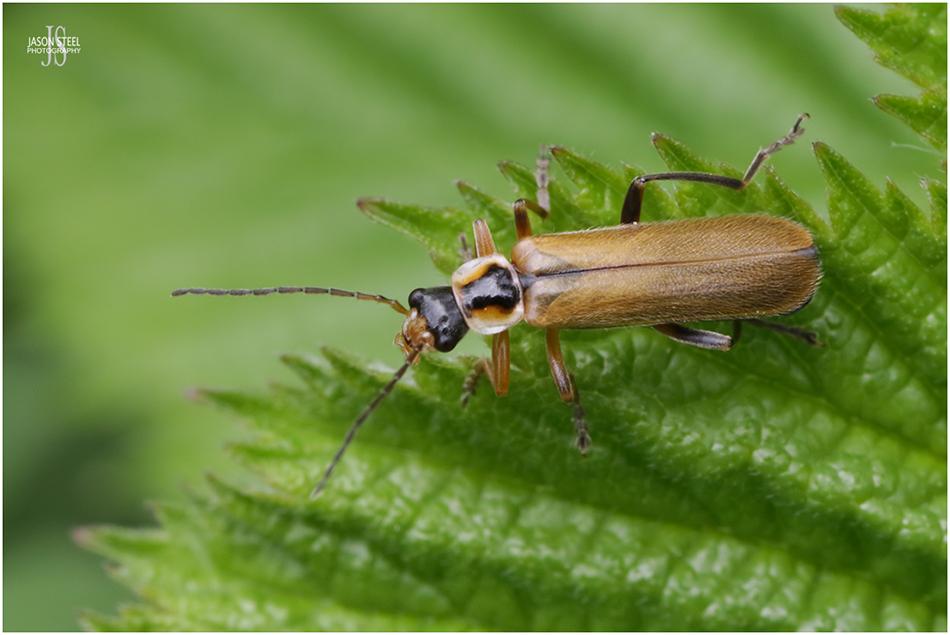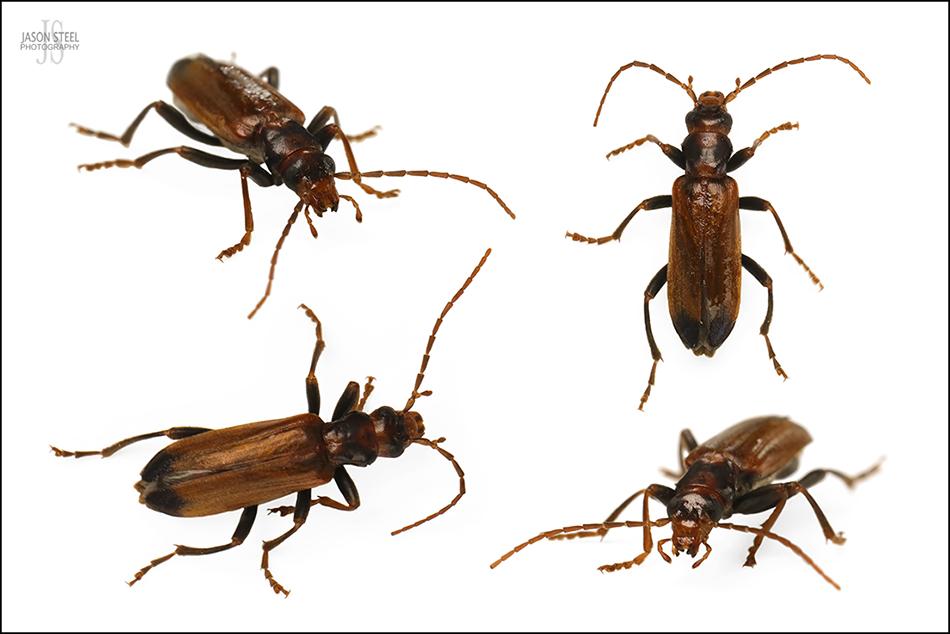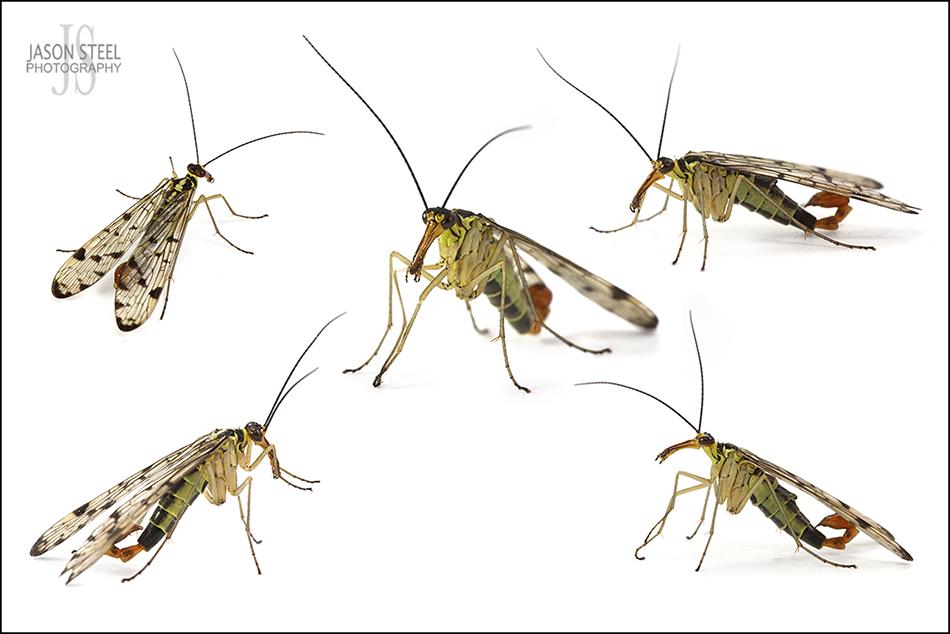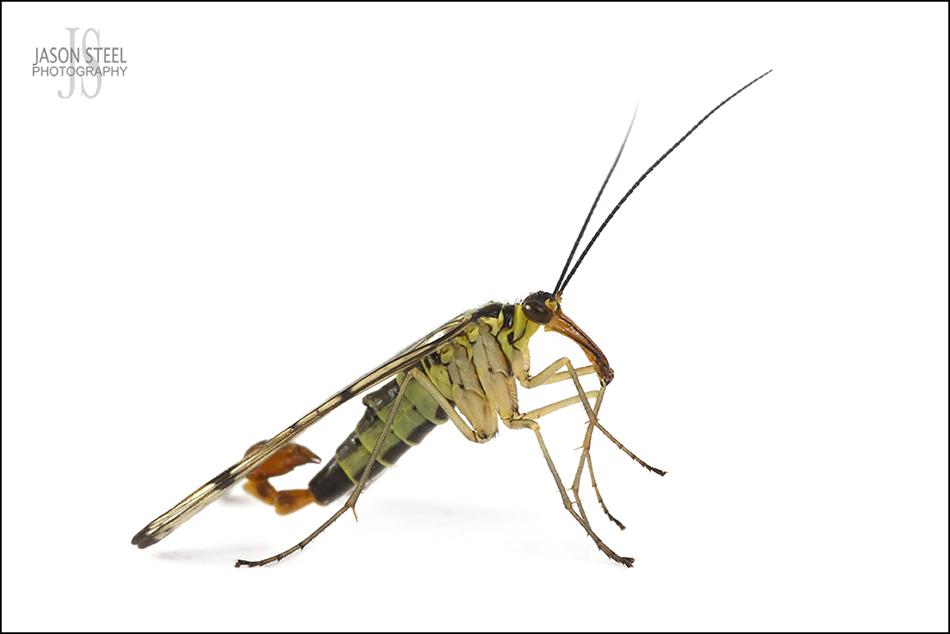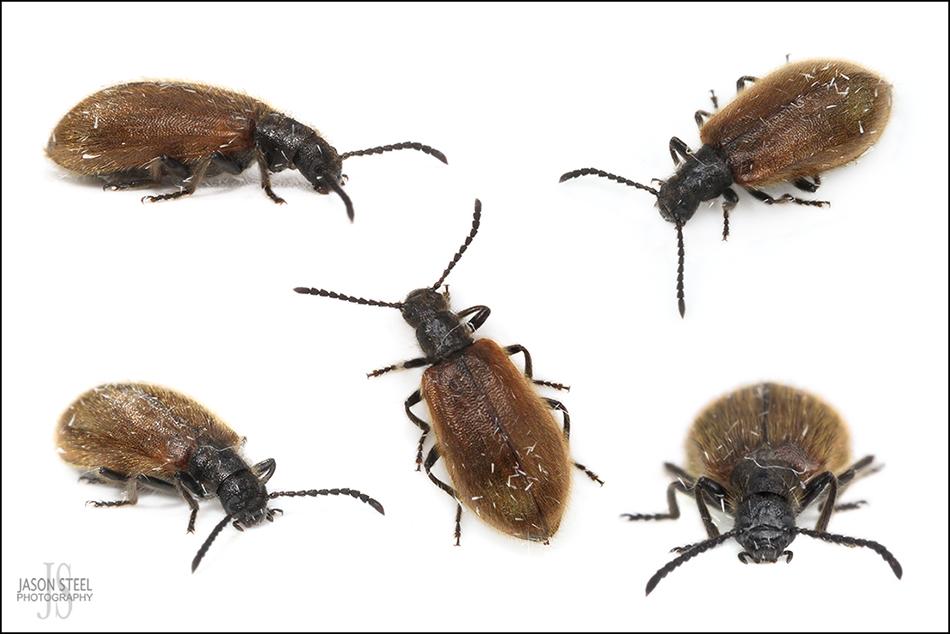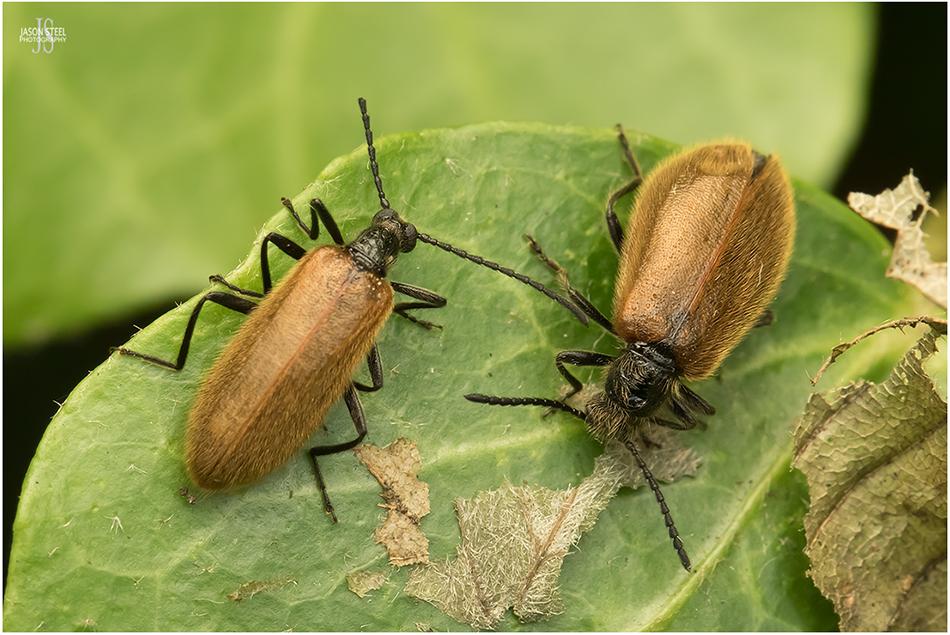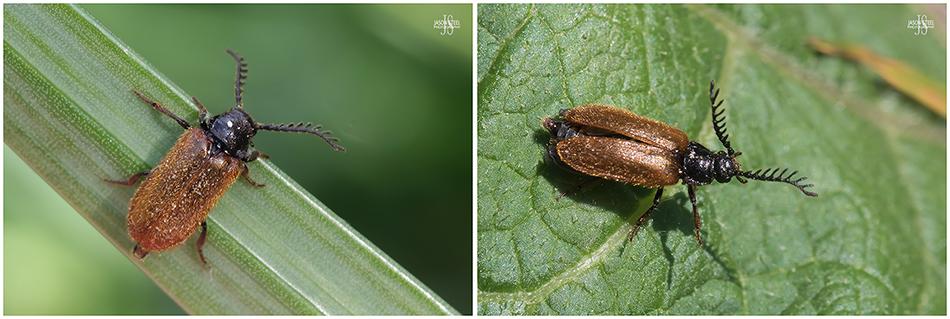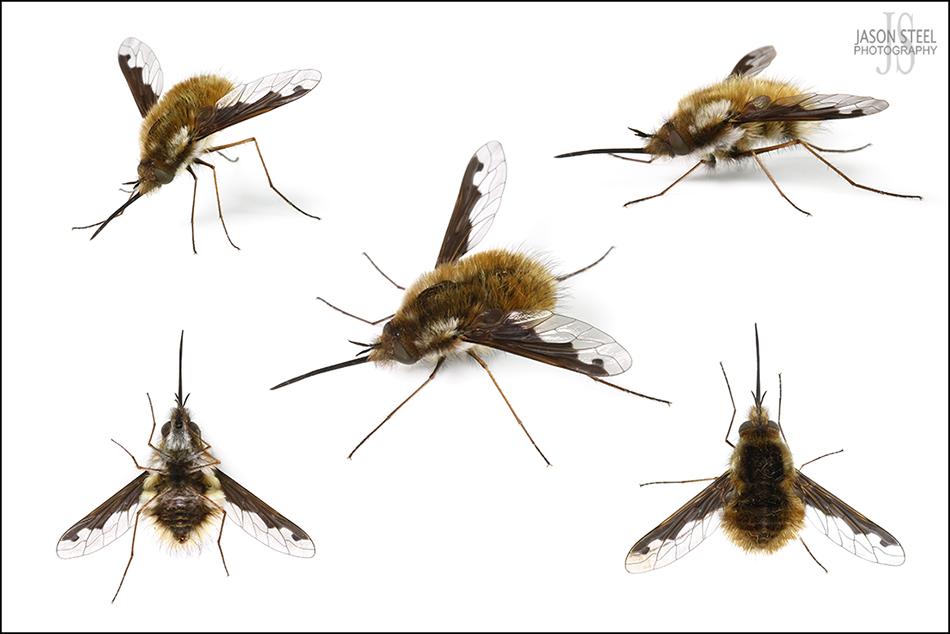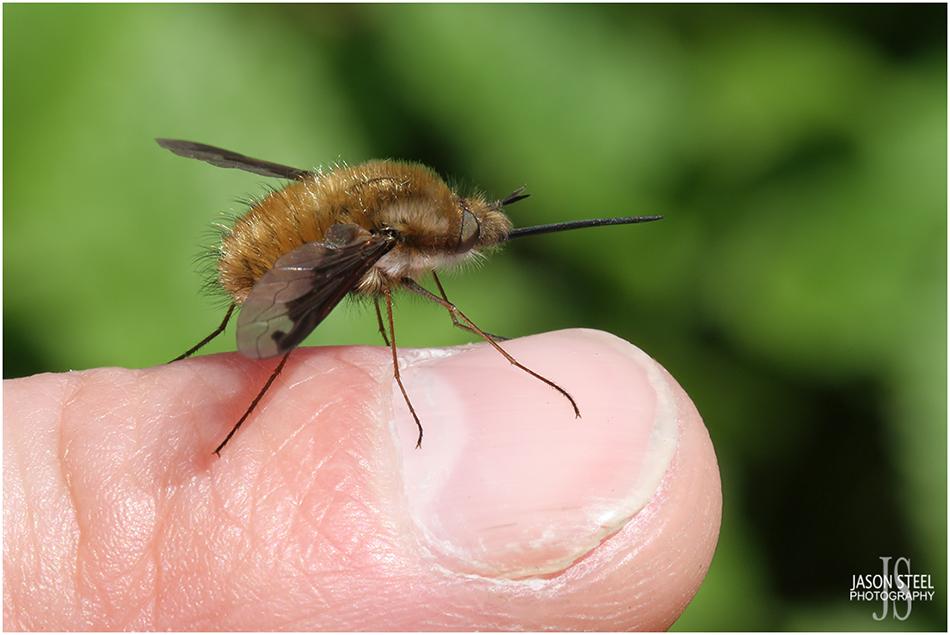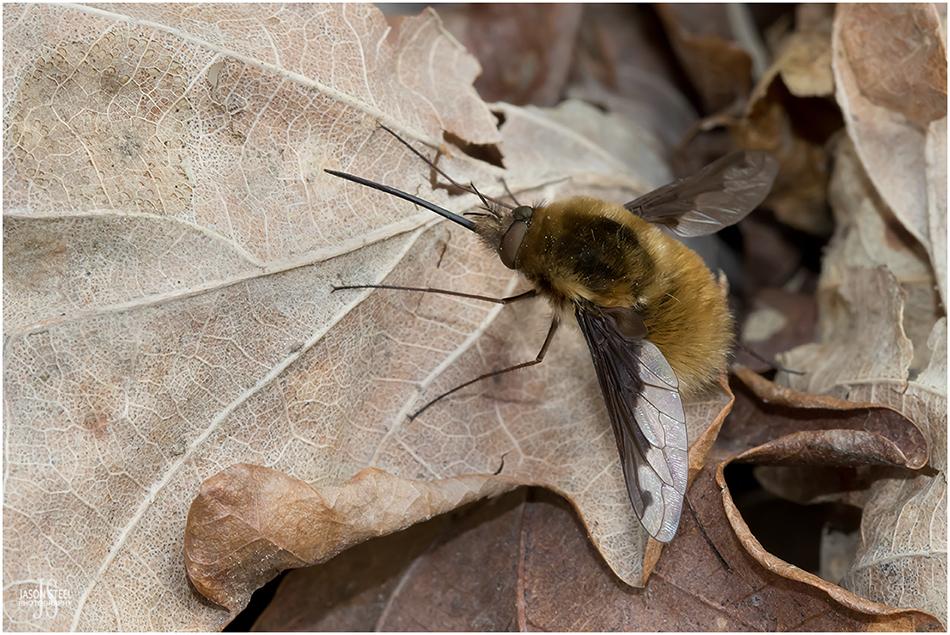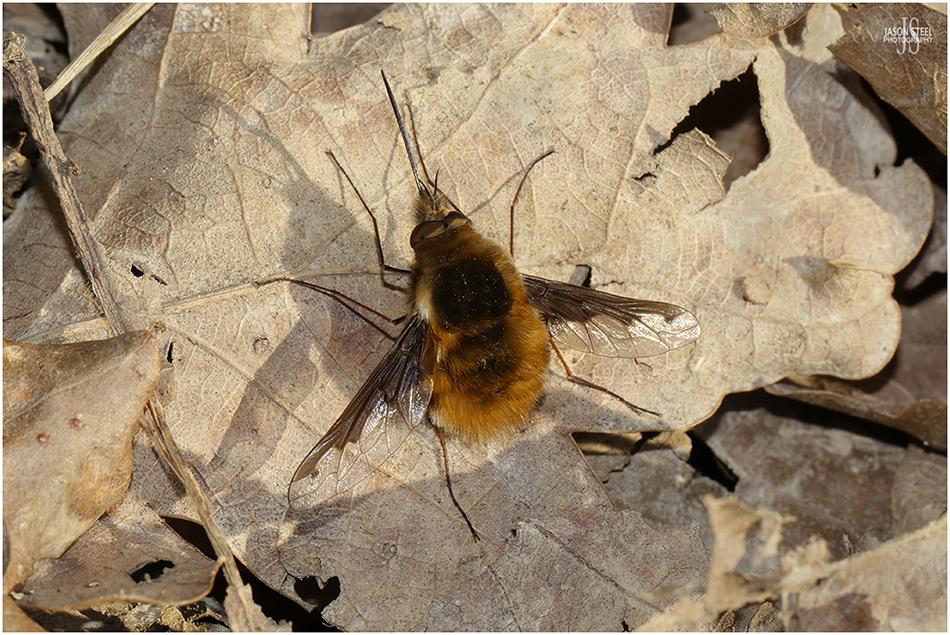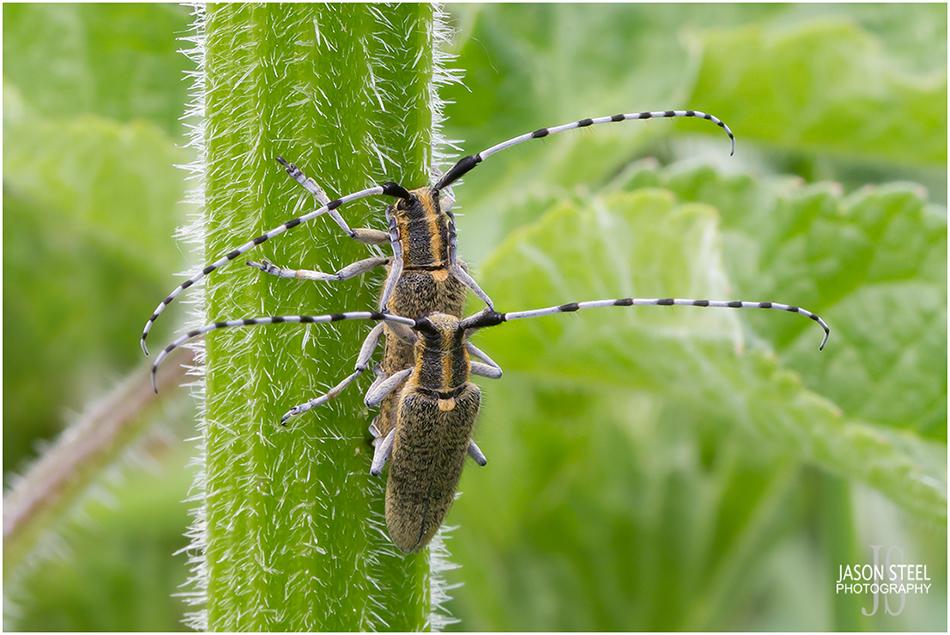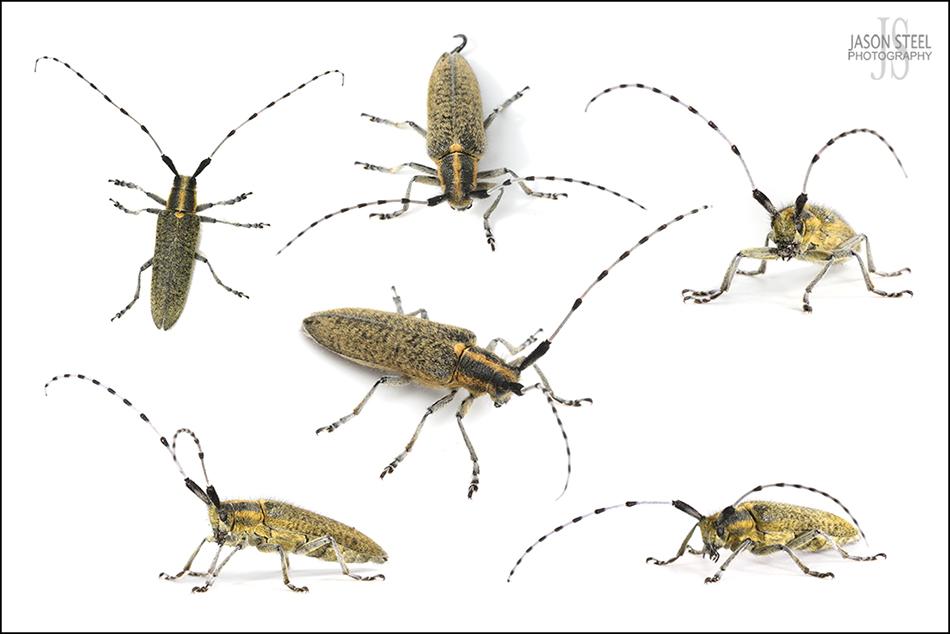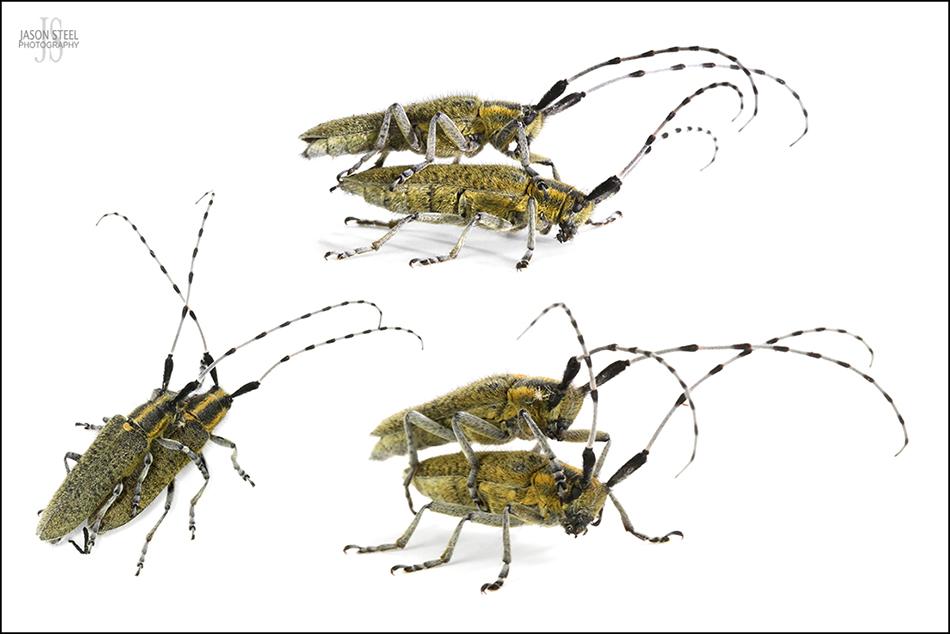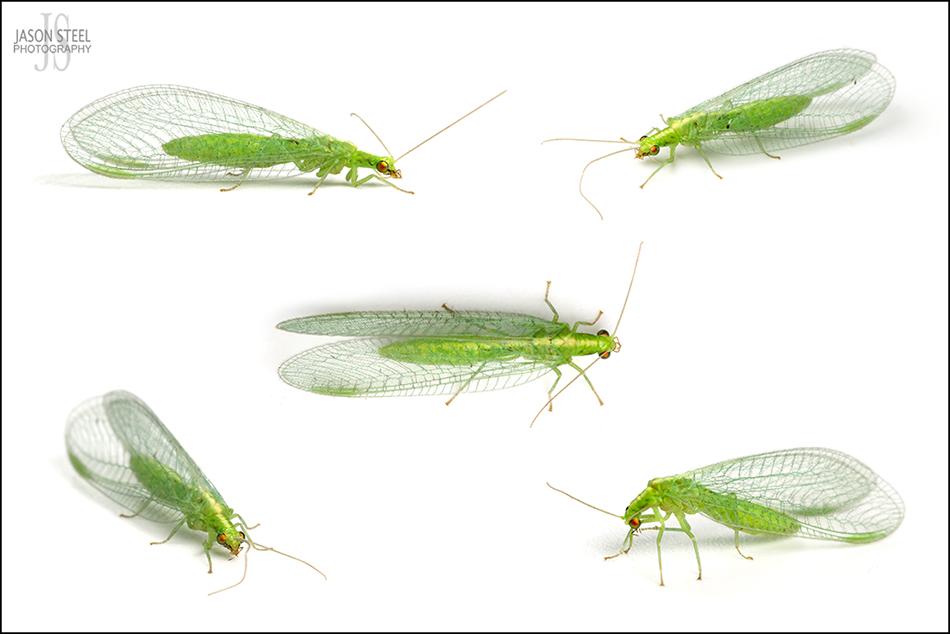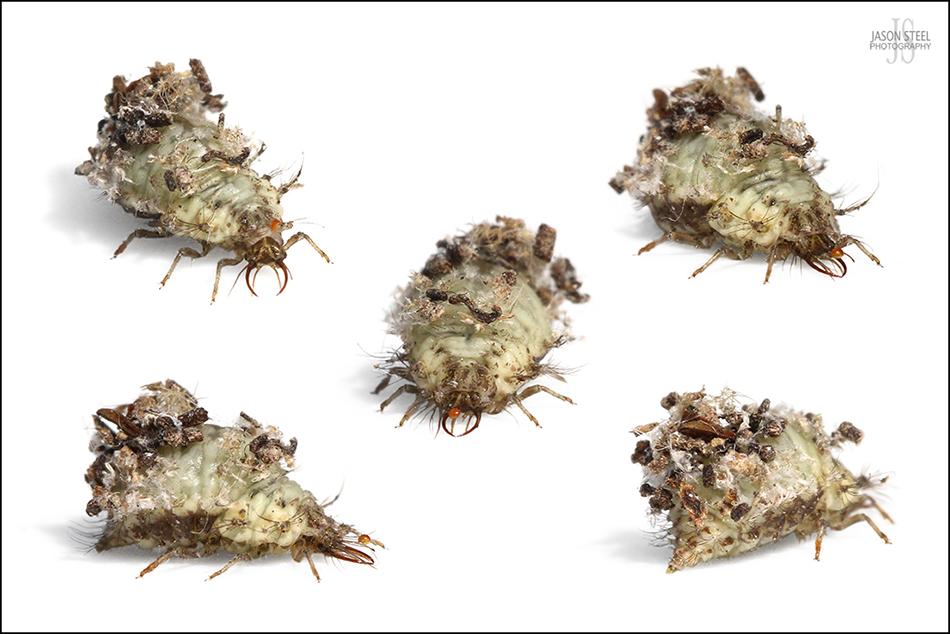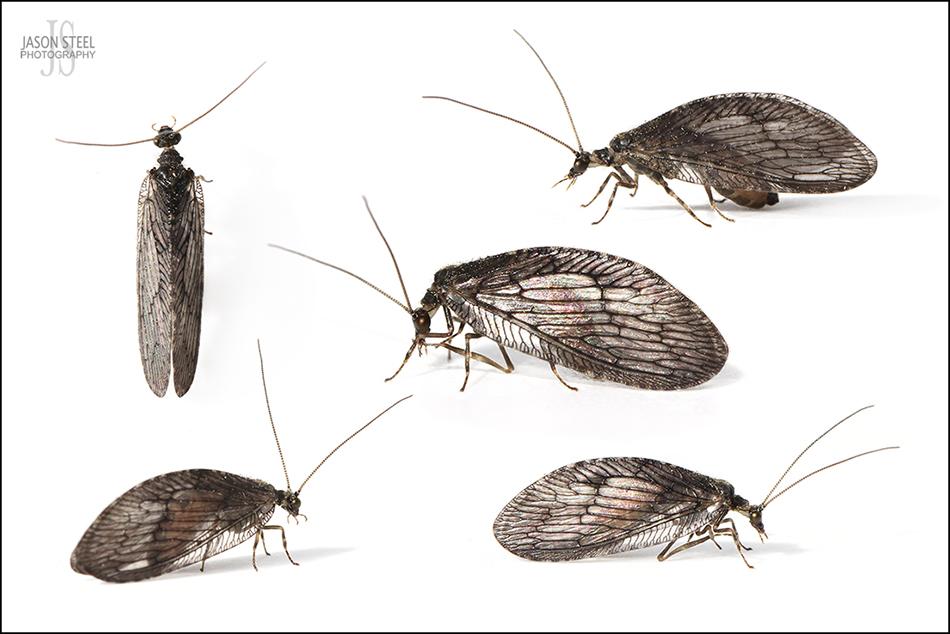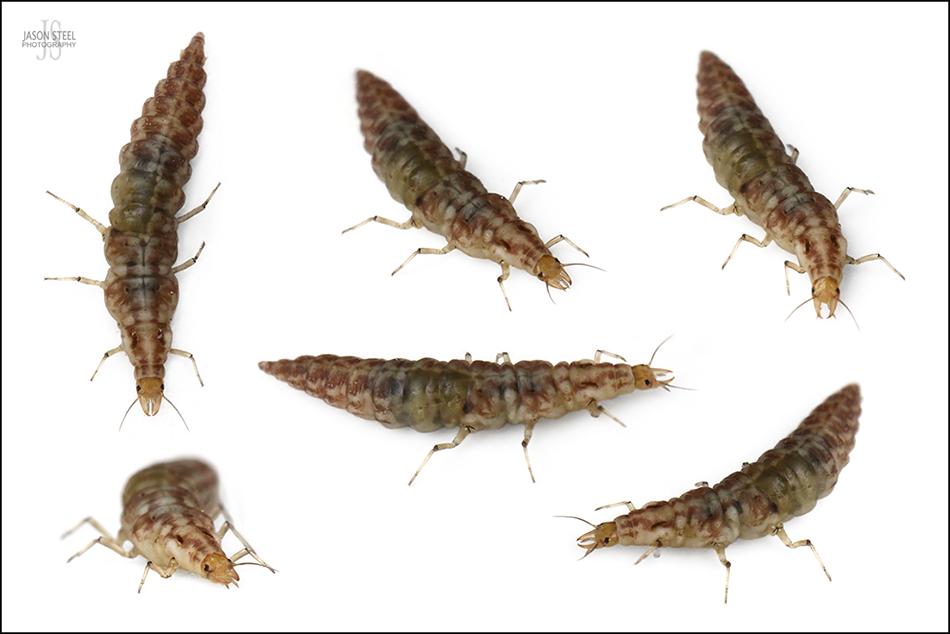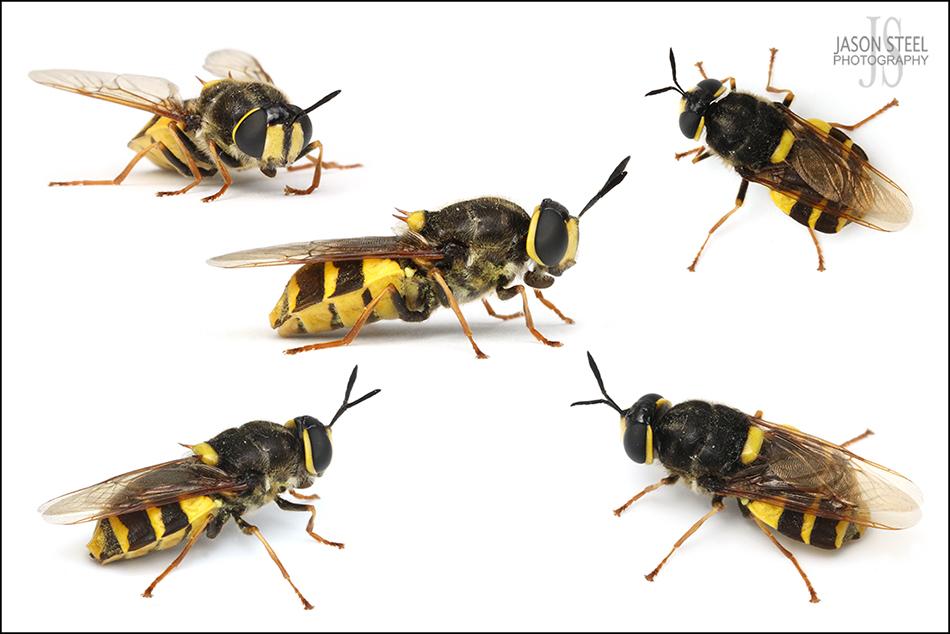Male Speckled Bush Cricket
Speckled Bush-Cricket (Leptophyes punctatissima)
Female Speckled Bush Cricket
Oak Bush Cricket (Meconema thalassinum)
A completely arboreal small pale green Bush Cricket, growing to a length of 13-17mm. Found on trees in Oak woodland, as well as hedgerows and garden shrubs, but feeding mainly carnivorously on other insects. Both sexes are fully winged. Seen from July - October. Eggs are laid in tree bark at the end of the summer and the young emerge the following June.
Male Southern Oak Bush Cricket in residential garden in Kent.
Female Long-winged Conehead Cricket
Long-winged Conehead Cricket (Conocephalus discolor)
The Long-winged Conehead Cricket is a green bush cricket found in grassland and woodland areas as well as damp habitats of the South and East of England. Growing up tp 17-19mm in length, they are one of the smaller bush crickets. They are identified by their green colour, brown-striped pointed head, and long brown wings. The Short-winged Conehead Cricket is very similar but its wings are barely half the length of its body.
It feeds largely on grasses but will also eat small insects as well. Nymphs emerge in May and adults can be found from the end of July. They are almost silent to human ears and produce only a feint hissing or buzzing sound. Eggs are laid in grass stems at the end of the summer.
LINK 1
Female Long-winged Conehead Cricket
Female Short-winged Cone-head Cricket
Short-winged Cone-head Cricket (Conocephalus dorsalis)
The Short-winged Cone-head Cricket has a body-length of 11-18mm. Usually, as its name suggests, the wings are short and undeveloped. Occasionally in long hot summers some specimens can develop fully functional wings allowing them to disperse further. This species is mainly found in the south of England but there are populations on coastal sites in northern England too. This species can be found on coastal saltmarshes, sand dunes, where it feeds on seeds heads, buds and flowers of maritime rushes and grasses. Inland it is found on lowland bogs, fens, reedbeds, river floodplains and by lakes and pools. Usually this species has a brown stripe running the length of its back but this stripe can also be black.
8mm male Welsh Chafer, found on Cow Parsley in a grass meadow in Kent, 24th June 2021.
Welsh Chafer (Hoplia philanthus)
The Welsh Chafer is one of smaller sized chafer beetles growing to a length of just 8-11mm. It is considered a locally common species with a scattered distribution across England and Wales and is more common in the West of the UK. Welsh Chafers have a black head and thorax and dark reddish brown wing cases. The underside is a dark metallic blue. After mating the female will bury her eggs in loose soil about 10-15cm beneath the surface. The larvae look similar to other chafer species and feed on a variety of plant roots. As with the Garden Chafer the larvae can cause considerable damage to grass roots. As the larvae grow they feed closer to the surface and birds and mammals can often be seen digging in lawns to prey upon the larvae. Habitat can include coastal areas, parks, gardens, shrubland, woodland edges and grassland. Adult beetles are diurnal and can be seen feeding from nectar on flowerheads as well as the leaves of plants, with a preference for birch, beech and hornbeam, from late May until the end of July.
The Welsh Chafer is similar in size to the Garden Chafer (Phyllopertha horticola) and the two can be confused. The Garden Chafer has a shiny green / black pronotum (head and thorax) and lighter orange wing-cases, with a more glossy finish, than the satin-finished, dark reddish-brown wing cases, and matt black pronotum, of the Welsh Chafer. The key identifying feature of the Welsh Chafer is the single long and curved meta-tarsal claw at the end of each leg. Males can be distinguished by the three leaves on the end of the clubbed antennae that aren't present on the antennae of the female.
20mm female Summer Chafer found in my garden in SE London 15th July 2016
One of three Rose Chafer Beetles found feeding on the white flowers of Cow Parsley at the edge of a grass meadow in Bexley, SE London, 3rd June 2021.
One of three Rose Chafer Beetles found feeding on the white flowers of Cow Parsley at the edge of a grass meadow in Bexley, SE London, 3rd June 2021.
One of three Rose Chafer Beetles found feeding on the white flowers of Cow Parsley at the edge of a grass meadow in Bexley, SE London, 3rd June 2021.
One of three Rose Chafer Beetles found feeding on the white flowers of Cow Parsley at the edge of a grass meadow in Bexley, SE London, 3rd June 2021.
One of three Rose Chafer Beetles found feeding on the white flowers of Cow Parsley at the edge of a grass meadow in Bexley, SE London, 3rd June 2021.
30mm Rose Chafer larvae, found under a damp log on Surrey heathland, 18th March 2024.
The subterranean larval stage of the Rose Chafer takes at least two years. Fully developed larvae grow to around 35mm in length before pupating in autumn, and emerging the following spring. The term "Chafer" is derived from the Old English "caefor", meaning “devourer”, but unlike the larvae of many other Chafer species the Rose Chafer larvae do not feed on grass or plant roots and are not usually considered to be a pest to gardeners. In fact these larvae are harmless detritivores, and valuable decomposers. They help to break down rotting vegetation and wood, and feed on decaying leaves and other organic matter. Their burrowing may also help to aerate the soil, which is beneficial to plants. Rose Chafer larvae can sometimes be found sharing decomposing wood habitat with Stag Beetle or Lesser Stag Beetle larvae, They can also be found in leaf mould, compost heaps and manure heaps, sometimes in large numbers. Keepers of roses may disagree though, as adult Rose Chafers, as well as feeding on pollen and nectar, can also feed on the flowers of rose bushes, leaving unsightly and irregular shaped holes in the petals.
Woodlice
There are around 40 different species of Woodlouse found in the UK. Woodlice are not actually insects but are terrestrial crustaceans, belonging to the suborder Oniscidea, within the order Isopoda. Amazingly they are more closely related to crabs and lobsters than they are to insects. Like most other isopods Woodlice shed their outer layer in two stages, half of their body at a time. First the old top layer sheds at the back half, and then the front half usually moults within a few days. The exuvia is then often consumed once shed. Woodlice have 14 legs, in 7 pairs. They require damp, dark environments to survive. They are therefore highly vulnerable to drying out in the warmer, drier months, so typically spend the daylight hours hidden away beneath rocks, logs, or any other solid objects on the ground. Woodlice can be found all year round but they are most numerous in the spring and autumn, when the conditions are damp and mild. Woodlice are detritivores, and like millipedes they play an important role in consuming decaying matter, and help with the decomposition and recycling of nutrients back into the soil. Woodlice excrete their solid waste into the ground, and often feed on it again. They don't urinate though. Liquid waste leaves their body in the form of the gas ammonia.
Woodlice use both their antennae and their uropods to help navigate in the dark. The
uropods are the appendages of the last body segment of a crustacean. Some species of Woodlouse are capable of excreting chemicals through these uropods to deter predators. Female Woodlice carry their fertilised eggs under their body in a pouch. Once hatched the young will remain in this pouch until large enough to disperse. Woodlice often form a large part of the diet of toads, some spiders and many centipedes. As a form of defence many Woodlice are capable of rolling themselves into a ball. How tight the ball is varies from one species to the next.
The Woodlouse species are one of the worst examples of ambiguity found in the use of common names in the UK, and are an excellent example of why the use of scientific names is so important. In the UK alone the Woodlice have around 50 different common names, that vary from one part of the country to the next. These include: Cheesy Bugs, Pill Bugs, Roly-Polies, and Chucky Pigs, to name just a few.
LINK
Common Rough Woodlice (Porcellio scaber), found beneath a log in shaded woodland at Ashdown Forest, East Sussex, June 2022.
Common Rough Woodlouse - (Porcellio scaber)
The Common Rough Woodlouse is a common and widespread species found across the UK. They typically grow to around 17mm in length and come in a variety of mottled shades and colours including grey, red, orange and yellow. The antennae regularly have orange bases. Their back is covered in very small tubercles which give the woodlouse a rough, matt appearance. The Common Rough Woodlouse is found in all habitats including gardens and is regularly seen under logs, rocks and under loose tree bark. Whilst woodlice prefer damp environments this species can also be found in drier conditions than many other species of woodlouse.
10mm Common Rough Woodlice (Porcellio scaber), found on a damp log in shaded woodland, on Surrey heathland, 18th March 2024.
9mm Common Rough Woodlice (Porcellio scaber), found on a wooden fence post in shaded woodland, on Surrey heathland, 18th March 2024.
9mm Common Rough Woodlice (Porcellio scaber), found on a wooden fence post in shaded woodland, on Surrey heathland, 18th March 2024.
9mm Common Rough Woodlice (Porcellio scaber), found on a wooden fence post in shaded woodland, on Surrey heathland, 18th March 2024.
9mm Common Rough Woodlice (Porcellio scaber), found on a wooden fence post in shaded woodland, on Surrey heathland, 18th March 2024.
Common Shiny Woodlice (Oniscus asellus), found beneath a damp log in shaded woodland on Surrey heathland, 18th March 2024.
Common Shiny Woodlouse / Common Woodlouse - (Oniscus asellus)
The Common Shiny Woodlouse is a common and widespread species found across the UK. They typically grow to around 14-16mm in length, but sometimes reach 18mm. Common Shiny Woodlice are typically grey, with irregular light patches. Brown specimens are also common. Occasionally orange / yellow morphs can be found. -
LINK
The Common Shiny Woodlouse can be found in most damp habitats, and there are few habitats in the UK where it does not occur. Typical habitats include woodlands, hedgerows, meadows, coastal cliffs, waste ground and gardens. This species is usually found at ground level under rocks and logs but is also common within leaf litter, in compost heaps and behind tree bark. They have a much higher tolerance of acidic soils than other woodlouse species. Adults and juveniles can be found all year round.
Common Pill Woodlouse (Armadillidium Vulgare)
Growing up to 18mm and found across the UK, the Common Pill Woodlouse is more frequently encountered in the south and east of England. Usually they are grey in colour but sometimes pink / orange specimens are found, like the one pictured above. When disturbed these woodlouse can roll into a perfect ball to protect themselves from predators, hence the name "Armadillidium". The Common Pill Woodlouse lives for up to 3 years and feeds on decaying matter. The Common Pill Woodlouse is able to withstand much drier conditions than other woodlice.
LINK 1 LINK 2 LINK 3 Identifying UK Woodlice
- - - - - - - - - - - - - - - - - - - - - - - - - - - - - - -
Pill Millipede, Glomeris marginata, found under a rotting log in SE London, 20th April 2021
Pill Millipede - (Glomeris marginata)
The Pill Millipede can look very similar to the Pill Woodlouse. The easiest ways to separate the two species is to look at the number of legs on each segment of the body, and to look closely at the last segment of the body, or tergite. The Pill Millipede has one large terminal tergite, but the Pill Woodlouse has several smaller terminal tergites. The Pill Millipede has two pairs of legs per body-segment but the Pill Woodlouse has just one pair per segment.
The Pill Millipede grows to around 8-20mm for females and 7-15mm for males. They can often be found amongst leaf litter and under logs and stones in woodland, fields and hedgerows. It's not unusual to find them living alongside woodlice, where both species feed on decaying organic matter. Pill Millipedes, much like the Pill Woodlouse, can roll themselves into a ball when threatened. However the Pill Millipede can't curl itself up into quite the perfect tight sphere that the Pill Woodlouse can.
A larger 60mm Millipede
A few species of Millipede in the UK can be considered as pests by gardeners because they don't confine themselves to eating decaying matter. Some will also eat seedlings, roots and bulbs as well.
20mm Flat-backed Millipede, Polydesmus cf angustus, found on Surrey heathland, March 2022.
Flat-backed Millipede (Polydesmus angustus)
Polydesmidae is a family of Flat-backed Millipedes. This family contains several identical looking species in the UK that are very difficult to tell apart, and can only be accurately identified by close examination of the reproductive organs of mature specimens. Due to their flat profile, and their legs that protrude sideways from their body, these harmless millipedes are often mistaken for carnivorous centipedes. As with all other millipedes they can be distinguished from centipedes by their two pairs of legs per body-segment in comparison to the single pair of legs on each segment of a centipede.
Like most species of millipede Polydesmus angustus are herbivores, and feed on decaying vegetation found at ground level. The flat body shape of this species allows it to move around the soil and leaf litter with ease as it searches for food. This shape is ideal for squeezing under logs and getting behind loose bark on fallen logs. Adult females lay their eggs in the soil and these hatch to reveal pale juvenile millipedes with a small number of body-segments and legs. These increase in number as the millipedes grow. Some species of millipede, including Polydesmus sp., use toxic secretions, including hydrogen cyanide, as a defence strategy to deter predators.
Polydesmus angustus is identical in appearance to the other members of the genus, Polydesmus coriaceus, Polydesmus denticulatus and Polydesmus inconstans.
- - - - - - - - - - - - - - - - - - - - - - - - - - - - - - -
40mm Centipede, Cryptops anomalans, found under a flowerpot in my SE London garden, 13th August 2023.
Cryptops anomalans
In the UK there are three well established Cryptops species, Cryptops anomalans, Cryptops parisi, and Cryptops hortensis. All three are very similar in appearance. Cryptops anomalans is the largest of the three species and can reach a length of up to 50mm. Some sources claim Cryptops anomalans can even exceed 60+mm. Cryptops parisi, and Cryptops hortensis are more commonly only 30-35mm in length. Centipedes in the Cryptops genus can be identified by counting the number of legs. Cryptops species have 21 pairs of legs. All other centipede species in the UK have either 15 pairs of legs, or 35+ pairs of legs.
Cyptops anomalans is an introduced and naturalised species in the UK, originally from southern Europe. In its natural range it is most commonly found beneath stones and rocks. In the UK this species is often found under objects such as flowerpots in residential gardens. In the UK we also have two much smaller Cryptops species too, that only grow to around 15mm in length. These are
Cryptops doriae and
Cryptops hispanus, but both have only been found at certain isolated sites.
Close inspection of Cyptops anomalans, under the right light, can reveal a characteristic 'X' suture on the first thoracic tergite, which distinguishes Cyptops anomalans from both Cryptops parisi, and Cryptops hortensis.
30mm Common Brown Centipede found under driftwood on Swanscombe Marshes, 24th July 2021
Common Brown Centipede - Lithobius forficatus
An 18-30mm Centipede with stocky build and 15 pairs of legs. The back pair of legs are extra long. The Brown Centipede is usually found in damp places under logs, stones and leaf litter. There are several very similar looking centipedes in the UK so microscopic examination is necessary for confirmation of species.
25mm Common Brown Centipede
27mm Banded Centipede, Lithobius variegatus. Found under a damp log in deciduous woodland in SE London, 27th March 2024.
Banded Centipede - (Lithobius variegatus)
I don't often bother trying to photograph centipedes for two reasons. Firstly, of the 57 different species of Centipede found in the UK most can't be accurately identified without extremely close examination. This is particularly true of those centipedes from the Lithobius genus, which has at least 17 species known from Britain and Ireland. Secondly, once exposed to light centipedes almost never stay still and will usually run continuously until they find somewhere dark to hide. This makes them extremely difficult to photograph.
The Banded Centipede, Lithobius variegatus, is an exception though. This centipede often remain motionless for brief moments, allowing photos to be quickly taken. With its short, stocky body, the Banded Centipede is similar in size and shape to the Common Brown Centipede, Lithobius forficatus, but the Banded Centipede has distinctive violet banding on its legs, and a hint of violet colouration to its back, making it easily possible to identify in the field. The Banded Centipede typically grows to a length of up to 30mm. At night he Banded Centipede hunts small invertebrates, especially woodlice and millipedes. This is a powerful species though and can tackle prey larger than itself. During the daytime the Banded Centipede hides away under rocks and logs, or in compost heaps. This species can be found all year round and is fairly widespread in Britain, and most common in Wales and the west of England.
A close-up of the powerful and venomous forcipules of the Banded Centipede, Lithobius variegatus.
27mm Banded Centipede, Lithobius variegatus. Found under a damp log in deciduous woodland in SE London, 27th March 2024.
27mm Banded Centipede, Lithobius variegatus. Found under a damp log in deciduous woodland in SE London, 27th March 2024.
- - - - - - - - - - - - - - - - - - - - - - - - - - - - - - -
Common Flesh Fly (Sarcophaga carnaria) in my garden in SE London, 6th July 2020
Common Flesh Fly - (Sarcophaga carnaria)
The Common Flesh Fly is a fairly large species of fly with a body-length of around 15mm. Flesh Flies lay their larvae in carrion, dung and rotting vegetation. Some species of Flesh Fly also lay their eggs / larvae in open wounds of mammals, hence their name. The maggot larvae reach full size in just a matter of days and then pupate under soil. They will not emerge until the following summer as adult flies. The adults will feed on most liquid foods whether from animals or plants. There are several Sarcophaga species that can only be distinguished by microscopic examination.
Bluebottle Blow Fly
The Bluebottle is a large fly growing up to 12mm in length. They are often found flying around the house making an irritating buzzing sound. These flies can lay up to 600 eggs which can hatch in just 48 hours in hot weather. The eggs will produce maggots that feed on decaying flesh. The adult flies however, feed on nectar. These flies are attracted to food, garbage and faeces as a potential egg-laying site. Once food is detected adult flies release a pheromone which alerts and attracts other flies.
Violet Ground Beetle - (Carabus violaceous)
Violet Ground Beetle - (Carabus violaceous and Carabus problematicus)
There are two types of Violet Ground Beetle in the UK, Carabus violaceous and Carabus problematicus. Both are very similar in appearance and both grow to around 30mm in length, making them some of our largest beetles. They can be distinguished by close inspection of their elytra (wing-cases). C. violaceous are smoother whereas C. problematicus have more defined ridges and dimples. Both types of Violet Ground Beetle are woodland or heathland species, but both can also be found in gardens too. These beetles are nocturnal hunters, feeding on unwanted garden pests such as fly larvae, slugs and other insects. They will also on occasion feed on over-ripe fruit. During the day these beetles usually hide away under logs and stones. Some specimens are arboreal and will spend their time in trees feeding on tree slugs and sap-runs from trees.
Violet Ground Beetle - (Carabus violaceous)
Violet Ground Beetle (Carabus problematicus) found under a log in woodland adjacent to Surrey heathland, 24th July 2020.
Violet Ground Beetle (Carabus problematicus) found under a log in woodland adjacent to Surrey heathland, 24th July 2020.
20mm Ground Beetle, Abax parallelepipedus, found under a damp log on Surrey heathland, 9th April 2023
Ground Beetle - (Abax parallelepipedus)
Abax parallelepipedus is a large and fairly distinct species of Ground Beetle. Adults grow to a body length of around 17-22mm. The beetle is entirely black with a highly glossy shine and a distinctly flat appearance. The pronotum has two obvious parallel depressions, known as foveae. This beetle is common and widespread in the UK, and is often found under damp logs. Adults can be found all year but records peak in late summer and autumn.
8mm Broad-Shouldered Leaf Beetle (Chrysolina oricalcia) found on Cow Parsley at a grass meadow site in SE London, 3rd June 2021
Broad-Shouldered Leaf Beetle - Chrysolina oricalcia
This Broad-Shouldered Leaf Beetle is found throughout England, Wales and southern Scotland in hedgerows, open woodland, and grassland, but is generally considered as widespread but moderately scarce. The nocturnal adult beetle grows to around 7-9mm in length and feeds on a variety of of leaves and pollen from umbellifer flowers, such as Cow Parsley and Hogweed. The larvae feed only on the leaves of the host plants. The overall appearance of the beetle is uniformly glossy black in colour, with a slightly blue metallic sheen. Specimens exhibiting a copper or violet sheen can also be found. Adult beetles overwinter and peak in numbers around mid-summer. After over-wintering they resume feeding in April and May and start laying eggs on the host plant, which hatch quickly. The larvae also develop quickly and reach full size in 3-5 weeks before climbing down to the grown and pupating in the soil. They emerge after 3 weeks as adult beetles and join the previous generation of adult beetles around June in feeding on the host plants. Chrysolina oricalcia is sometimes mistaken for Chrysolina haemoptera, but Chrysolina haemoptera has a far duller appearance than the glossy Chrysolina oricalcia.
Leaf Beetle, Chrysolina banksi, found on riverside vegetation in SE London, 8th October 2017.
6mm Knotgrass Leaf Beetle, Chrysolina polita, found on a wooden gate at the edge of a grass field on the South Downs, near Brighton. 17th May 2022.
Knotgrass Leaf Beetle - Chrysolina polita
The Knotgrass Leaf Beetle, Chrysolina polita, is common and widespread across the UK, and usually grows to around 6 - 8.5mm in length. This beetle is fairly distinct with its chestnut brown elytra and metallic green pronotum. Adults can be seen on the foliage of trees and bushes, from March to October, before overwintering as an adult beetle below the surface of the soil, in leaf litter, or under loose bark. The Knotgrass Leaf Beetle feeds on a range of plants including mints, nettles and thyme.
2.5mm Ragwort Flea Beetle - photographed in my garden in SE London in July, on and around Ragwort plants.
Ragwort Flea Beetle / Tansy Flea Beetle - (Longitarsus jacobaeae)
These tiny beetles are just 2 - 4mm in length and are light golden brown in colour. They feed on the leaves of Ragwort plants and can usually be found from June to September.
This beetle has been used in conjunction with the Cinnabar Moth (Tyria jacobaeae) as a biological pest control for the spread of Ragwort.
Cabbage-stem Flea Beetle - (Psylliodes chrysocephala)
These tiny beetles are just 3 - 4.5mm in length and are variable in colour. Like fleas in adult form they have very powerful hind legs that they use to jump great distances for their size to evade potential predators. Unlike fleas though these beetles feed on the leaves of cabbage and other plants in the Brassica family, leaving tiny unsightly holes. The larvae feed on the stems. The larvae can be treated with parasitic nematodes.
Black-Headed Cardinal Beetle taking flight
Black-Headed Cardinal Beetle - (Pyrochroa coccinea)
There are three types of Cardinal Beetle in the UK. The Black-Headed Cardinal Beetle can be distinguished by its size (14 to 20mm) and its black head. Common or Red-Headed Cardinal Beetles (Pyrochroa serraticornis) obviously have a red head, and the Scarce Cardinal Beetle (Schizotus pectinicornis) are smaller and only grow to 7-9mm, and also usually have a black mark in the middle of their pronotum. The Black-Headed Cardinal Beetle is not likely to confused with the Scarce Cardinal Beetle due to the big difference in size and the Scarce Cardinal Beetle is generally confined to deciduous woodland, particularly Birch, at sites in the Scottish Highlands, around Inverness.
Cardinal Beetles are carnivores and live on smaller insects but will also feed on pollen too. Cardinal Beetles are sometimes confused with the smaller Lily Beetle, which is regarded as a pest by gardeners, but Cardinal Beetles can be distinguished by their distinctive comb-like antennae. The fingers on the comb-like antennae are especially long and prominent on the male Scarce Cardinal Beetle. Cardinal Beetles are most commonly seen on flower heads found at the edge of woodland, usually from May to the end June, but occasionally from April to July. These beetles are also sometimes referred to as the Scarlet Fire Beetles. These beetles often bask openly in sunlight perched on large leaves, flower heads or on tree bark, but they're never too far from decaying wood. The aposematic colouration serves as a warning that they are toxic to many predators. Cardinal Beetles are often associated with sites near water where there is always an abundance of other flying insect prey.
20mm male Black-Headed Cardinal Beetle
18mm female Black-Headed Cardinal Beetle, found in ancient woodland in north Kent, 4th June 2023.
18mm Black-Headed Cardinal Beetle taking off. Found in north Kent, 4th June 2023.
18mm female Black-Headed Cardinal Beetle, found in ancient woodland in north Kent, 4th June 2023.
Cardinal Beetle larvae (P. cf coccinea) found under loose tree bark in a wooded park in Bexleyheath, SE London, 21st March 2021.
The larvae of all three Cardinal Beetle species are long, flat and orange in colour and develop under loose bark of broad-leaved trees, particularly Oak and Beech. The larvae of Pyrochroa coccinea and Pyrochroa serraticornis are very similar in appearance but can be separated by a raised transverse line at the base of the eighth tergite (body segment) found on Pyrochroa serraticornis. The smaller Schizotus pectinicornis can be distinguished by its curved cerci (pincer-like appendages at the tail end) as opposed to the straight cerci of the other two species.
Cardinal Beetle larvae (P. cf coccinea) found under loose tree bark in a wooded park in SE London 21st March 2021
Cardinal Beetle larvae (P. cf coccinea) found under loose tree bark in a wooded park in SE London 23rd March 2021
14mm Red-Headed Cardinal Beetles found on grass and low vegetation growing under trees in a park in SE London, 5th June 2021
Red-Headed Cardinal Beetle - (Pyrochroa serraticornis)
The Red-Headed Cardinal Beetles (Pyrochroa serraticornis) is easily distinguished from the other two species of Cardinal Beetle and the Lily Beetle by its red head. The Red-Headed Cardinal Beetle is less impressive than the larger Black-Headed Cardinal Beetle and only reaches around 14-15mm in length. They are also a slightly duller and more velvety red. Both the adult and larvae of both species are similar in behaviour and habitat but the larvae of the two species are very difficult to separate.
Red-Headed Cardinal Beetles found on grass and low vegetation growing under trees in a park in SE London, 5th June 2021
One of several Red-Headed Cardinal Beetles found on grass and low vegetation growing under trees in a park in SE London, 5th June 2021
Red-Headed Cardinal Beetle, Canterbury, Kent. 2nd May 2022.
Red-Headed Cardinal Beetle, Canterbury, Kent. 2nd May 2022.
Red-Headed Cardinal Beetle, Canterbury, Kent. 2nd May 2022.
Red-Headed Cardinal Beetle, Canterbury, Kent. 2nd May 2022.
Red-Headed Cardinal Beetle, Canterbury, Kent. 2nd May 2022.
Black-Headed Cardinal Beetle and Scarlet Lily Beetle
Friend or Foe?
The Scarlet Lily Beetle and the Black-Headed Cardinal Beetle are both regular visitors to English gardens and they can easily be mistaken if you don't know how to tell them apart. The Scarlet Lily Beetle can be a pest in large numbers and can defoliate and damage lily plants. However, the Black-Headed Cardinal Beetle is a gardener's friend and a vivacious predator. They will readily hunt many of the insects considered to be garden pests.
So let's look at how to tell which is which. The first and most obvious difference between the two species is the size. The Black-Headed Cardinal Beetle grows to a substantial length of around 20mm, whilst the smaller Scarlet Lily Beetle rarely exceeds 8-9mm. If you can get close enough for a good look then the key feature to look for is the antennae. The antennae of the Black-Headed Cardinal Beetle have a feathery, comb-like appearance, unlike the knobbly appearance of the antennae belonging to the Scarlet Lily Beetle. Other differences include the overall rounded appearance of the Lily Beetle as opposed to the flatter profile of the Cardinal Beetle. The Scarlet Lily Beetle has tiny dimples on the elytra (wing-cases) that are not present on the Black-Headed Cardinal Beetle. The Scarlet Lily Beetle is also usually a bright, glossy, shiny red as opposed to the duller satin red of the Black-Headed Cardinal Beetle.
Are there any other red & black beetles they could be mistaken for?
Yes, there are other red & black species of beetle in the UK that are sometimes mistaken for either Cardinal Beetles or Lily Beetles. These include:
The Lycidae family of Net-Winged Beetles,
Platycis minutus, and the slightly larger and more common
Pyropterus nigroruber.
LINKThe Hazel Leaf-Roller,
Apoderus coryli.
LINK
One of two Scarlet Lily Beetles found on my garden lilies in SE London 1st June 2021
A mating pair of Scarlet Lily Beetles found on my garden lilies in SE London 2nd June 2021
This pair of mating Lily Beetles remained joined together for over 24hrs. During that time they continued to wander around both of my lily plants. After 24 hrs they laid 4 eggs in one batch on the underside of a leaf. Shortly after they moved to another leaf and laid a further 5 eggs in a second batch. After 9 eggs had bee laid the pair separated and one Lily Beetle flew away.
Scarlet Lily Beetle eggs laid in two batches on the underside of the leaves of my Lily plants, 3rd June 2021.
Scarlet Lily Beetle larvae feeding on lily plant, 12th June 2021
Within a week of the eggs being laid the larvae hatch and quickly join in the feeding frenzy on the lily leaves. Even just a couple of days old, and at just 2mm in length, the black-headed larvae are already leaving unsightly holes in the leaves.
5.5mm Scarlet Lily Beetle larvae feeding on lily plant, 29th June 2021
Rustic Sailor Beetle, found in a grass Meadow in SE London, 27th May 2021
Rustic Sailor Beetle (Cantharis rustica)
The Rustic Sailor Beetle is one of 41 British species of Soldier and Sailor Beetle spread across 7 different genera. These species get their name from the bright colours of the adult beetles and range from 2-15mm, depending on species. It's usually the darker specimens that are referred to as Sailor Beetles, rather than Soldier Beetles.
The Rustic Sailor Beetle is a predator in both adult and larvae stage. Adults hunt mainly on flower heads and other vegetation in grassland and woodland clearings. They will also feed on vegetation too. This is one of our largest Cantharis species and grows from 9 - 13mm. They can look similar to the Grey Soldier Beetle (Cantharis nigricans) and the Dark Sailor Beetle (Cantharis fusca), however Cantharis rustica can be identified by the dark mark in the centre of their orange / red pronotum that does not reach the top of the pronotum. The antennae are mainly black with the first 2 or more segments being orange. Rustic Sailor Beetles are common and widespread throughout England and Wales. Mating occurs in May and June and although generally considered a summer species this beetle can be active all year round on sunny days and is remarkably tolerant of cold weather. Eggs are laid in damp soil and the larvae feed on snails, worms and the larvae of other insects.
Rustic Sailor Beetle, found in a grass Meadow in SE London, 27th May 2021
Rustic Sailor Beetle, found in a grass Meadow in SE London, 8th June 2021
10mm Soldier Beetle (Cantharis pellucida), found at Ashdown Forest, East Sussex, 20th May 2022
Sailor Beetle / Soldier Beetle - (Cantharis pellucida)
Cantharis pellucida is another common and widespread species of Soldier Beetle. Adults typically grow to 9-13.5mm in body-length and can usually be found in meadows and hedgerows from the end of April until July, or sometimes August. Adult beetles feed on nectar, pollen and small invertebrates. They can often be found feeding on the flowers of hawthorn, thistles and umbelliferous flowers, or hunting other small nectar feeders. The caterpillar-like larvae can usually be found at ground level feeding on small invertebrates.
6.5mm Soldier Beetle (Cantharis decipiens), found on low vegetation in Lullingstone, Kent, 27th April 2023
Soldier Beetle (Cantharis decipiens)
Cantharis decipiens is a small Soldier Beetle that grows to a body-length of around 6-9mm. It is usually found around woodland areas, but can also be found in a variety of habitats where there are trees and shrubs. It appears to have a preference for Hawthorn blossom. The distinctly marked thorax separates this species from other similar Soldier Beetles. Cantharis decipiens can be found from April onwards, and throughout the summer, up until early August. Sightings for this species peak in May. Both the adults and larvae are predatory, but the adults also feed on pollen and nectar.
Scorpion Fly (Panorpa communis)
This is the most common of three species of Scorpion Fly (Panorpa Sp) found within the UK. All of which are very difficult to distinguish and can only be separated by close examination of the sexual organs under a microscope. These flies have a wing-span of around 35mm and they are mainly scavengers, feeding on dead insects, which they regularly steal from spider's webs. They will also feed on rotting fruit and even bird droppings. They are weak fliers and are often found in shady areas of hedgerows, nettle-beds and gardens. The larvae live in soil and leaf litter.
Male Scorpion Fly
The male Scorpion Fly presents the female with a gift of a dead insect or drops of saliva to placate the female and avoid being eaten by her before attempting to mate. These insects are harmless to humans and do not possess any form of sting. The scorpion-like tail on the male is in fact its genitalia. Females have a straight tail.
8mm Male and female Rough-Haired Lagria Beetles found on ivy in my SE London garden, 29th June 2021.
6mm Male False Firefly Beetles found in a grass meadow in Rottingdean, near Brighton, East Sussex. 19th May 2022.
False Firefly Beetle - (Drilus flavescens)
The False Firefly Beetle is a small and nationally scarce species, confined largely to the South Downs of England. They have a preference for dry chalk grassland and woodland edges, and where they are present they can be locally common. This species demonstrates extreme sexual dimorphism. Males grow to around 5-10mm in body-length, with a black head and pronotum, and a covering of fine, golden-brown, upstanding hairs on their elytra. The females reach around 25-35mm in length and retain a larval appearance. They completely lack wings or wing-cases. It is only usually the males that are encountered. When female specimens are encountered they are usually within the shells of small snails, upon which they prey.
The first stage larvae are also covered in fine hairs and grow to around 20mm in length before seeking out a suitable snail to prey upon and then pupate within the shell of a snail they have consumed. The second stage larvae have a reduced number of legs and greatly reduced numbers of hairs. These larvae inflict a venomous bite to the snail, with digestive enzymes that allow the larvae to burrow within the snail. The larvae take 2-3 years to fully develop and within that time 2-4 snails are consumed each year.
Adults can be found from May until early August. Males are typically encountered either on low foliage, grass stems, or on soil pathways, where they follow the pheromone scent trails of mature female specimens. Males are short-lived and are not believed to feed during their adult stage. After mating end to end females lay hundreds of eggs just below the surface of soil, or beneath compacted leaf litter.
The males can sometimes be mistaken for Lagria Beetles, but the feathery, comb-shaped antennae of the False Firefly Beetle quickly distinguishes them. Adult females resemble the female Glow Worm, Lampyris noctiluca.
The harmless Dark-Edged Bee-Fly (Bombylius major)
One of a dozen specimens of Dark-Edged Bee-Fly (Bombylius major) seen at the woodlands edge in East Grinstead, 4th April 2021
One of a dozen specimens of Dark-Edged Bee-Fly (Bombylius major) seen at the woodlands edge in East Grinstead, 4th April 2021
Golden-Bloomed Grey Longhorn Beetle (Agapanthia villosovirdescens)
These Longhorn Beetles have a body-length of around 22mm, but their black and white banded antennae grow even longer than the beetle's body. They are found in spring and summer in damp meadows and hedgerows. Adults feed mainly on Cow Parsley, Nettles and Hogweed, whilst the larvae can be found on various plants including thistles. After mating the female will bore into the stem of thistles and other herbaceous plants to lay her eggs. Despite their impressive size and distinctive markings, these beetles are completely harmless to humans. They are considered common across central, south and east of England. There are 60 species of Longhorn Beetle in the UK but this is one of the most easily recognised species.
Golden Bloomed Grey Longhorn Beetle - (Agapanthia villosovirdescens)
A mating pair of Golden Bloomed Grey Longhorn Beetles - (Agapanthia villosovirdescens)
6mm well fed Lacewing larvae. Found on a Sycamore Tree in my garden in SE London, 10th May 2020.
Lacewing larvae are known as "Aphid Lions" because of their vivacious appetite for aphids, insect eggs and other soft-bodied invertebrates. They can consume garden pests at a rate of 200 per week. They are considered a gardener's friend and can be bought online to use as a biological pest controller in your garden. These Aphid Lions have sickle-shaped jaws which pierce their victims and inject a paralyzing venom. The aphid lions then suck out the partially digested body fluids. Some species of Lacewing larvae use debris and the remains of their prey to camouflage and disguise their bodies from predators. Unlike the larvae most adult Lacewings are not carnivorous and feed mainly on pollen, nectar and honeydew.
Brown Lacewing - Hemerobius Sp.
Small 5mm Lacewing larvae. Found on a Sycamore Tree in my garden in SE London, 10th June 2020.
Clubbed General Soldierfly, Stratiomys cf potamida, that entered my SE London home on 23rd June 2017.
Banded General Soldierfly - Stratiomys potamida
The Clubbed General is a species of Soldierfly, usually seen in July and August feeding on nectar from the flowers of Hogweed and other umbellifers. The largest of British soldierfly species are of the genus Stratiomys. In Britain we have four species of Stratiomys, and three of these have brilliant yellow and black markings on their abdomen, which makes mistaking them for Hoverflies quite easy. Stratiomys chamaeleon is very similar in appearance to the more common Stratiomys potamida. Soldierfly larvae, similar to those of the Stratiomys species, are regularly seen in my garden pond so this adult Stratiomys specimen is likely to have developed from a larvae within my pond.
Xanthogramma pedissequum Hoverfly photographed in my garden in SE London in June 2016 & 2019
Hoverfly - Xanthogramma pedissequum
A very striking hoverfly seen from May to September and peaking in late June and early July. They have a body-length of 10-13mm and a wing-length of 7-10mm. Xanthogramma pedissequum are found across England and Wales and can be common in southern England, preferring grassland and open fields close to deciduous forests. Little is known about the larval stage of these hoverflies but they have been found feeding on aphids in the nests of Black Garden Ants and Yellow Meadow Ants.
There are three species of Xanthogramma in the UK which can be very difficult to distinguish: X. pedissequum, X. stackelbergi & X. citrofasciatum
10mm Ruby-Tailed Wasp - (Chrysis cf ignita)
Unlike many species of Solitary Wasp most species of Ruby-Tailed Wasp have no venom in their sting to defend themselves. Invading the nests of larger bees with powerful stings is a dangerous business for the defenceless Ruby-Tailed Wasp so they have developed an effective defence strategy. The Ruby-Tailed Wasp has a concave underside of its abdomen. When threatened the wasp will curl itself into a ball, carefully tucking its vulnerable legs out of reach. The upside of the Ruby-Tailed Wasp is extremely tough and impenetrable against the stings of bees. As a last resort the frustrated bee usually has to carry the invading wasp out of its burrow. But these wasps are persistent and they will return again once the bee leaves its burrow.
Ruby-Tailed Wasp (Chrysis cf ignita) feeding on pollen and nectar in my garden in SE London 13/07/2019.
There are a few species of Ruby-Tailed Wasps in the UK and they can only be distinguished and accurately identified by expert microscopic examination. Although wide-spread across the UK Ruby-Tailed Wasps are considered uncommon and some species are high priority for conservation.
Ruby-Tailed Wasp - (Chrysis cf ignita)
Ruby-Tailed Wasp - (Chrysis cf ignita)
Ruby-Tailed Wasp - (Chrysis cf ignita)
10mm Ruby-Tailed Wasp (Chrysis cf ignita) sheltering from very strong winds on a fencepost at Stonehenge, 28th June 2022.
7mm Ruby-Tailed Wasp (Chrysis sp.) roaming the wall of Scotney Castle, in Kent, 31st August 2022
